Amendments for the 2022 Valuation Manual
for the Consideration of
the Life Insurance and Annuities (A) Committee
July 19, 2021
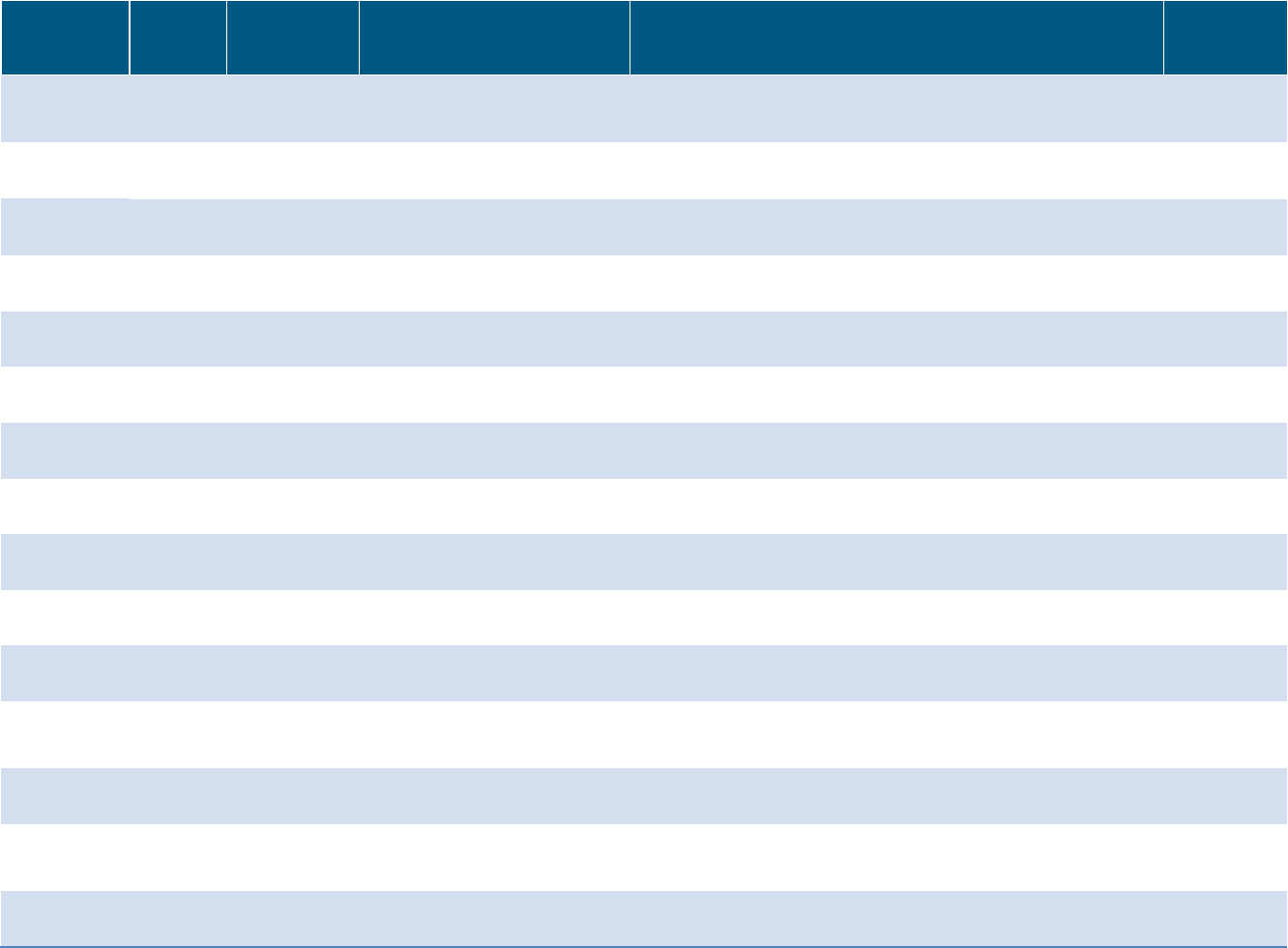
Attachment
Number
Page
Number
LATF VM
Amendment
Valuation Manual
Reference
Valuation Manual Amendment Proposal Descriptions
LATF
Adoption
Date
1
3
2019-33
Sect II, VM-20, VM-51
Clarify the definition of individually underwritten life insurance
and the applicability of PBR requirements for group contracts
with individual risk selection issued under insurance certificates.
7/1/2021
2
11
2020-02
VM-20 Section 2.H and new
Section 2.I
Provide clearer guidance on the boundaries of a company’s
latitude in following VM-20 steps
10/29/2020
3
15
2020-03
VM-20 Section 3.B.3
Clarify NPR calculation requirements
8/27/2020
4
19
2020-08
VM-20 Section 9.C.2.d.vi.
Clarify and introduce a third permissible technique for the
calculation of company experience rates.
12/3/2020
5
22
2020-09
VM Section II, Subsection 1.D
Modify Life PBR Exemption
11/5/2020
6
25
2020-10
VM-20, VM-31
Mortality improvement
6/10/2021
7
35
2020-11
VM Section II, Subsection
1.D.4
Modify Life PBR Exemption-Part 2
2/11/2021
8
37
2020-13
VM-20, Sec 7.D.3
Asset Collar
4/8/2021
9
38
2021-03
VM-21, Section 6.C.5:
Update the reference to required minimum distribution age
5/6/2021
10
41
2021-04
VM-02 Section 3.A
Clarify the language in the previously adopted edits to VM-02 to
avoid any potential circularity.
4/29/2021
11
43
2021-05
VM-01,VM-20 7.E,VM-21
4.D, VM-31 3.D.6, 3.F.6
Clarify modeled company investment strategy and comparison to
the alternative investment strategy
5/20/2021
12
48
2021-06
VM-50, VM-51
Revise VM-50 and VM-51 to allow experience reporting a
reinsurer or third-party administrator and a correction to VM-51
Appendix 4
5/27/2021
13
91
2021-07
VM-20 Section 2.A.3, 3.A, 3.B
3.C and 6.B
Clarify ULSG NPR Calculation Requirements
6/24/2021
14
99
2021-09
VM-21 Section 1.E (new), 3.H
(new), VM-31 Section 3.E.1,
3.F.2.e
Update VM-31 materiality language to be consistent new section
of VM-21 addressing materiality.
7/1/2021
15
102
2021-10
VM 51 App 4
Remove "at issue" from Smoker Status data element name to
allow for use of the smoker status at the time of data submission
6/24/2021
W:\National Meetings\2021\Summer\TF\LA\Adoptions\Documents for the A Committee\VM chart for A Committee 07_19_21.docx
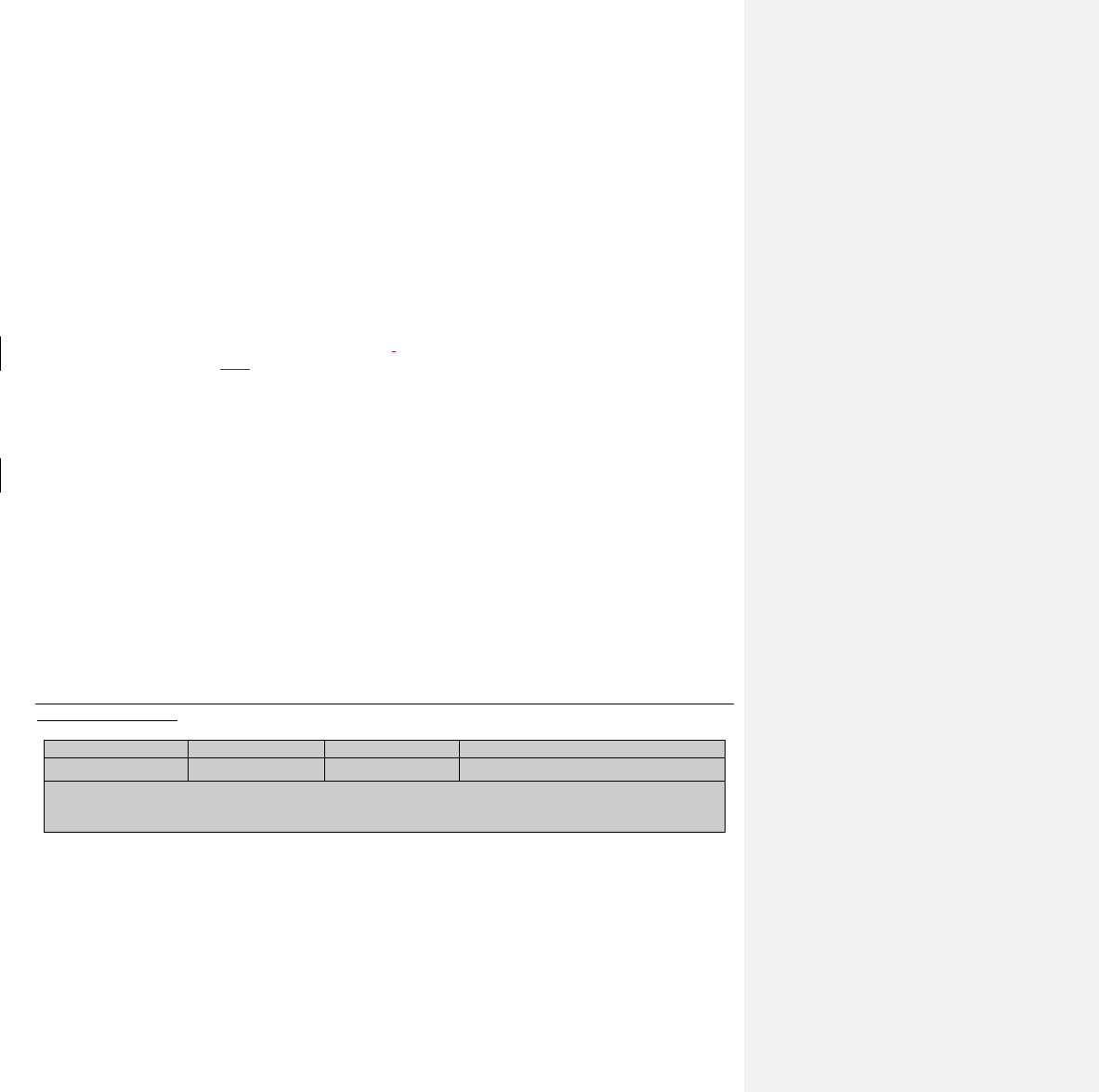
© 2010 National Association of Insurance Commissioners 1
Life Actuarial (A) Task Force/ Health Actuarial (B) Task Force
Amendment Proposal Form*
1. Identify yourself, your affiliation and a very brief description (title) of the issue.
American Academy of Actuaries, Life Reserves Work Group
Addition of language to clarify the definition of individually underwritten life insurance and the
applicability of Principle-Based Reserve (PBR) requirements for group insurance contracts with individual
risk selection issued under insurance certificates.
2. Identify the document, including the date if the document is “released for comment,” and the location in
the document where the amendment is proposed:
January 1, 2021, version of the Valuation Manual, with the revisions to APF 2020-11 (adopted by LATF
on 2/11/21) shown in blue text.
3. Show what changes are needed by providing a red-line version of the original verbiage with deletions and
identify the verbiage to be deleted, inserted or changed by providing a red-line (turn on “track changes” in
Word®) version of the verbiage. (You may do this through an attachment.)
See Appendix
All proposed changes specific to this amendment proposal are shown in red text.
4. State the reason for the proposed amendment? (You may do this through an attachment.)
Individual insurance certificates issued under a group contract which utilize an individual risk selection
process, pricing, premium rate structures and product features are similar to individual life insurance
policies. They are currently excluded from VM-20 because they are filed under a group contract, but they
should be subject to VM-20 due to this similarity. See Appendix.
* This form is not intended for minor corrections, such as formatting, grammar, cross–references or spelling. Those
types of changes do not require action by the entire group and may be submitted via letter or email to the NAIC
staff support person for the NAIC group where the document originated.
NAIC Staff Comments:
Dates: Received
Reviewed by Staff
Distributed
Considered
3/19/19
Notes: APF 2019-33
W:\National Meetings\2010\...\TF\LHA\
© 2021 National Association of Insurance Commissioners
3

© 2010 National Association of Insurance Commissioners 2
Appendix
Issue
Certain contracts issued under a master group contract require individual risk selection in order to qualify for
issuance of the group insurance certificate; the certificates have similar acquisition approaches, provisions,
certificate-holder rights, pricing, and risk classification; and they are managed in a similar manner as individual
ordinary life insurance contracts. These individual certificates should follow the same reserve requirements as other
individual life contracts of the same product type. Therefore, a change is needed within the Valuation Manual to
bring these individual certificates into scope of VM-20.
Six changes are recommended:
1) Within the Reserve Requirements section (Section II), change the minimum reserve requirements to also
apply to group life contracts which, other than the difference between issuing a policy and issuing a group
certificate, have the same or mostly similar contract provisions, risk selection process, and underwriting as
individual ordinary life contracts (Section II, subsection 1.D);
2) Within the Reserve Requirements section (Section II), add a transition period for individual group
certificates issued on or before 1/1/2024 (Section II, subsections 1.F.1 and 1.F.2);
3) Within the Reserve Requirements section (Section II), add language and guidance note to subsection 1.G
and the corresponding footnote to include premiums from group life contracts which have individual
certificates that were issued using individual risk selection processes (Section II, subsection 1.G.1, footnote,
and guidance note) and to clarify the Calculation for Exemption (Section II, subsection 1.G.2). Comment
notes need to refer to NAIC Blanks (E) Working Group to update the PBR Supplement;
4) Add new paragraph, VM-20 Section 1.B (and reformat to make current paragraph Section 1.A) to clarify
group life certificates issued using individual risk selection processes, including a definition and
requirements to be met, are subject to the requirements of VM-20;
5) Add guidance note after first sentence in VM-20 Section 2.A.1 that group life certificates that meet the
definition for individual risk selection process use the same VM-20 Reserving Categories as defined in
Section 2;
6) Draft referral to the NAIC Blanks (E) Working Group to revise the VM-20 Reserves Supplement, Part 2 to
report premiums for total Group Life and Group Life with certificates subjected to an individual risk
selection process and which meet all of the conditions as defined in VM-20 Section 1.B separately.
© 2021 National Association of Insurance Commissioners
4

© 2010 National Association of Insurance Commissioners 3
VM Changes 1, 2 and 3 – II. Reserve Requirements
II. Reserve Requirements
This section provides the minimum reserve requirements by type of product, as set forth in the seven subsections
below, as follows:
(1) Life Insurance Products
(2) Annuity Products
(3) Deposit-Type Contracts
(4) Health Insurance Products
(5) Credit Life and Disability Products
(6) Riders and Supplemental Benefits
(7) Claim Reserves
All reserve requirements provided by this section relate to business issued on or after the operative date of the
Valuation Manual. All reserves must be developed in a manner consistent with the requirements and concepts
stated in the Overview of Reserve Concepts in Section I of the Valuation Manual.
Subsection 1: Life Insurance Products
A. This subsection establishes reserve requirements for all contracts issued on and after the operative date of
the Valuation Manual that are classified as life contracts as defined in SSAP No. 50 in the AP&P Manual,
with the exception of annuity contracts and credit life contracts. Minimum reserve requirements for
annuity contracts and credit life contracts are provided below in subsection 2 and subsection 5,
respectively.
B. Minimum reserve requirements for variable and nonvariable individual life contracts—excluding
guaranteed issue life contracts, preneed life contracts, industrial life contracts, and policies of companies
exempt pursuant to the life PBR exemption in in paragraph D below—subsection 1.G are provided by
VM-20, Requirements for Principle-Based Reserves for Life Products, except for election of the transition
period in
paragraph C below subsection 1.F.2 below. For this purpose, joint life policies are considered
individual life.
C. Minimum reserve requirements of VM-20 are considered principle-based valuation requirements for
purposes of the Valuation Manual.
D. Minimum reserve requirements for individual certificates under group life contracts (regardless of the
issue date of the master group life contract) which meet all the requirements in VM-20 Section 1.B are
provided by VM-20, except for election of the transition period in subsection 1.F.1 below.
E. Minimum reserve requirements for life contracts not subject to VM-20 are those pursuant to applicable
requirements in VM-A and VM-C. For guaranteed issue life contracts issued after Dec. 31, 2018, mortality
tables are defined in VM Appendix M, Mortality Tables (VM-M), and the same table shall be used for
reserve requirements as is used for minimum nonforfeiture requirements as defined in VM-02, Minimum
Nonforfeiture Mortality and Interest.
Guidance Note: The terms “policies” and “contracts” are used interchangeably.
© 2021 National Association of Insurance Commissioners
5
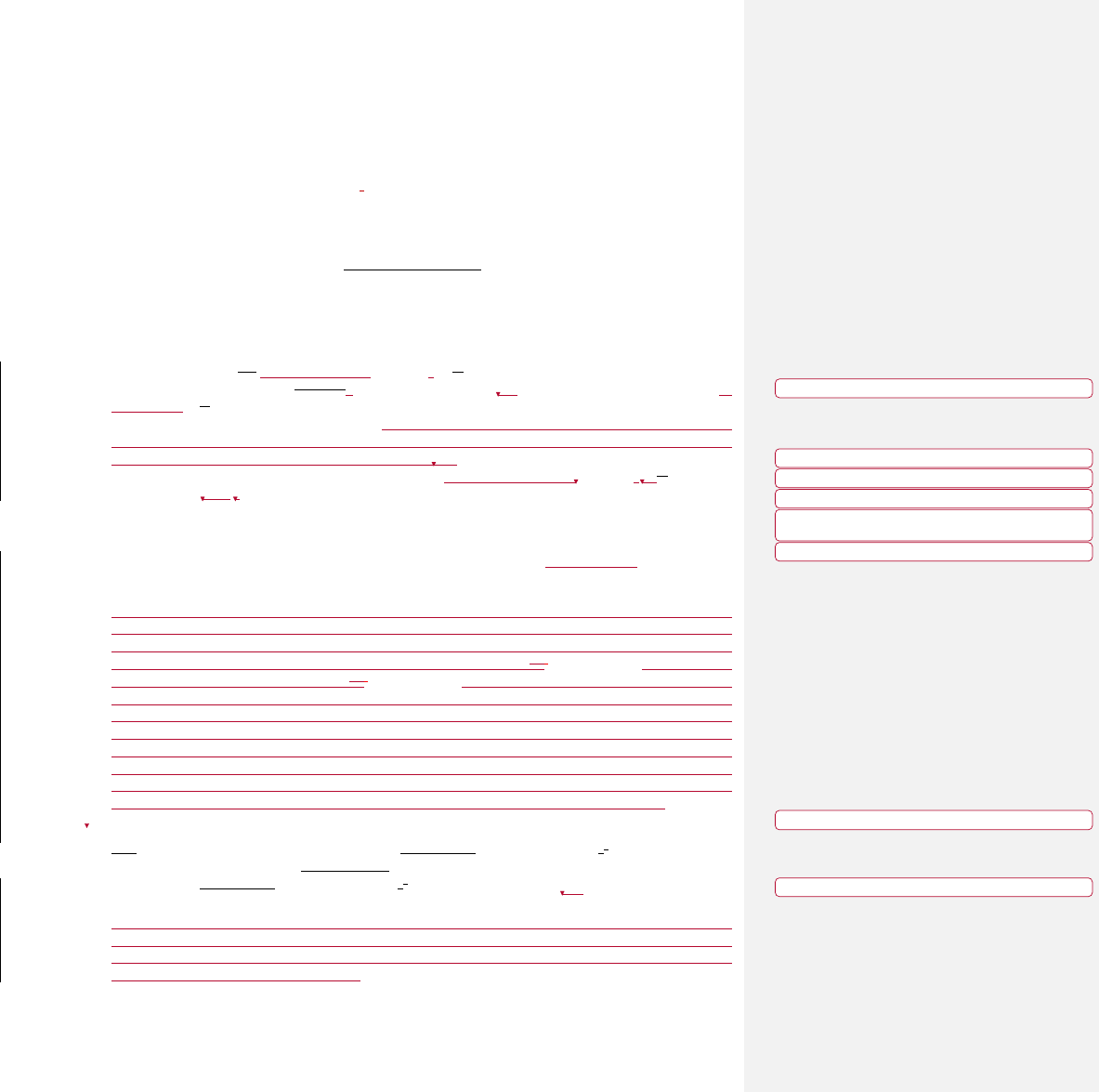
© 2010 National Association of Insurance Commissioners 4
F. A company may elect to establish minimum reserves pursuant to applicable requirements in VM-A and
VM-C for:
1. Business described in subsection 1.D above and issued on or after the operative date of the Valuation
Manual and prior to 1/1/2024.
2. Business not described subsection 1.D otherwise subject to VM-20 requirements and issued during
the first three years following the operative date of the Valuation Manual.
A company electing to establish reserves using the requirements of VM-A and VM-C may elect to use the
2017 Commissioners’ Standard Ordinary (CSO) Tables as the mortality standard following the conditions
outlined in VM-20 Section 3. If a company during the three years elects to apply VM-20 to a block of such
business, then a company must continue to apply the requirements of VM-20 for future issues of this business.
G. Life PBR Exemption
1. A company meeting the at least one of the conditions in Dsubsection 1.G.2 below may file a statement
of exemption for individual ordinary life insurance policies or certificates, except for policies or
certificates in Dsubsection 1.G.3 below, issued directly or assumed during the current calendar year,
that would otherwise be subject to VM-20. If a company has no business issued directly or assumed
during the current calendar year that would otherwise be subject to VM-20, a statement of exemption
is not required. For a filed statement of exemption, the statement must be filed with the domiciliary
commissioner prior to July 1 of that year certifying that at least one of the two conditions in Dsubsection
1.G.2 was met and the statement of exemption must also be included with the NAIC filing for the
second quarter of that year.
The domiciliary commissioner may reject such statement prior to September 1 and require the company
to follow the requirements of VM-20 for the ordinary life policies or certificates covered by the
statement.
If a filed statement of exemption is not rejected by the domiciliary commissioner, the filing of
subsequent statements of exemption is not required as long as the company continues to qualify for the
exemption; rather, ongoing statements of exemption for each new calendar year will be deemed to not
be rejected, unless: 1) the company does not meet either condition in D. subsection 1.G.2 below, 2) the
policies or certificates contain those in D. subsection 1.G.3 below, or 3) the domiciliary commissioner
contacts the company prior to Sept. 1 and notifies them that the statement of exemption is rejected. If
any of these three events occur, then the statement of exemption for the current calendar year is rejected
and a new statement of exemption must be filed and not rejected in order for the company to exempt
additional policies or certificates. In the case of an ongoing statement of exemption, rather than include
a statement of exemption with the NAIC filing for the second quarter of that year, the company should
enter “SEE EXPLANATION” in response to the Life PBR Exemption supplemental interrogatory and
provide as an explanation that the company is utilizing an ongoing statement of exemption.
2. Condition for Exemption:
a. The company has less than $300 million of ordinary lifeexemption premiums
1
, and if the company
is a member of an NAIC group of life insurerswhich includes other life insurance companies, the group
has combined ordinary lifeexemption premiums
1
of less than $600 million; or
The only new policies or certificates that would otherwise be subject to VM-20 being issued or assumed
by the company are due to election of policy benefits or features from existing policies or certificates
valued under VM-A and VM-C and the company was exempted from, or otherwise not subject to, the
requirements of VM-20 in the prior year.
Exemption premium is determined as follows:
Deleted: and
Deleted: Such a
Deleted: the
Deleted: of
Deleted: based on premiums from the prior calendar year
annual statement.
Deleted: T
Deleted: ¶
Deleted: .
© 2021 National Association of Insurance Commissioners
6

© 2010 National Association of Insurance Commissioners 5
a. The amount reported in the prior calendar year life/health annual statement, Exhibit 1, Part 1,
Column 3 (“Ordinary Life Insurance”), line 20.1; plus
b. The portion of the amount in the prior calendar year life/health annual statement, Exhibit 1, Part 1,
Column 3 (“Ordinary Life Insurance”), line 20.2 assumed from unaffiliated companies; minus
c. Amounts included in either (a) or (b) that are associated with guaranteed issue insurance policies
and/or preneed life insurance policies; minus
d. Amounts included in either (a) or (b) that represent transfers of reserves in force as of the effective
date of a reinsurance assumed transaction; plus
e. Amounts of premium for individual life certificates issued under a group life certificate which meet
the conditions defined in VM-20, Section 1.B, and that are not included in either (a) or (b).
Guidance Note:
(i) Definitions of preneed and guaranteed issue insurance policy are in VM-01.
(ii) For statements of exemption filed for calendar year 2022 and beyond, the amount in subsection 2.e
was reported in the prior calendar year life/health annual statement, VM-20 Reserve Supplement, Part
2, if applicable.
3. Policies and Certificates Excluded from the Life PBR Exemption:
a. Universal life with secondary guarantee (ULSG) policies or certificates, or policies or certificates
– other than ULSG – that contain a rider with a secondary guarantee, in which the secondary
guarantee does not meet the VM-01 definition of a “non-material secondary guarantee.”
4. Each exemption, or lack of an exemption, outlined in D. subsection 1.G.1 – D. subsection 1.G.3 above
applies only to policies or certificates issued or assumed in the current year, and it applies to all future
valuation dates for those policies or certificates. However, if policies or certificates did not qualify for
the Life PBR Exemption during the year of issue but would have qualified for the Life PBR Exemption
if the current Valuation Manual requirements had been in effect during the year of issue, then the
domiciliary commissioner may allow an exemption for such policies or certificates. The minimum
reserve requirements for the ordinary life policies, including individual certificates under group life
contracts which meet all the requirements in VM-20 Section 1.B, subject to the exemption are those
pursuant to applicable methods required in VM-A and VM-C using the mortality as defined in VM-
20 Section 3.C.1 and VM-M Section 1.H.
VM Change 4 – VM-20: Requirements for Principle-Based Reserves for Life Products
VM-20: Requirements for Principles-Based Reserves for Life Products
Section 1: Purpose
A. These requirements establish the minimum reserve valuation standard for individual life insurance policies
issued on or after the operative date of the Valuation Manual and subject to a principle-based valuation
with an NPR floor under Model #820. These requirements constitute the Commissioners Reserve Valuation
Method (CRVM) for policies of individual life insurance.
© 2021 National Association of Insurance Commissioners
7
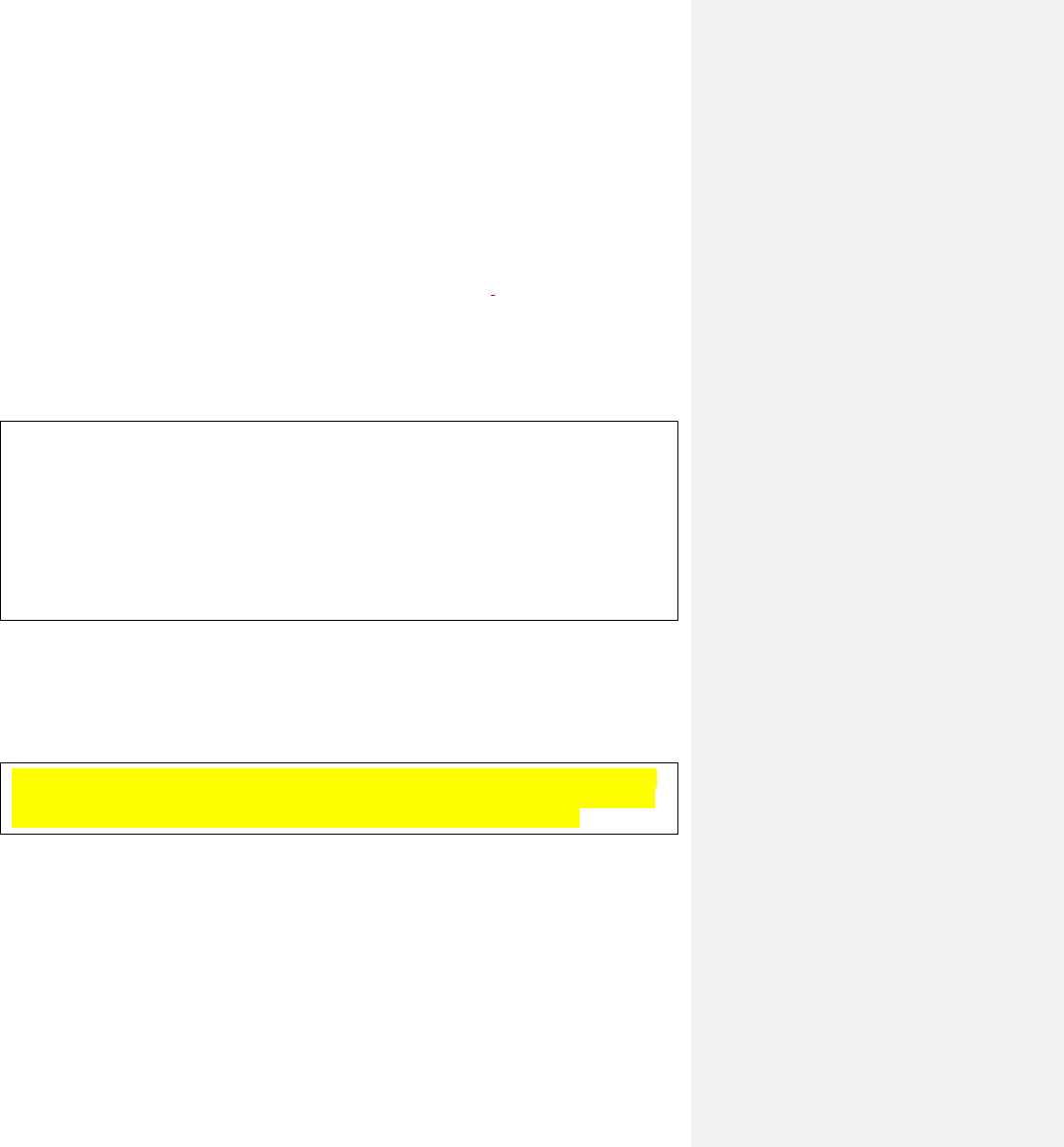
© 2010 National Association of Insurance Commissioners 6
B. Individual life certificates under a group life contract shall be subject to the requirements of VM-20 if all
of the following are met. These requirements constitute the Commissioners Reserve Valuation Method
(CRVM) for such certificates.
1. An individual risk selection process, defined as follows, is used to obtain group life insurance
coverage;
An individual risk selection process is one that is based on characteristics of the insured(s) beyond sex,
gender, age, tobacco usage, and membership in a particular group. This may include, but is not limited to,
completion of an application (beyond acknowledgement of membership to the group, sex, gender and age),
questionnaire(s), online health history or tele-interview to obtain non-medical and medical or health history
information, prescription history information, avocations, usage of tobacco, family history, or submission
of fluids such as blood, Home Office Specimens (HOS), or oral fluid. The resulting risk classification is
determined based on the characteristics of the individual insured(s) rather than the group, if any, of which
it is a member (e.g., employer, affinity, etc.). The individual certificate holder is charged a premium rate
based solely on the individual risk selection process and not on membership in a specific group.
2. The individual certificates utilize premiums or cost of insurance schedules and charges based on
the individual applicant’s issue age, duration from underwriting, coverage amount and risk classification
and there is a stated or implied schedule of maximum gross premiums or net cash surrender value required
in order to continue coverage in force for a period in excess of one year;
3. The group master contract is designed, priced, solicited, and managed similar to individual ordinary
life insurance policies rather than specific to the group as a whole;
4. The individual certificates have similar acquisition approaches, provisions, certificate-holder
rights, pricing, and risk classification to individual ordinary life insurance contracts.
5. The individual certificates are issued on or after the operative date of the Valuation Manual except
election of the transition period in Section 2, subsection 1.F.1.
Guidance Note: The use of evidence of insurability does not by itself constitute an individual risk
selection process. Use of information obtained from a census or question(s) regarding gender,
occupation, age, income and/or tobacco usage solely for purposes of determining a rate classification
does not by itself qualify a group as having used an individual risk selection process. Group insurance
where the underwriting based on the characteristics of the group and census data but where some
individuals are subjected to individual risk selection as a result of compensation level, age, an existing
medical condition or impairment, late entry into the group, failure of the group to meet minimum
participation requirements or voluntary buy-up of increased coverage does not meet the definition of an
individual risk selection process.
Guidance Note: Coverage amount does not imply a requirement for banding of premiums or
charges but rather rates or charges that are multiplied by number of units of coverage of face
amount (or net amount at risk) per $1,000 to obtain the actual premium or charge.
© 2021 National Association of Insurance Commissioners
8
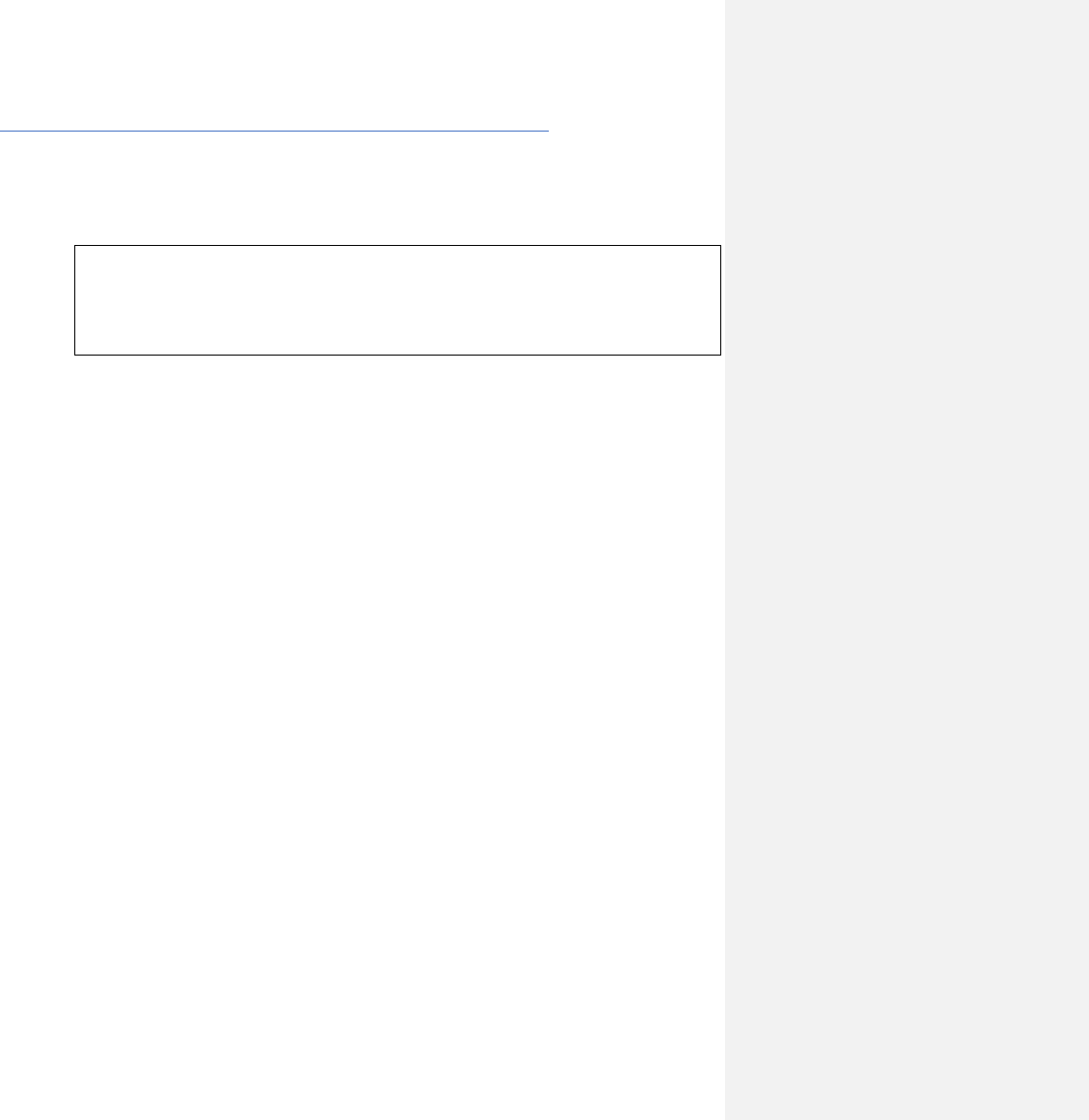
© 2010 National Association of Insurance Commissioners 7
VM Change 5 - VM-20: Requirements for Principle-Based Reserves for Life Products
Section 2: Minimum Reserve
A. All policies subject to these requirements shall be included in one of the VM-20 Reserving
Categories, as specified in Section 2.A.1, Section 2.A.2 and Section 2.A.3 below.
Guidance Note: Since group insurance subject to an individual risk selection process and meeting all
the requirements in Section 1.B is subject to VM-20 requirements, Section 2.A shall apply—meaning
that any such contracts will be included in one of the VM-20 Reserving Categories defined by Section
2.A.1, Section 2.A.2, and 2.A.3. All requirements in VM-31 which apply to a VM-20 Reserving
Category shall apply to any group insurance subject to individual risk selection that has been included
in that VM-20 Reserving Category.
The company may elect to exclude one or more groups of policies from the stochastic reserve
calculation and/or the deterministic reserve calculation. When excluding a group of policies from a
reserve calculation, the company must document that the applicable exclusion test defined in Section 6
is passed for that group of policies. The minimum reserve for each VM-20 Reserving Category is
defined by Section 2.A.1, Section 2.A.2 and Section 2.A.3, and the total minimum reserve equals the
sum of the Section 2.A.1, Section 2.A.2 and Section 2.A.3 results below, defined as:
© 2021 National Association of Insurance Commissioners
9
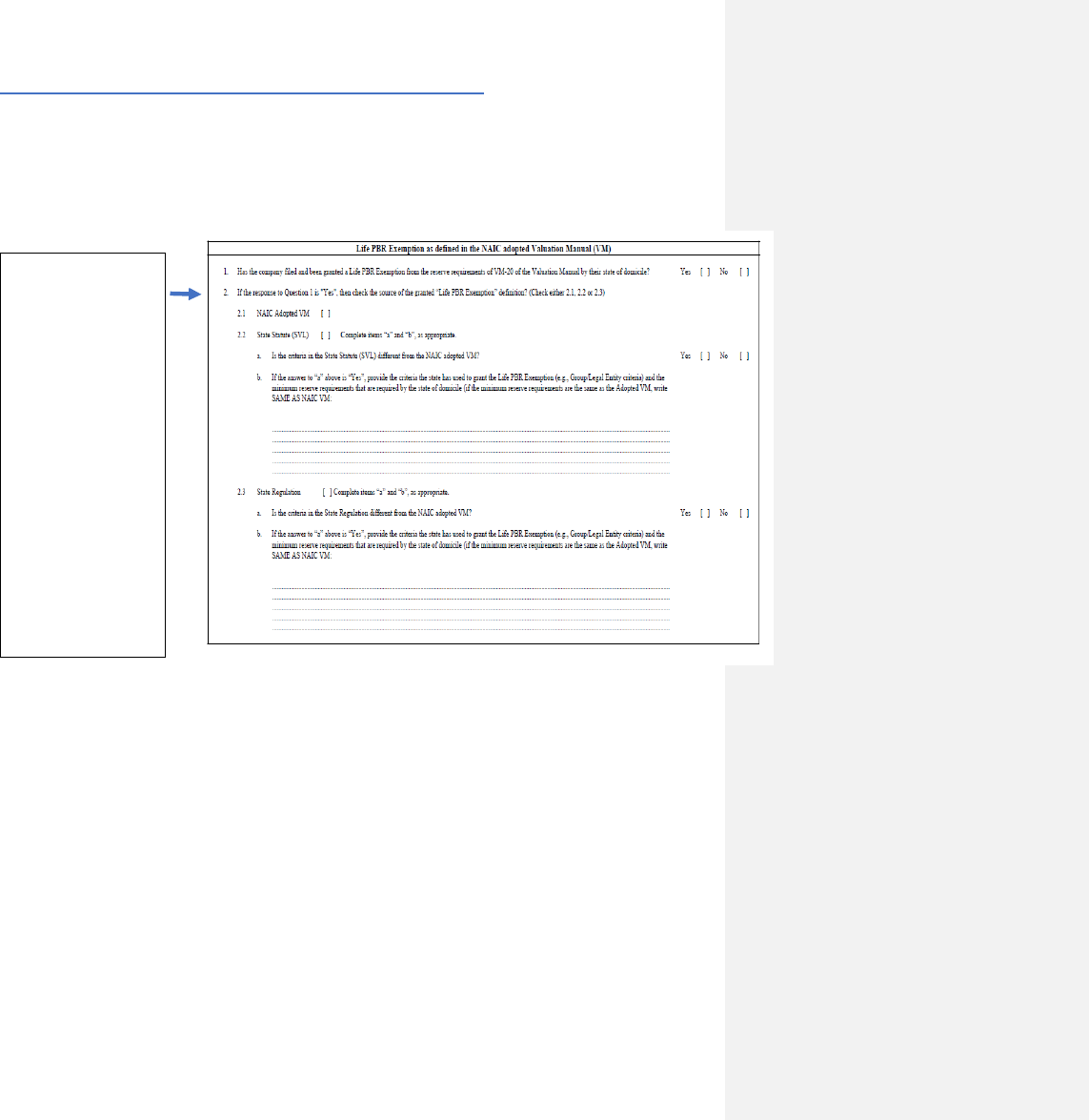
© 2010 National Association of Insurance Commissioners 8
VM Change 6 – VM-20 Reserves Supplement, Part 2: Life PBR Exemption
Refer to NAIC Blanks (E) Working Group, request for modification to the supplemental report for the Life PBR
Exemption, to show the premiums for group life that utilized an individual risk selection process and meets all of
the requirements in VM-20 Section 1.B. as these premiums are currently grouped together with other group
insurance in Exhibit 1. As there are other instances where the ordinary life premiums are not included in the
determination of the Life PBR Exemption (e.g., for guaranteed issue policies), it may be useful to request addition
of the breakdown of premiums used to determine the exemption.
Possible insertion
between questions 1
and 2 for disclosure
of premiums used in
the determination of
eligibility for the
Life PBR
exemption, split by
ordinary life and
group subject to an
individual risk
selection process
and meeting all of
the requirements in
VM-20 Section 1.B.
© 2021 National Association of Insurance Commissioners
10

Life Actuarial (A) Task Force/ Health Actuarial
(B) Task Force
Amendment Proposal Form
1. Identify yourself, your affiliation and a very brief description (title) of the issue.
Joint submission by NAIC staff and Staff of Office of Principle-Based Reserving, California Department
of Insurance – Clarify areas of confusion relating to the topic of materiality.
2. Identify the document, including the date if the document is “released for comment,” and
the location in the document where the amendment is proposed:
Valuation Manual (January 1, 2021 edition), VM-20 Section 2.H, new Section 2.I, and Section 7.E.1.g
3. Show what changes are needed by providing a red-line version of the original verbiage with
deletions and identify the verbiage to be deleted, inserted or changed by providing a red-line
(turn on “track changes” in Word®) version of the verbiage. (You may do this through an
attachment.)
See attached Appendix.
4. State the reason for the proposed amendment? (You may do this through an attachment.)
See attached Appendix.
.
NAIC Staff Comments:
Dates: Received
Reviewed by Staff
Distributed
Considered
09/21/20
RM
APF 2020-02 rev. 09/21/20
W:\National Meetings\2010\...\TF\LHA\
© 2015 National Association of Insurance Commissioners
© 2021 National Association of Insurance Commissioners
11

Appendix
ISSUE:
Skipping steps in VM-20 is not allowed on grounds of immateriality. Some companies are skipping
some VM-20 requirements altogether, without providing a simplification, approximation, or modeling
technique that satisfies the VM-20 Section 2.G requirement that such simplifications neither materially
understate nor downwardly bias the reserves. Simply skipping portions of the requirements, such as not
computing an NPR, or not computing the DR and/or SR when exclusion tests have not been performed,
inherently bias the reserve downward since their omission can only be neutral or decrease the resulting
reserve. Without computing even a simplified model for Section 2.G analysis that shows there is not a
decrease in the final reserve, this makes the skipping of the step violate Section 2.G. This APF clarifies
that these types of omissions are not allowed. This has always been the case, but perhaps needs more
emphasis in the Valuation Manual.
SECTION:
VM-20 Section 2.H and new Section 2.I, and VM-20 Section 7.E.1.g
REDLINE:
VM-20 Section 2.H
H. The company shall establish, for the DR and SR, a standard containing the criteria for
determining whether an assumption, risk factor or other element of the principle-based
valuation has a material impact on the size of the reserve. This standard shall be applied
when identifying material risks under VM-20 Section 9.B.1. Such a standard shall also
apply to the NPR with respect to VM-20 Section 2.G.
Guidance Note:
For example, the standard may be expressed as an impact of more than X dollars or Y% of the
reserve, whichever is greater, where X and Y are chosen in a manner that is meant to stand the test
of time and not need periodic revision.
The standard is based on the impact relative to the size of the NPR, DR and SR as opposed to the
impact relative to the overall financial statement (e.g., total company reserves or surplus).
Reviewing items that may lead to a material misstatement of the financial statement in the current
year is appropriate in its own context, but it is not appropriate for identifying material risks for
PBR, which itself is an emerging risk.
Note that the criteria apply to the NPR, DR and SR, and not just the final reported reserve. For
example, if the DR is less than the NPR, the criteria still apply to the DR.
The standard also applies to exclusion tests, as they are an element of the principle-based valuation.
© 2021 National Association of Insurance Commissioners
12
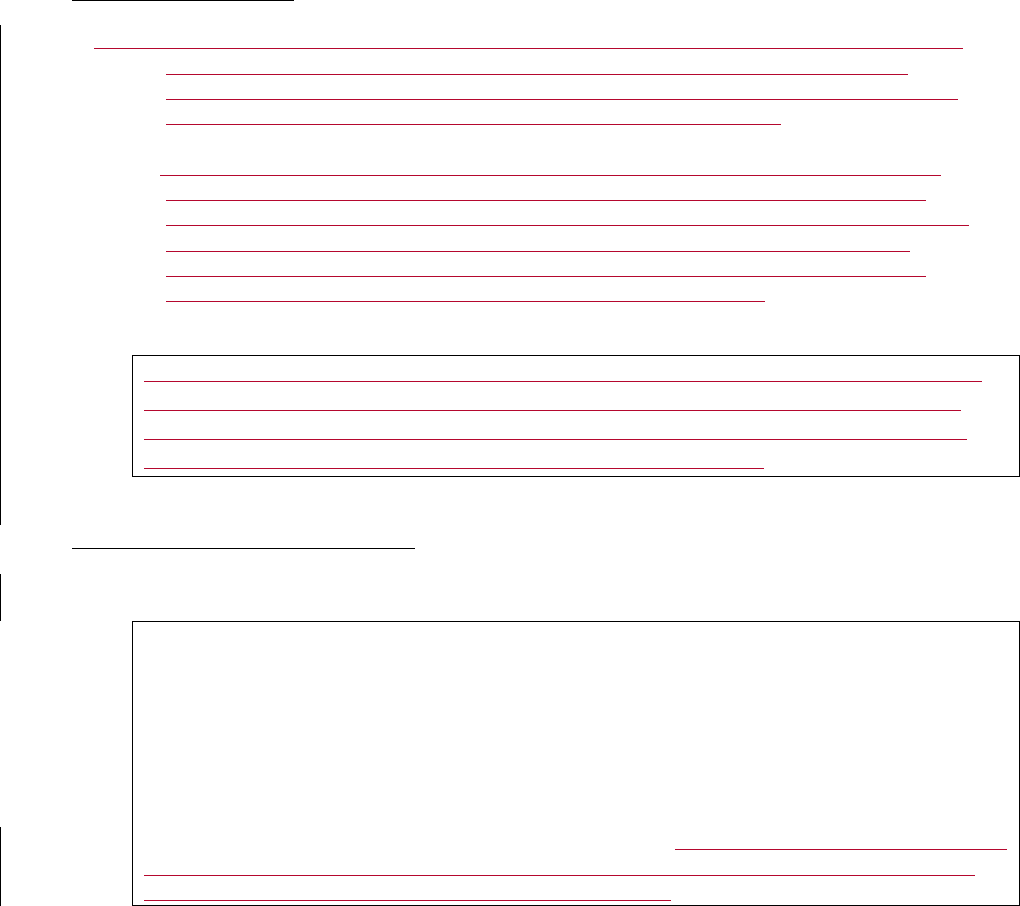
(new) VM-20 Section 2.I
I. Section 2.G and Section 2.H provide companies some flexibility in assumption setting and
modeling methodologies, but they do not allow for skipping mandated steps without
providing a valid approximation, simplification, or modeling technique under Section 2.G
that neither materially understates nor downwardly biases the reserve.
Examples of omissions that would not satisfy VM-20 Section 2.G: not computing even a
simplified NPR, not computing even a simplified DR or SR without having passed the
relevant exclusion test(s), omitting prescribed mortality margins, not establishing any lapse
margins, not building even a simplified asset model for the DR, using the alternative
investment strategy without first determining that it produces a higher reserve than the
company investment strategy, and ignoring post-level term losses.
Guidance Note: The issue here is not the use of approximations; it is about skipping mandated
VM-20 requirements. Thus, for example, this does not rule out the use of a relatively simple
asset model that is acceptable pursuant to VM-20 Section 7.E.1.a, nor the judicious use of the
previous year’s assumption development work to save time and effort.
VM-20 Section 7.E.1.g Guidance Note
Guidance Note: VM-31 requires a demonstration of compliance with VM-20 Section 7.E.1.g. In
many cases, particularly if the model investment strategy does not involve callable assets, it is
expected that the demonstration of compliance will not require running the reserve calculation
twice. For example, an analysis of the weighted average net reinvestment spread on new
purchases by projection year (gross spread minus prescribed default costs minus investment
expenses) of the model investment strategy compared to the weighted average net reinvestment
spreads by projection year of the alternative strategy may suffice. The assumed mix of asset
types, asset credit quality or the levels of non-prescribed spreads for other fixed income
investments may need to be adjusted to achieve compliance. Or, the company may be able to rely
on a previous year’s determination as to which strategy produces a higher reserve, if the assets
and strategy have not changed very substantially since then.
© 2021 National Association of Insurance Commissioners
13
REASONING:
Some companies have mistakenly believed that it was permissible to skip certain significant steps
outlined in VM-20, without using a valid approximation or simplification that they have shown does not
materially understate or bias reserves in a downward direction.
Note: Comment letters were received on an earlier draft of this APF, in response to which this newer
version has eliminated any mention of PIMR and has made it clearer that a simplified asset model may
in some circumstances be acceptable and that a full-blown run of both the actual investment strategy
and the alternative investment strategy is not necessarily something that has to be done every year.
© 2021 National Association of Insurance Commissioners
14
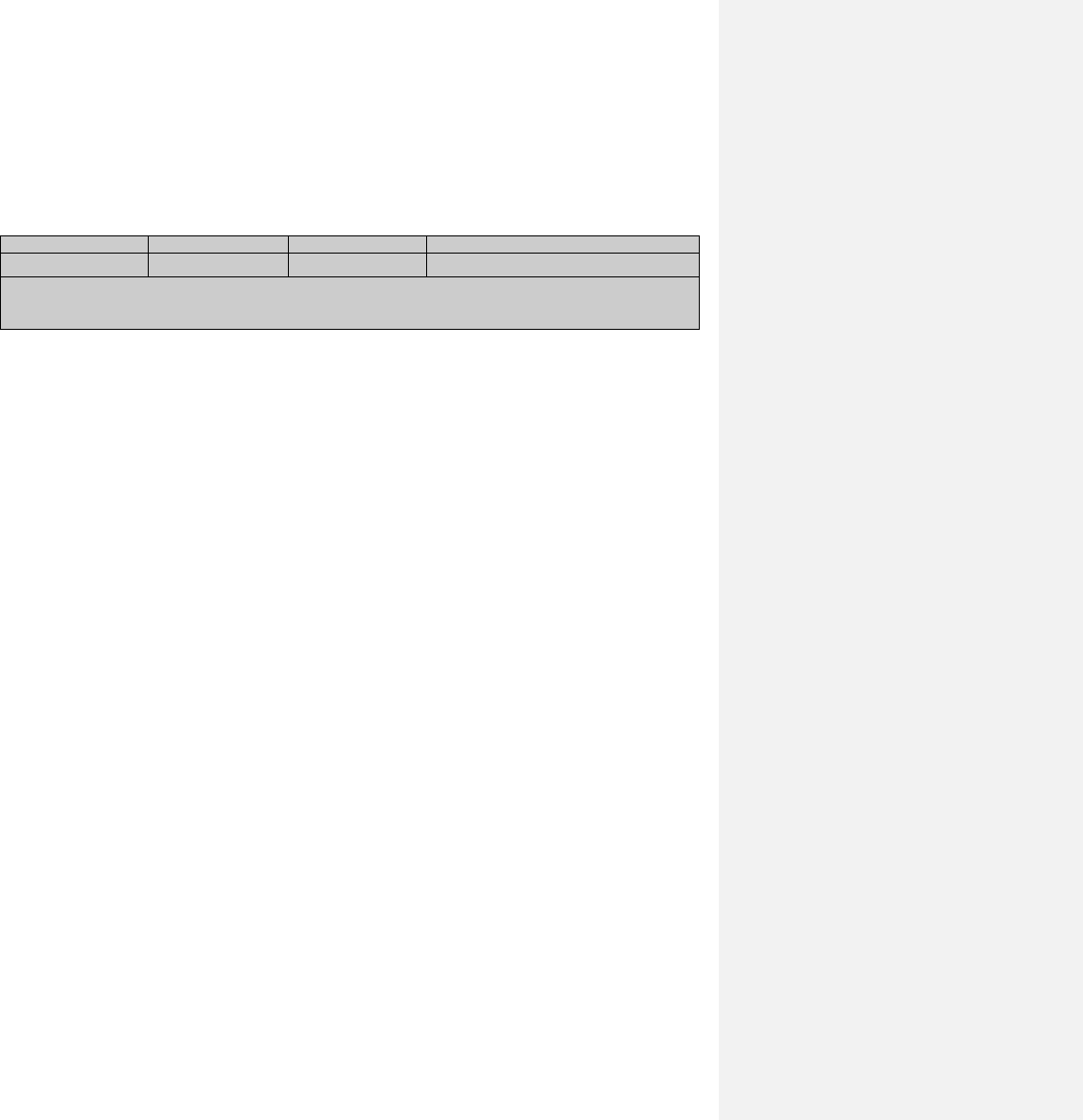
Dates: Received
Reviewed by Staff
Distributed
Considered
2/18/20
RM
Notes: APF 2020-03 revised 2/26/20 Exposed 2/27/20, Revised 3/31/20
Life Actuarial (A) Task Force/ Health Actuarial (B) Task Force
Amendment Proposal Form*
1. Identify yourself, your affiliation and a very brief description (title) of the issue.
Identification:
Rachel Hemphill, Texas Department of Insurance
Title of the Issue:
Clarify NPR calculation requirements.
2. Identify the document, including the date if the document is “released for comment,” and the location in
the document where the amendment is proposed:
VM-20 Section 3.B.1 – 3.B.3, and VM-20 Section 3.B.6.d.i
January 1, 2020 NAIC Valuation Manual
3. Show what changes are needed by providing a red-line version of the original verbiage with deletions and
identify the verbiage to be deleted, inserted or changed by providing a red-line (turn on “track changes” in
Word®) version of the verbiage. (You may do this through an attachment.)
See attached.
4. State the reason for the proposed amendment? (You may do this through an attachment.)
Clarify any confusion on whether more direct calculations of the NPR to reflect non-annual premium
modes, etc., are allowed. The current guidance note in Section 3.B.3 states that these may be reflected
either “directly or through adjusting accounting entries”. However, due to some confusion on this point, I
suggest emphasizing that more direct calculation methods are not prohibited. This is consistent with SSAP
51R, Paragraph 24:
24. Since terminal reserves are computed as of the end of a policy year and not the reporting date,
the terminal reserve as of policy anniversaries immediately prior and subsequent to the reporting
date are adjusted to reflect that portion of the net premium that is unearned at the reporting date.
© 2021 National Association of Insurance Commissioners
15
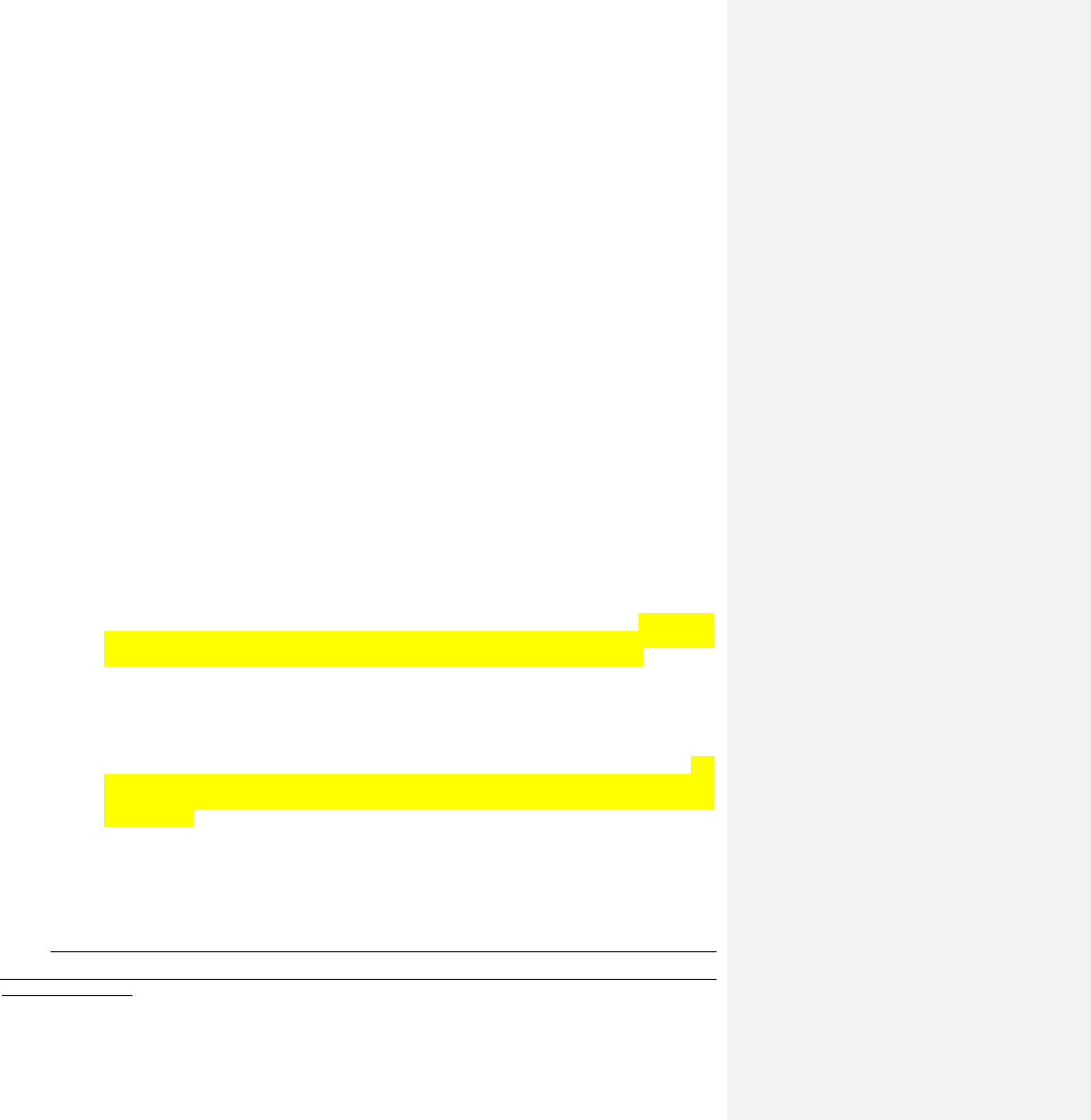
© 2010 National Association of Insurance Commissioners 1
This is generally accomplished using either the mean reserve method or the mid-terminal method
as discussed in paragraphs 25-28. Other appropriate methods, including an exact reserve
valuation, may also be used.
For re-exposure, to address both the question posed in the initial exposure of clearly reflecting both mean
and mid-terminal adjustments, as well as to address comments received, I recommend language consistent
with SSAP 51R, paragraph 24. SSAP 51R paragraphs 25-28 are referenced by paragraph 24. They are
provided below for completeness, and specific references for policies subject to the Valuation Manual are
highlighted.
Mean Reserve Method
25. Under the mean reserve method, the policy reserve equals the average of the terminal reserve
at the end of the policy year and the initial reserve (the initial reserve is equal to the previous year’s
terminal reserve plus the net annual valuation premium for the current policy year). When reserves
are calculated on the mean reserve basis, it is assumed that the net premium for a policy is collected
annually at the beginning of the policy year and that policies are issued ratably over the calendar
year.
26. However, as premiums are often received in installments more frequently than annually and
since the calculation of mean reserves assumes payment of the current policy year’s entire net
annual premium, the policy reserve is overstated by the amount of net modal premiums not yet
received for the current policy year as of the valuation date. As a result, it is necessary to compute
and report a special asset to offset the overstatement of the policy reserve.
27. This special asset is termed “deferred premiums.” Deferred premiums are computed by taking
the gross premium (or premiums) extending from (and including) the modal (monthly, quarterly,
semiannual) premium due date or dates following the valuation date to the next policy anniversary
date and subtracting any such deferred premiums that have actually been collected. Deferred
premium assets shall also be reduced by loading. Since the calculation of mean reserves assumes
payment of the current policy year’s entire net annual premium, deferred premium assets are
considered admitted assets to compensate for the overstatement of the policy reserve. For policies
subject to the Valuation Manual requirements, the deferred premium asset will continue to be
calculated for the net premium reserve component of the total principle-based reserve.
Mid-Terminal Method
28. Under the mid-terminal method, the policy reserves are calculated as the average of the
terminal reserves on the previous and the next policy anniversaries. These reserves shall be
accompanied by an unearned premium reserve consisting of the portion of valuation premiums
paid or due covering the period from the valuation date to the next policy anniversary date. For
policies subject to the Valuation Manual requirements, the adjustment to the unearned premium
reserve will continue to be calculated for the net premium reserve component of the total principle-
based reserve.
Since the guidance note at the end of Section 3.B.3 contains requirements and not just guidance, it should
be taken out of a guidance note. This requires moving the four terms to Section 3.B.1 and updating two
cross references in VM-20 Section 3.B.6.d.i.
* This form is not intended for minor corrections, such as formatting, grammar, cross–references or spelling. Those types of changes do not require action by
the entire group and may be submitted via letter or email to the NAIC staff support person for the NAIC group where the document originated.
NAIC Staff Comments:
W:\National Meetings\2010\...\TF\LHA\
© 2021 National Association of Insurance Commissioners
16
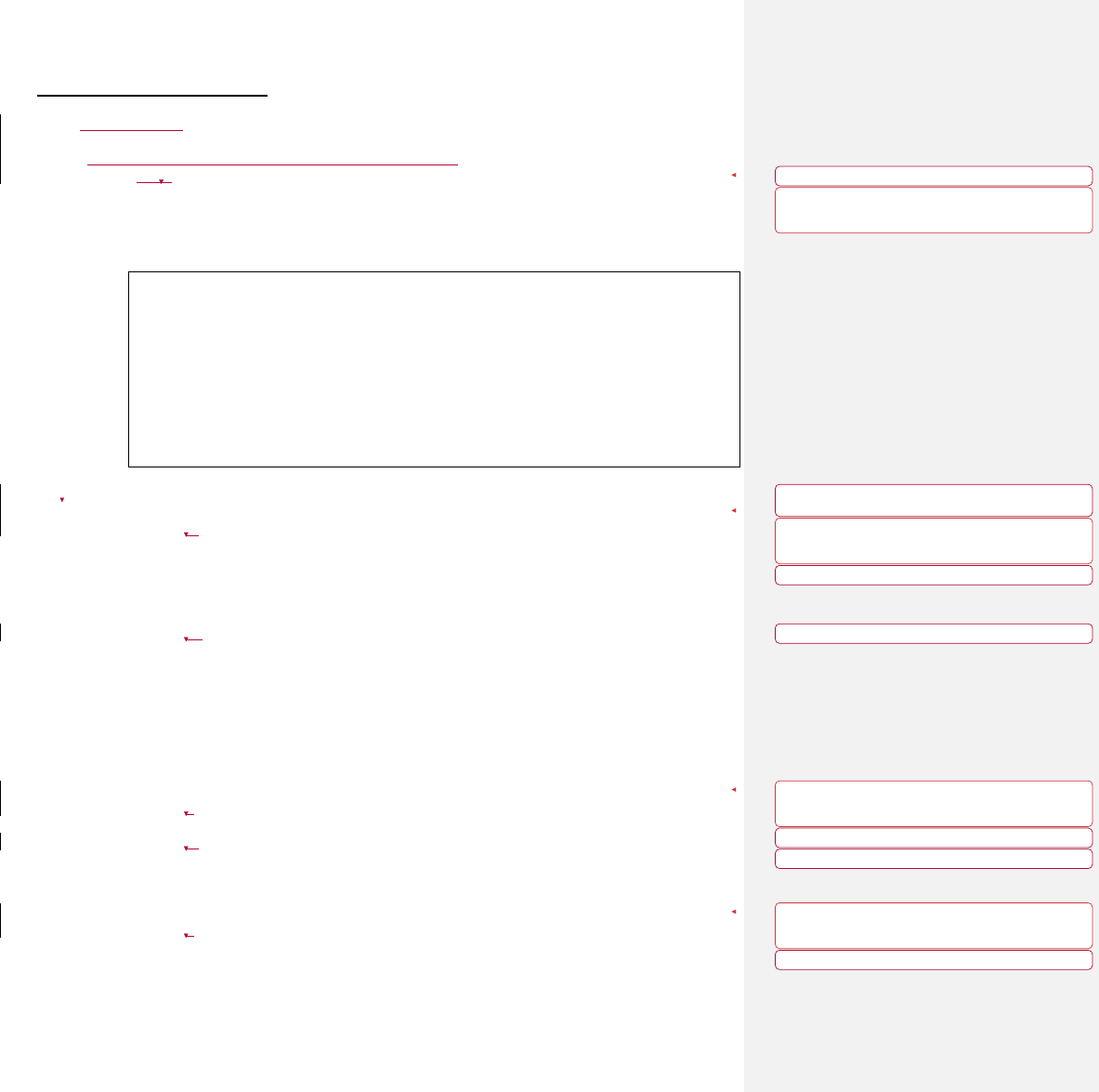
© 2010 National Association of Insurance Commissioners 2
VM-20 Section 3.B.1 – 3.B.3
B. NPR Calculation
1. For the purposes of Section 3, the following terms apply:
a. A policy with “multiple secondary guarantees” is one that: a) simultaneously has more than
one shadow account; b) simultaneously has more than one cumulative premium type of
guarantee; or c) simultaneously has at least one of each. A single shadow account with a variety
of possible end dates to the secondary guarantee, depending on the policyholder’s choice of
funding level, constitutes a single—not multiple—secondary guarantee.
Guidance Note:
Policy designs that are created simply to disguise guarantees or exploit a perceived loophole must
be treated in a manner similar to more typical product designs with similar guarantees. If a policy
contains multiple secondary guarantees, such that a subset of those secondary guarantees in
combination represent an implicit guarantee that would produce a higher NPR if that implicit
guarantee were treated as an explicit secondary guarantee of the policy, then the policy should be
treated as if that implicit guarantee were an explicit guarantee. For example, if there were a policy
with a “sequential secondary guarantee” where only one secondary guarantee applied at any given
point in time but with a series of secondary guarantees strung together with one period ending when
the next one began, the combined terms of the secondary guarantees would be regarded as a single
secondary guarantee.
b. The “fully funded secondary guarantee” at any time is:
i. For a shadow account secondary guarantee, the minimum shadow account fund value
necessary to fully fund the secondary guarantee for the policy at that time. For any policy
for which the secondary guarantee contractually cannot be fully funded in advance, this
shall be the present value of the contractually permitted premium stream that would fully
fund the guarantee at the earliest possible date (using the valuation interest rate and
mortality standard specified in Section 3.C).
ii. For a cumulative premium secondary guarantee, the amount of cumulative premiums
required to have been paid to that time that would result in no future premium requirements
to fully fund the guarantee, accumulated with any interest or accumulation factors per the
contract provisions for the secondary guarantee. For any policy for which the secondary
guarantee contractually cannot be fully funded in advance, this shall be the present value
of the contractually permitted premium stream that would fully fund the guarantee at the
earliest possible date (using the valuation interest rate and mortality standard specified in
Section 3.C).
c. The “actual secondary guarantee” at any time is:
i. For a shadow account secondary guarantee, the actual shadow account fund value at that
time.
ii. For a cumulative premium secondary guarantee, the actual premiums paid to that point
in time, accumulated with any interest or accumulation factors per the contract provisions
for the secondary guarantee.
d. The “level secondary guarantee” at any time is:
i. For a shadow account secondary guarantee, the shadow account fund value that would
have existed at that time assuming payment of the level gross premium determined
according to Section 3.B.6.c.i.
Deleted: For purposes of this section, a
Formatted: Numbered + Level: 2 + Numbering Style: a, b,
c, … + S
tart at: 1 + Alignment: Left + Aligned at: 1" +
Indent at: 1.25"
Deleted: For the purposes of Section 3, the following terms
apply: …
Formatted: Numbered + Level: 1 + Numbering Style: a, b,
c, … + S
tart at: 2 + Alignment: Left + Aligned at: 1" +
Indent at: 1.25"
Deleted: a.
Deleted: b.
Formatted: Numbered + Level: 1 + Numbering Style: a, b,
c, … + S
tart at: 2 + Alignment: Left + Aligned at: 1" +
Indent at: 1.25"
Deleted: a.
Deleted: b.
Formatted: Numbered + Level: 1 + Numbering Style: a, b,
c, … + S
tart at: 2 + Alignment: Left + Aligned at: 1" +
Indent at: 1.25"
Deleted: a.
© 2021 National Association of Insurance Commissioners
17
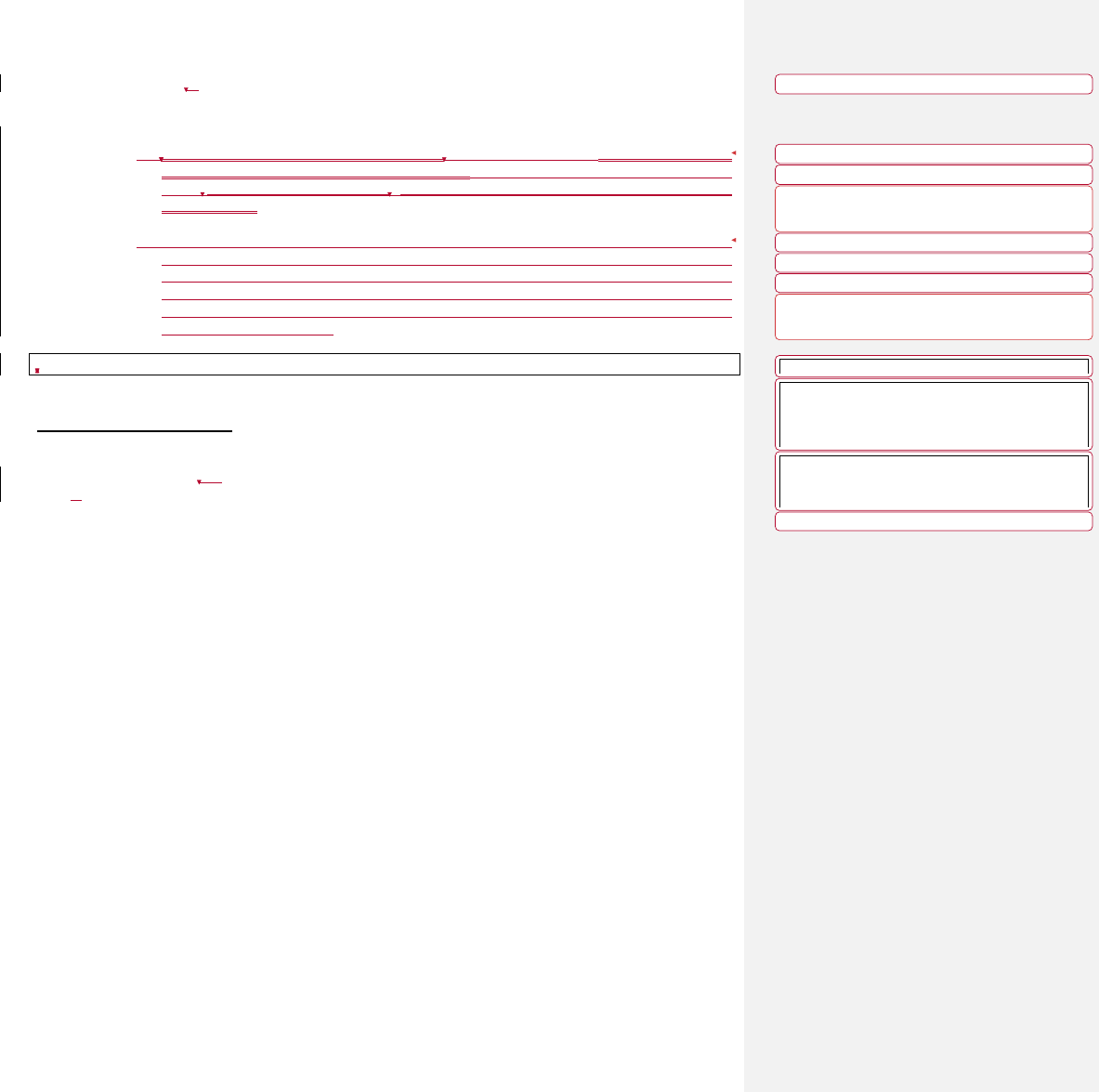
© 2010 National Association of Insurance Commissioners 3
ii. For a cumulative premium secondary guarantee, the amount of cumulative level gross
premiums determined according to Section 3.B.6.c.i, accumulated with any interest or
accumulation factors per the contract provisions for the secondary guarantee.
2. Section 3.B.4, Section 3.B.5 and Section 3.B.6 provide the calculation of a terminal NPR under
the assumption of an annual mode gross premium. In Section 3.B.4, Section 3.B.5 and Section
3.B.6, the gross premium referenced is the gross premium for the policy assuming an annual
premium mode.
3. Since terminal NPRs are computed as of the end of a policy year and not the reporting date, the
terminal NPR as of policy anniversaries immediately prior and subsequent to the reporting date
are adjusted to reflect that portion of the net premium that is unearned at the reporting date.
This is generally accomplished using either the mean reserve method or the mid-terminal
method as discussed in SSAP 51R. Other appropriate methods, including an exact reserve
valuation, may also be used.
VM-20 Section 3.B.6.d.i
As of the valuation date for the policy being valued, determine the actual secondary guarantee, denoted ASGx+t,
as outlined in Section 3.B.1.c and the fully funded secondary guarantee, denoted FFSGx+t, as outlined in Section
3.B.1.b.
Deleted: b.
Moved (insertion) [1]
Deleted: The definition of the NPR in
Formatted: Numbered + Level: 1 + Numbering Style: 1, 2,
3, … + S
tart at: 2 + Alignment: Left + Aligned at: 1" +
Indent at: 1.25"
Deleted: is intended to result in
Deleted: T
Deleted: should be
Formatted: Numbered + Level: 1 + Numbering Style: 1, 2,
3, … + S
tart at: 2 + Alignment: Left + Aligned at: 1" +
Indent at: 1.25"
Deleted: Guidance Note:
Moved up [1]: The definition of the NPR in Section 3.B.4,
Section 3.B.5 and Section 3.B.6 is intended to result in a terminal
NPR under the assumption of an annual mode gross premium.
The gross premium referenced should be the gross premium for
the policy assuming an annual premium mode.
Deleted:
The reported reserve as of any valuation date should
reflect the actual premium mode for the policy and the actual
valuation date relative to the policy issue date either directly or
through adjusting accounting entries.
Deleted: 2
© 2021 National Association of Insurance Commissioners
18
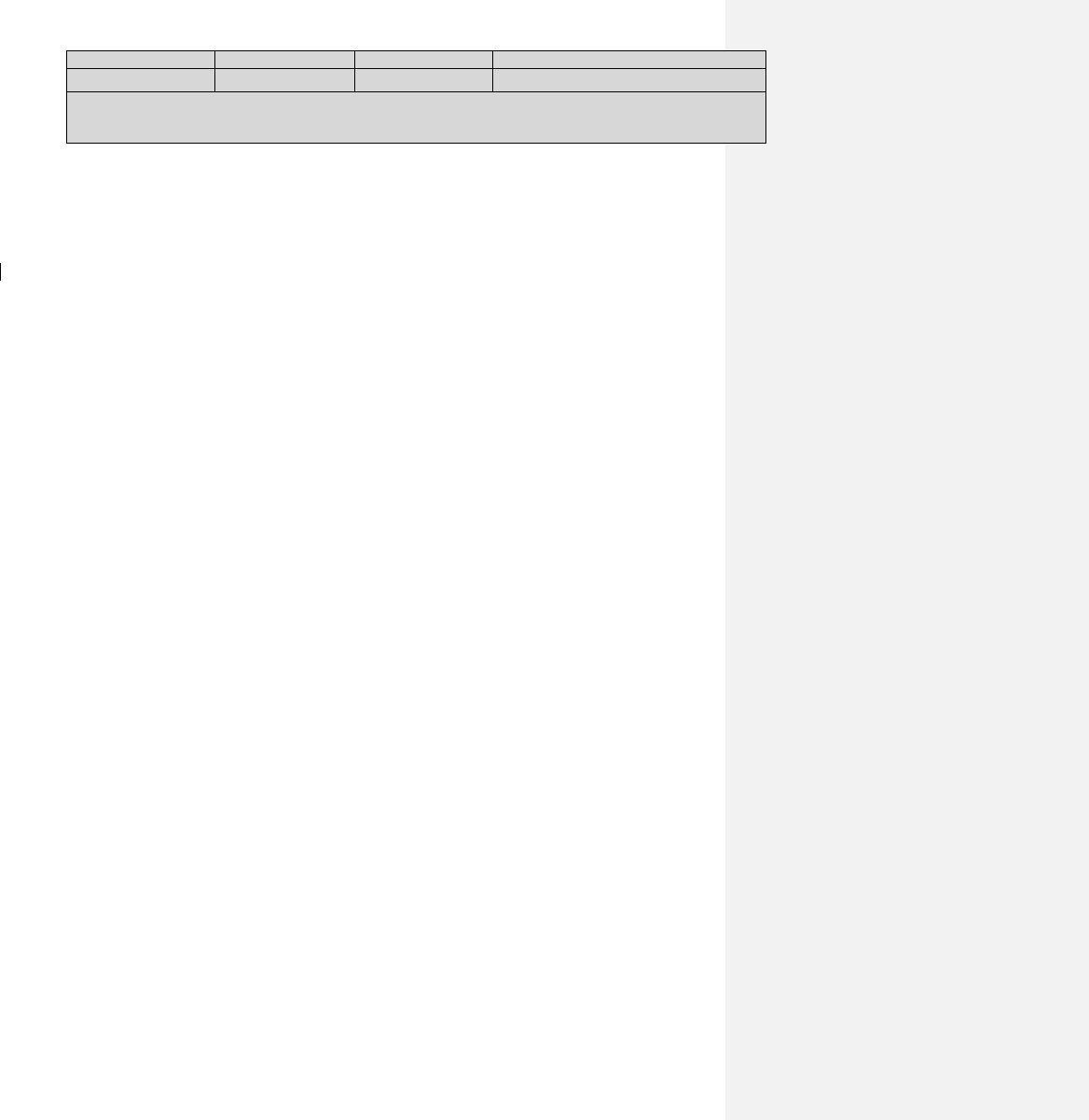
Dates: Received
Reviewed by Staff
Distributed
Considered
09/23/20
RM
APF 2020-08
© 2020 National Association of Insurance Commissioners
Life Actuarial (A) Task Force/ Health Actuarial (B) Task Force
Amendment Proposal Form
1. Identify yourself, your affiliation and a very brief description (title) of the issue.
Tim Cardinal, FSA, MAAA, CERA. Cardinalis 1 Consulting.
Clarify and introduce a third permissible technique for the calculation of company experience rates.
2. Identify the document, including the date if the document is “released for comment,” and
the location in the document where the amendment is proposed:
2020 Edition – Valuation Manual, VM-20 Section 9.C.2.d.vi.
3. Show what changes are needed by providing a red-line version of the original verbiage with
deletions and identify the verbiage to be deleted, inserted or changed by providing a red-line
(turn on “track changes” in Word®) version of the verbiage. (You may do this through an
attachment.)
See attached Appendix.
4. State the reason for the proposed amendment? (You may do this through an attachment.)
See attached Appendix and Excel file.
© 2021 National Association of Insurance Commissioners
19

Appendix
SECTION:
VM-20 Section 9.C.2.d.vi.
REDLINE:
9.C.2.d.vi. If the company uses the aggregate company experience for a group of mortality segments
when determining the company experience mortality rates for each of the individual
mortality segments in the group, the company shalluse one of the following methods:
a. Use techniques to further subdivide the aggregate experience into the various mortality
segments (e.g., start with aggregate non-smoker and then use the conservation of total
deaths principle, normalization or other approach to divide the aggregate mortality into
super preferred, preferred and residual standard non-smoker class assumptions).
b. Use techniques to adjust the experience of each mortality segment in the group to
reflect the aggregate company experience for the group (e.g., by credibility weighting
the individual mortality segment experience with the aggregate company experience for
the group).
c. Use a two-step sequential method, which
1) forms subgroups which are groups of mortality segments and are subsets of the
aggregate class of mortality segments being aggregated,
2) uses techniques as in (b) to adjust the experience of each subgroup from (1) to
reflect the aggregate company experience for the group and conserve deaths, and
3) finally, uses techniques as in (a) to further subdivide the subgroups’ adjusted
experience from (2) into the various mortality segments while conserving each
subgroup’s deaths determined in step (2)’s conservation of deaths.
For example, if mortality segments vary by sex, risk class, and face bands, then
1) segments that differ by face band are aggregated to form subgroups that vary
just by sex and risk class,
2) the subgroups’ mortality experience is credibility weighted with the aggregate
company experience for the group and normalized, and
3) the subgroups’ adjusted mortality experience are then subdivided into the
various mortality segments based on credible, external face band relativities and
conservation of deaths is applied to each subgroup’s normalized deaths
determined in (2).
REASONING:
A minor point is clarity. “Either” can mean one or both. The intent is one of a) or b) but not both. The
major issue is both a) and b) have weaknesses in contexts with high levels of granularity resulting in a
large number of mortality segments such as 120 or 360 segments. For example consider a block with
360 mortality segments determined by 2 sexes × 6 risk classes × 5 face bands × 3 product types × 2
underwriting types (such as full and accelerated). A company may have very high credibility for each of
12 segments as determined by 2 sexes × 6 risk classes but have very low credibility for each of the 360
segments. Both a) and b) could produce company experience rates that negate the very reasons a
company uses a high level of granularity. Using b) for example, all segment rates would be equal to the
aggregate A/E rates, which is equivalent to no granularity. By applying b) to subgroups and applying a) to
divide the subgroups, the proposed technique c) is more robust drawing upon a) and b)’s strengths
Deleted: either
© 2021 National Association of Insurance Commissioners
20

while mitigating their weakness. If there is one subgroup which is the aggregate then a) is a special case
of c). If each subgroup is a segment then b) is a special case of c). See the attached excel file that adds
two examples to the NAIC examples for a) and b). Example 8 is an example of a correct way to apply c)
and Example 9 is an incorrect way.
© 2021 National Association of Insurance Commissioners
21
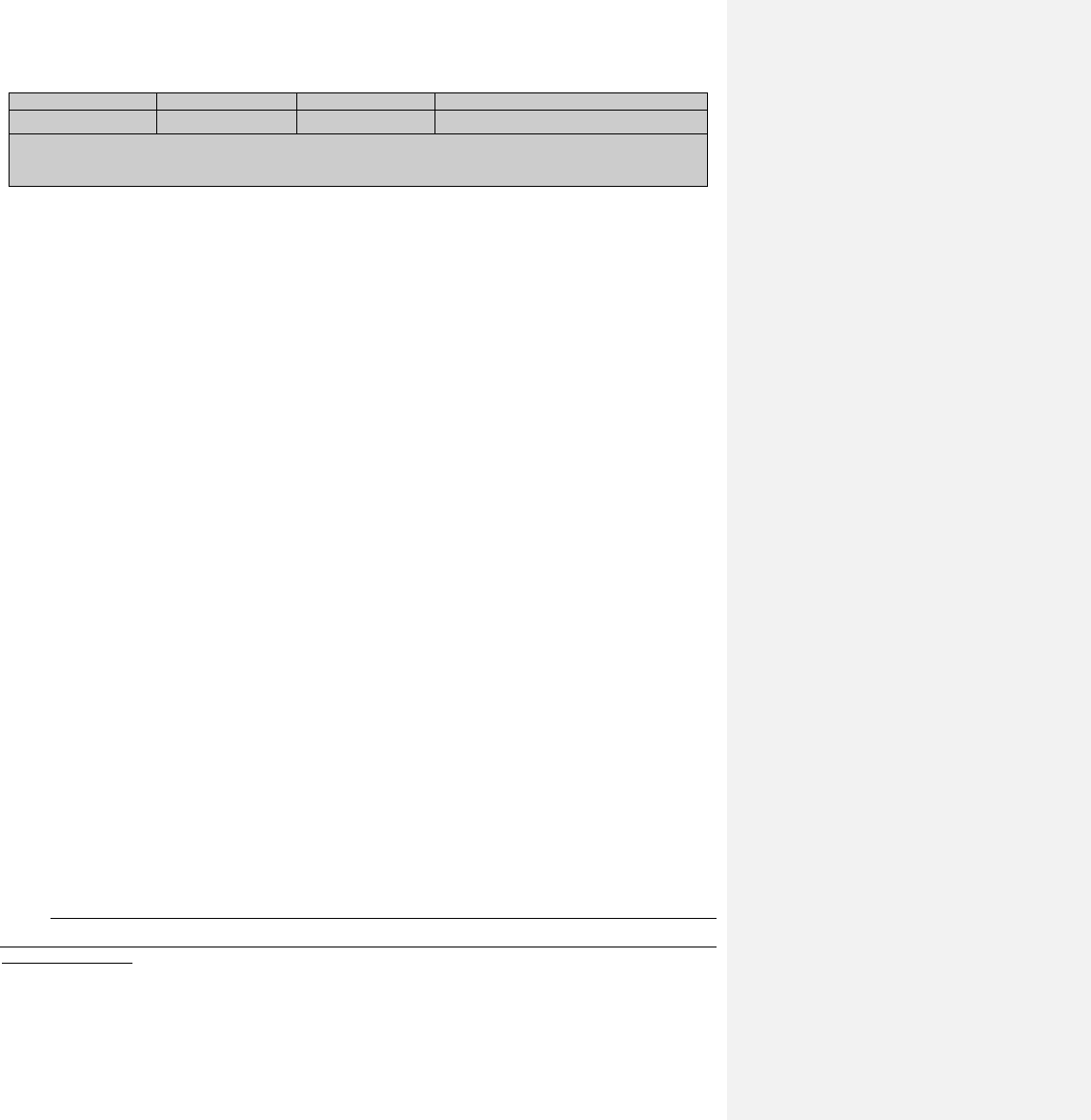
Dates: Received
Reviewed by Staff
Distributed
Considered
Notes: APF 2020-09 v.6 (with editorial changes added at time of adoption)
Adopted 11/5/20
Life Actuarial (A) Task Force/ Health Actuarial (B) Task Force
Amendment Proposal Form*
1. Identify yourself, your affiliation and a very brief description (title) of the issue.
Identification:
Rachel Hemphill, Texas Department of Insurance
Title of the Issue:
1. Modify Life PBR Exemption to not require annual exemption requests if the company continues to
meet the premium thresholds and does not have any ULSG with material SG.
2. Not require VM-20 when all new issues arise due to policyholders exercising guarantees or options
(e.g. for conversion) in existing policies valued under VM-A/VM-C.
2. Identify the document, including the date if the document is “released for comment,” and the location in
the document where the amendment is proposed:
Valuation Manual Section II, Subsection 1.D
January 1, 2020 NAIC Valuation Manual
3. Show what changes are needed by providing a red-line version of the original verbiage with deletions and
identify the verbiage to be deleted, inserted or changed by providing a red-line (turn on “track changes” in
Word®) version of the verbiage. (You may do this through an attachment.)
See attached.
4. State the reason for the proposed amendment? (You may do this through an attachment.)
Reduce filing burden for companies and state regulators by making the Life PBR Exemption a one-time
filing until conditions for the exemption change. Allow exemption for companies that do not meet the
premium thresholds, but are only issuing new policies that would be subject to VM-20 due to policyholders
exercising guarantees or options (e.g. for conversion) from existing policies being valued under the pre-
PBR framework.
* This form is not intended for minor corrections, such as formatting, grammar, cross–references or spelling. Those types of changes do not require action by
the entire group and may be submitted via letter or email to the NAIC staff support person for the NAIC group where the document originated.
NAIC Staff Comments:
W:\National Meetings\2010\...\TF\LHA\
© 2021 National Association of Insurance Commissioners
22
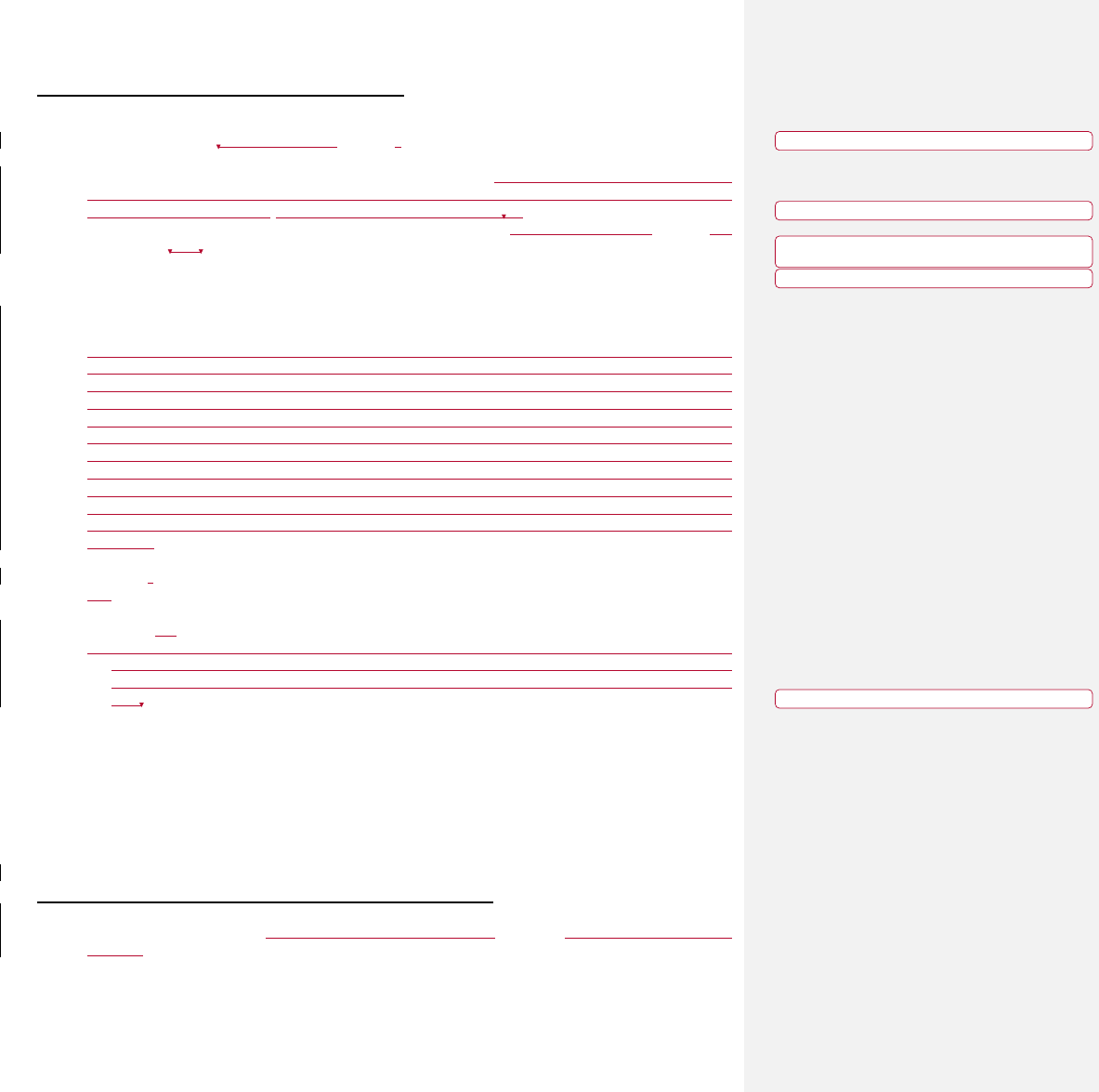
© 2010 National Association of Insurance Commissioners 1
Valuation Manual Section II, Subsection 1.D
D. Life PBR Exemption
1. A company meeting at least one of the conditions in D.2 below may file a statement of exemption for
ordinary life insurance policies, except for policies in D.3 below, issued directly or assumed during the
current calendar year, that would otherwise be subject to VM-20. If a company has no business issued
directly or assumed during the current calendar year that would otherwise be subject to VM-20, a statement
of exemption is not required. For a filed statement of exemption, the statement must be filed with the
domiciliary commissioner prior to July 1 of that year certifying that at least one of the two conditions in
D.2 was met and the statement of exemption must also be included with the NAIC filing for the second
quarter of that year.
The domiciliary commissioner may reject such statement prior to Sept. 1 and require the company to follow
the requirements of VM-20 for the ordinary life policies covered by the statement.
If a filed statement of exemption is not rejected by the domiciliary commissioner, the filing of subsequent
statements of exemption is not required as long as the company continues to qualify for the exemption;
rather, ongoing statements of exemption for each new calendar year will be deemed to not be rejected,
unless: 1) the company fails to meet either condition in D.2 below, 2) the policies contain those in D.3
below, or 3) the domiciliary commissioner contacts the company prior to Sept. 1 and notifies them that the
statement of exemption is rejected. If any of these three events occur, then the statement of exemption for
the current calendar year is rejected and a new statement of exemption must be filed and not rejected in
order for the company to exempt additional policies. In the case of an ongoing statement of exemption,
rather than include a statement of exemption with the NAIC filing for the second quarter of that year, the
company should enter “SEE EXPLANATION” in response to the Life PBR Exemption supplemental
interrogatory and provide as an explanation that the company is utilizing an ongoing statement of
exemption.
2. Conditions for Exemption:
a. The company has less than $300 million of ordinary life premiums
1
, and if the company is a member
of an NAIC group of life insurers, the group has combined ordinary life premiums
1
of less than $600
million; or
b. The only new policies subject to VM-20 being issued or assumed by the company are due to election
of policy benefits or features from existing policies that are being valued under VM-A and VM-C and
the company was exempted from, or otherwise not subject to, the requirements of VM-20 in the prior
year.
3. Policies Excluded from the Life PBR Exemption:
a. Universal life with secondary guarantee (ULSG) policies with a secondary guarantee that does not meet
the VM-01, Definitions for Terms in Requirements, definition of a “non-material secondary guarantee.”
4. Each exemption, or lack of an exemption, applies only to policies issued or assumed in the current year,
and it applies to all future valuation dates for those policies. The minimum reserve requirements for the
ordinary life policies subject to the exemption are those pursuant to applicable methods required in VM-A
and VM-C using the mortality as defined in VM-20 Section 3.C.1 and VM-M Section 1.H.
Valuation Manual Section II, Subsection 1.D - Footnote
1
Premiums are measured as total (first year, single, and renewal) direct plus total (first year, single, and
renewal) reinsurance assumed from an unaffiliated company from the ordinary life line of business reported
in the prior calendar year life/health annual financial statement, Exhibit 1, Part 1, Column 3, “Ordinary Life
Insurance” excluding premiums for guaranteed issue policies and preneed life contracts and excluding
amounts that represent the transfer of reserves in force as of the effective date of a reinsurance assumed
Deleted: the
Deleted: Such a
Deleted: based on premiums from the prior calendar year
annual statement
Deleted: . T
Deleted: .
© 2021 National Association of Insurance Commissioners
23

© 2010 National Association of Insurance Commissioners 2
transaction and are reported in Exhibit 1 Part 1, Column 3 as ordinary life insurance premium. Preneed is
as defined in VM-01.
© 2021 National Association of Insurance Commissioners
24

Life Actuarial (A) Task Force
Amendment Proposal Form 2020-10
Exposed for a 12-day public comment period ending June 7, 2021
Request for Comment: During the exposure, commenters are specifically asked to address the
four versions exposed for the handling of YRT for the 2017-2019 issue years.
Please submit comments to Reggie Mazyck (RMazyck@naic.org
) by COB 5/25/21.
© 2021 National Association of Insurance Commissioners
25
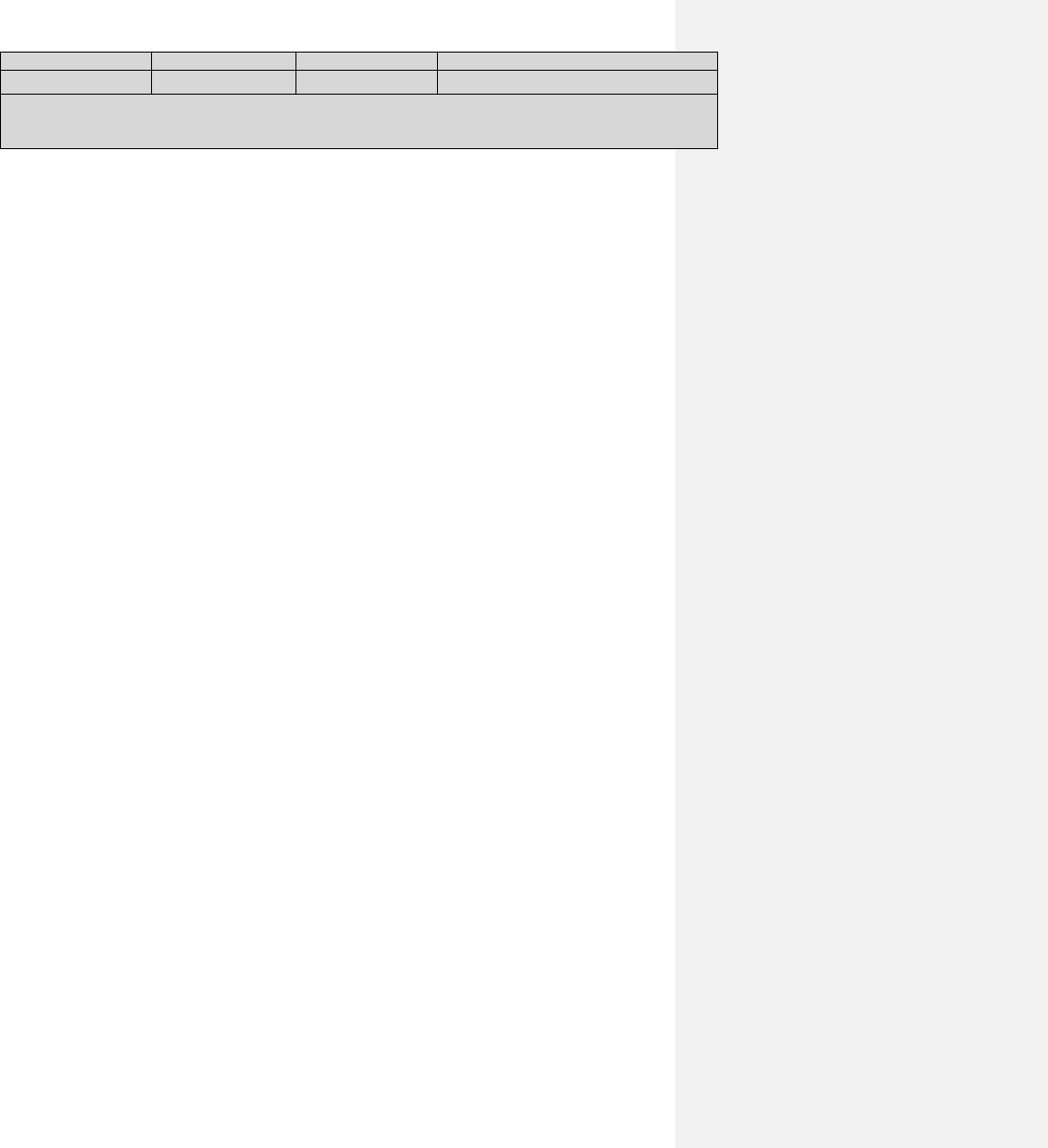
Dates: Received
Reviewed by Staff
Distributed
Considered
RM
APF 2020-10 exposed 5/27/21 with non-substantive revision
© 2015 National Association of Insurance Commissioners
Life Actuarial (A) Task Force/ Health Actuarial
(B) Task Force
Amendment Proposal Form
1. Identify yourself, your affiliation and a very brief description (title) of the issue.
Pat Allison – NAIC, Scott O’Neal – NAIC, Mary Bahna-Nolan – Pacific Life, and Rachel Hemphill – Texas
Department of Insurance; SOA for development of rates and loading.
Reflect a prudent level of mortality improvement beyond the valuation date.
2. Identify the document, including the date if the document is “released for comment,” and the
location in the document where the amendment is proposed:
Valuation Manual (January 1, 2021 edition), VM-20 Section 6.A.2.b.v, VM-20 Section 8.C
Introductory Paragraph, VM-20 Section 8.C.18 and Guidance Note, VM-20 Section 9.C.2.h, VM-20
Section 9.C.3.g, VM-20 Section 9.C.7.a, VM-20 Section 9.C.7.h (new), VM-31 Section 3.D.8.g (new –
for 2017-2019 YRT Version 3 only), VM-31 Section 3.D.3.i, VM-31 Section 3.D.8.g (2017-2019 YRT
handling option 3 only, new reporting section), VM-31 Section 3.D.11.c.i
3. Show what changes are needed by providing a red-line version of the original verbiage with
deletions and identify the verbiage to be deleted, inserted or changed by providing a red-line
(turn on “track changes” in Word®) version of the verbiage. (You may do this through an
attachment.)
See attached Appendix.
4. State the reason for the proposed amendment? (You may do this through an attachment.)
We propose to reflect a prudent level of mortality improvement beyond the valuation date, using
SOA analysis for best estimate future mortality improvement and margin. The requirements also
need to be clarified for the handling of historical or anticipated future mortality deterioration (i.e.,
negative improvement).
With the reflection of a prudent level of future mortality improvement in the mortality assumption,
the interim 1/2cx approach to YRT is a reasonable consideration for a long-term approach.
For LATF consideration for re-exposure, there are four versions of the handling of the 2017-2019
issue year carveout from the interim YRT solution: 1) the original exposure, removing the carveout
with the 1/2cx being made a longer term approach, 2) a modified version that removes the
carveout, but makes that removal contingent on the first set of SOA future mortality rates being
adopted, in case of delay, 3) a modified version that removes the carveout, but allows for a phase-
in of the effect of this change, and 4) a version making the carveout long-term. These versions are
presented starting on Page 6 of this document, after the other edits which do not vary based on
this options.
© 2021 National Association of Insurance Commissioners
26
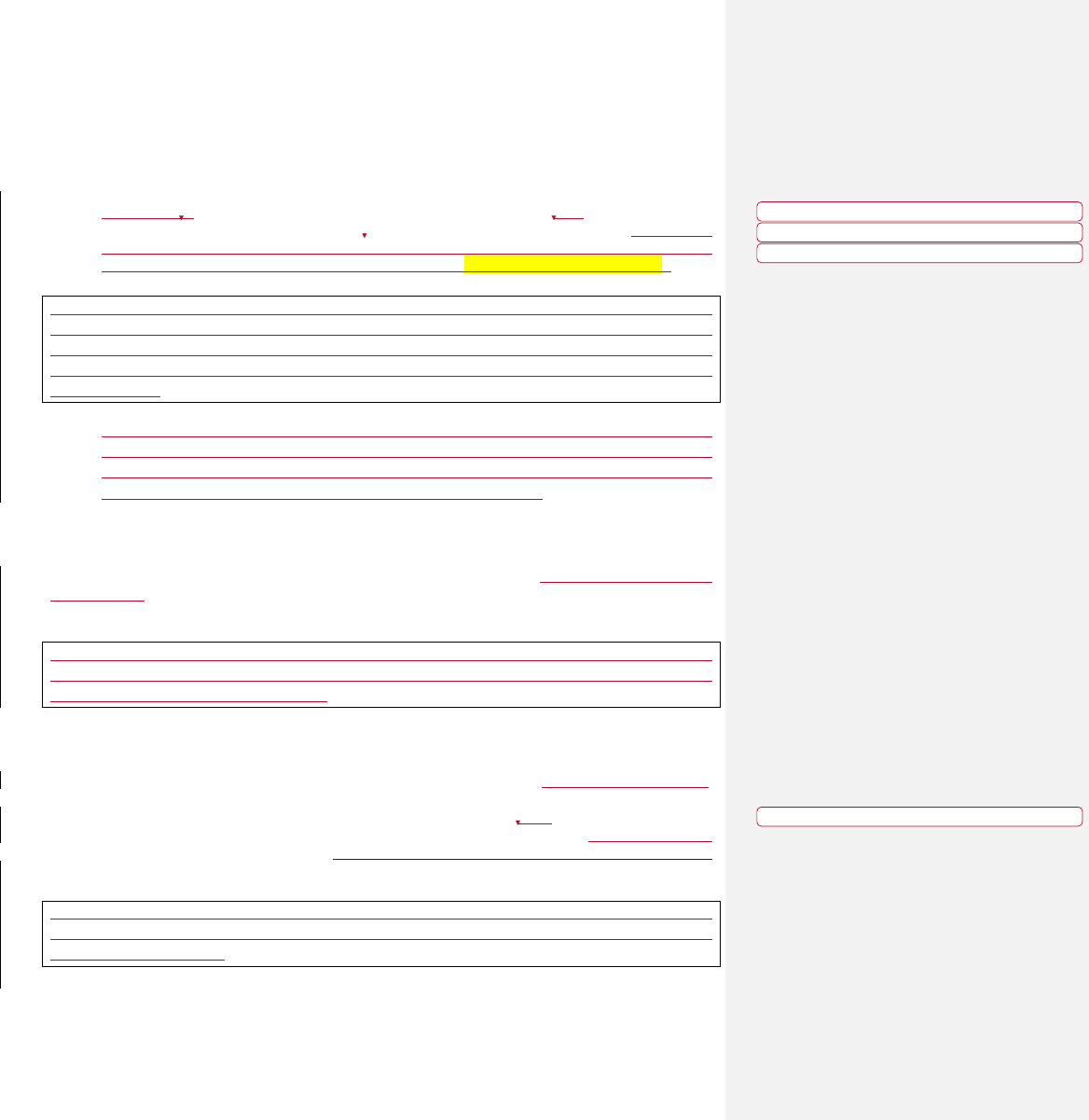
© 2015 National Association of Insurance Commissioners
Appendix
VM-20 Section 6.A.2.b.v:
v. Anticipated mortality improvement beyond the projection start date shall be reflected in the
mortality assumption for the purpose of calculating the stochastic exclusion ratio. The future
mortality improvement factors shall be no greater than the unloaded factors determined by the SOA,
adopted by LATF, and published on the SOA website, at [link/reference to SOA site TBD].
Guidance Note: Mortality improvement may be positive or negative (i.e., deterioration). The anticipated
mortality improvement may be lower than the rates published by the SOA, for example, if the company’s
best estimate for mortality improvement for a particular block, such as simplified issue, is lower. Prior to
adoption by LATF of the first set of future mortality improvement factors, the future mortality improvement
rates shall be 0%.
To allow time for companies to reflect the updated mortality improvement rates, the rates that are
to be used in the year-end YYYY valuation should be adopted by LATF and published on the SOA
website by September of YYYY. If this timeline is not met, then at the company’s option they may
use the mortality improvement rates for the prior year (year YYYY-1).
VM-20 Section 9.C.2.h:
h. Mortality improvement shall not be incorporated beyond the valuation date in the company experience
mortality rates. However, historical mortality improvement from the central point of the underlying
company experience data to the valuation date may be incorporated.
Guidance Note: Future mortality improvement is not applied to the company experience mortality rates,
since it would be duplicative of the future mortality improvement that is applied to the prudent estimate
assumptions for mortality in Section 9.C.7.f.
VM-20 Section 9.C.3.g:
g. Mortality improvement shall not be incorporated beyond the valuation date in the industry basic table.
However, historical mortality improvement from the date of the industry basic table (e.g., Jan. 1, 2008, for
the 2008 VBT and July 1, 2015, for the 2015 VBT) to the valuation date shall be incorporated using the
improvement factors for the applicable industry basic table as determined by the SOA, adopted by LATF,
and published on the SOA website, https://www.soa.org/research/topics/indiv-val-exp-study-list/
(Mortality Improvement Rates for AG-38 for Year-End YYYY).
Guidance Note: Future mortality improvement is not applied to the industry basic table, since it would be
duplicative of the future mortality improvement that is applied to the prudent estimate assumptions for
mortality in Section 9.C.7.f.
Deleted: M
Deleted: may not
Deleted: the
Deleted: may
© 2021 National Association of Insurance Commissioners
27
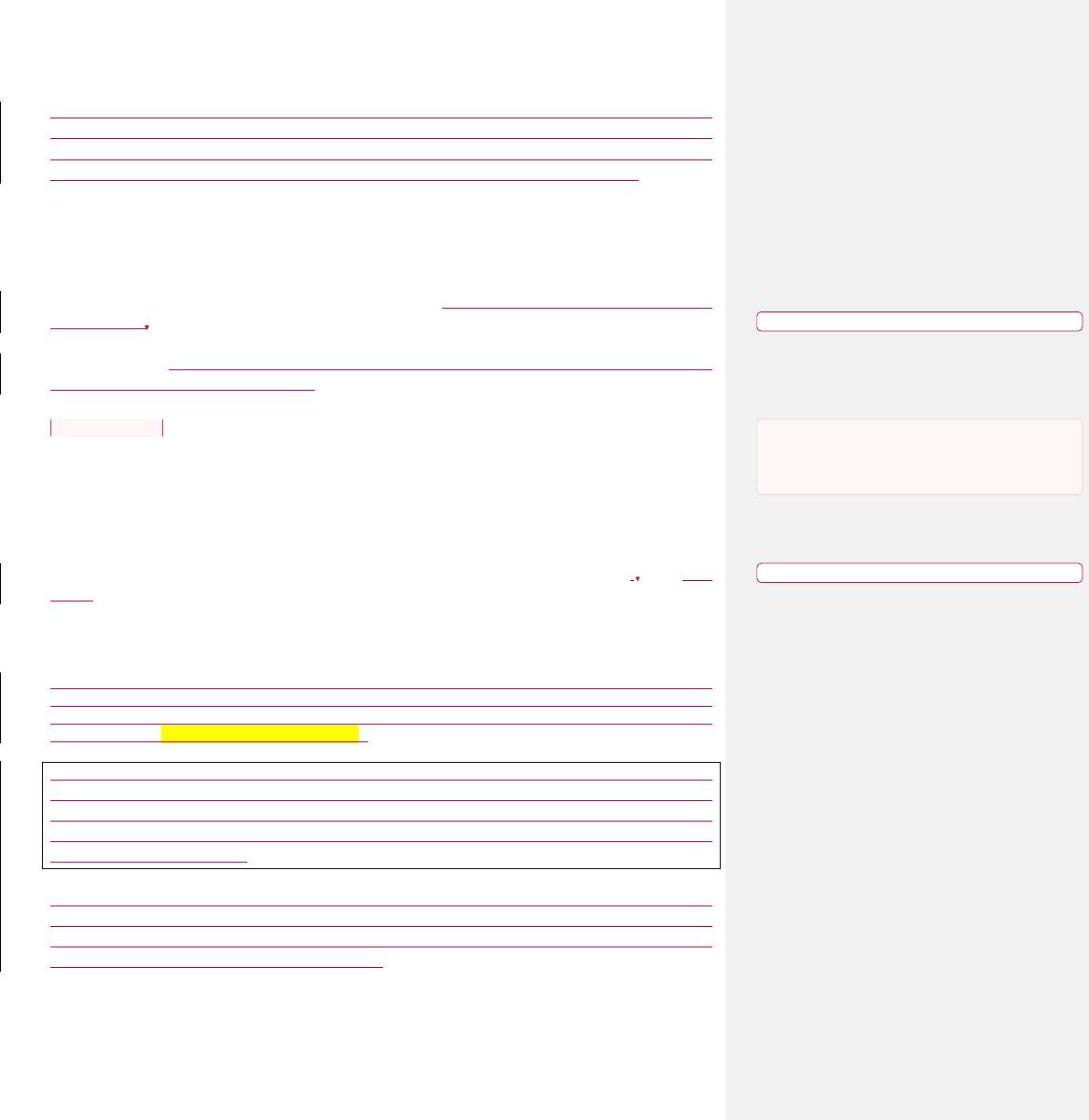
© 2015 National Association of Insurance Commissioners
To allow time for companies to reflect the updated mortality improvement rates, the rates that are to be
used in the year-end YYYY valuation should be adopted by LATF and published on the SOA website by
September of YYYY. If this timeline is not met, then at the company’s option they may use the most recent
set of prior mortality improvement rates adopted by LATF and published on the SOA website.
VM-20 Section 9.C.7.a:
If applicable industry basic tables are used in lieu of company experience as the anticipated experience
assumptions, or if the level of credibility of the data as provided in Section 9.C.5 is less than 20%, the
prudent estimate assumptions for each mortality segment shall equal the respective mortality rates in the
applicable industry basic tables as provided in Section 9.C.3, adjusted as necessary pursuant to Section
9.C.7.e and for any applicable improvement pursuant to Section 9.C.3.g, plus the prescribed margin as
provided in Section 9.C.6.c, plus any applicable additional margin pursuant to Section 9.C.6.d.v and/or
Section 9.C.6.d.vi. Future mortality improvement, pursuant to Section 9.C.7.f, shall be applied to the
prudent estimate assumption for mortality.
Section 9.C.7.b.vi:
Beginning in the first policy duration after policy duration E, the prudent estimate mortality assumptions
for each policy in a given mortality segment are determined as a weighted average of the company
experience mortality rates with margins and the applicable industry basic table with margins, in which the
weights on the company rates grade linearly from 100% down to 0%. This grading must be completed—
i.e., must reach 100% of industry table—no later than the beginning of the first policy duration after policy
duration Z (the determination of the applicable industry basic table is described in Section 9.C.3). Thus, the
prudent estimate mortality rate, prior to any adjustments pursuant to Sections 9.C.7.c, 9.C.7.d, 9.C.7.e, and
9.C.7.f below, is:
VM-20 Section 9.C.7.f (new section):
Twenty years of future mortality improvement that the company anticipates beyond the valuation date shall
be applied to the prudent estimate assumptions for mortality, using prudent future mortality improvement
factors no greater than the loaded factors determined by the SOA, adopted by LATF, and published on the
SOA website, at [link/reference to SOA site TBD].
Guidance Note: Mortality improvement may be positive or negative (i.e., deterioration). The anticipated
mortality improvement may be lower than the rates published by the SOA, even zero, for example, if the
company’s best estimate for mortality improvement for a particular block, such as simplified issue, is lower.
Prior to adoption by LATF of the first set of future mortality improvement factors, the future mortality
improvement rates shall be 0%.
To allow time for companies to reflect the updated mortality improvement rates, the rates that are to be
used in the year-end YYYY valuation should be adopted by LATF and published on the SOA website by
September of YYYY. If this timeline is not met, then at the company’s option they may use the mortality
improvement rates for the prior year (year YYYY-1).
Deleted: including
Commented [RH1]: Craig: Section 9.C.7.f needs to be added in
Section 9.C.7.b.vi, as follows: “Thus, the prudent estimate mortality
rate, prior to any adjustments pursuant to Sections 9.C.7.c, 9.C.7.d,
9.C.7.e and 9.C.7.f below, is:”
Deleted: and
© 2021 National Association of Insurance Commissioners
28
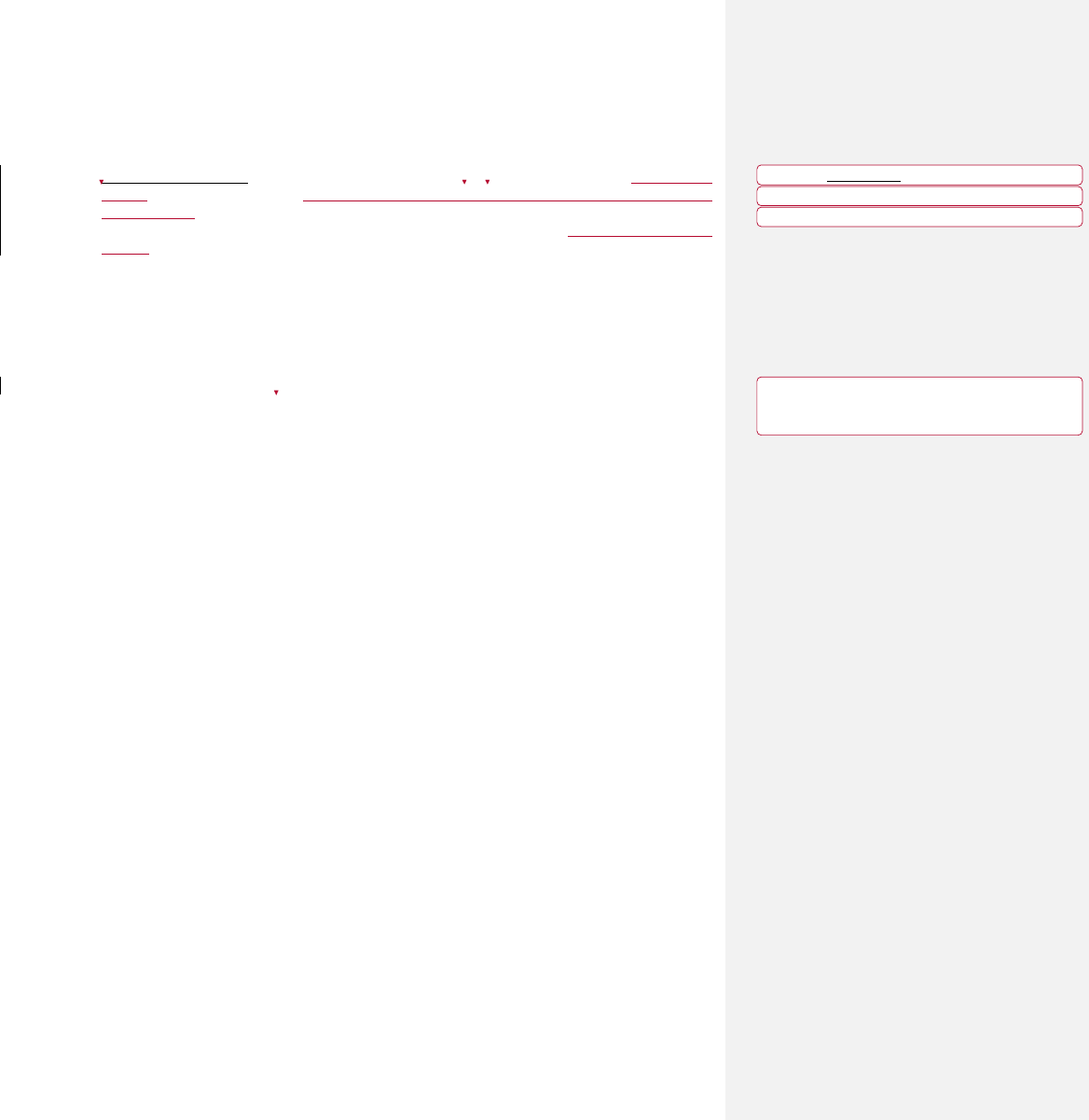
© 2015 National Association of Insurance Commissioners
VM-31 Section 3.D.3.i:
i. Mortality Improvement – Description of and rationale for the mortality improvement assumptions
applied up to the valuation date and the mortality improvement assumptions applied beyond the
valuation date. Such a description shall include the assumed start and end dates of the
improvements and a table of the annual improvement percentage(s) used, both without and with
margin, separately for company experience and the industry basic table(s), along with a sample
calculation of the adjustment (e.g., for a male preferred nonsmoker age 45).
VM-31 Section 3.D.11.c.i:
i. If the company believes the method used to determine anticipated experience mortality assumptions
includes an implicit margin, the company can adjust the anticipated experience assumptions to
remove this implicit margin for this reporting purpose only. If any such adjustment is made, the
company shall document the rationale and method used to determine the anticipated experience
assumption.
Deleted: Adjustments for
Deleted: any adjustments to
Deleted: mortality assumptions for
Deleted: . For example, to the extent the company expects
mortality improvement after the valuation date, any such
mortality improvement is an implicit margin and, therefore, is an
acceptable adjustment to the anticipated experience assumptions
© 2021 National Association of Insurance Commissioners
29
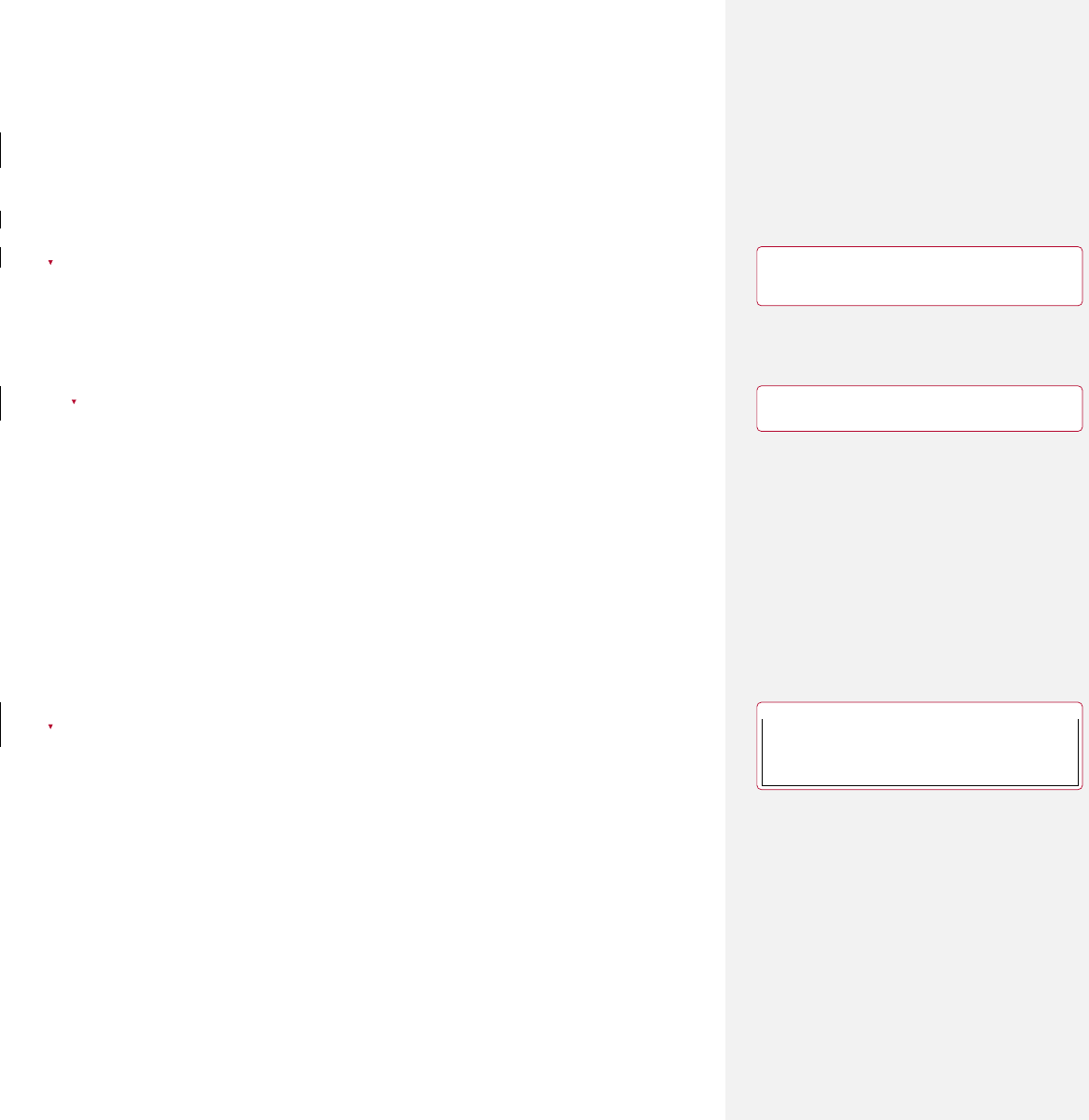
© 2015 National Association of Insurance Commissioners
2017-2019 for Long-Term YRT – Version 1:
VM-20 Section 8.C, introductory paragraph:
C. Reflection of Reinsurance Cash Flows in the Deterministic Reserve or Stochastic Reserve
For non-guaranteed YRT reinsurance ceded or assumed, the cash-flow modeling requirements in Sections
8.C.1 through 8.C.14 below do not apply since non-guaranteed YRT reinsurance ceded or assumed does
not need to be modeled; see Section 8.C.18 below. YRT shall include other reinsurance arrangements that
are similar in effect to YRT.
VM-20 Section 8.C.18 and Guidance Note:
18.
When the reinsurance ceded or assumed is on a non-guaranteed YRT or similar basis, the corresponding
reinsurance cash flows do not need to be modeled. Rather, for a ceding company, the post-reinsurance-
ceded DR or SR shall be the pre-reinsurance-ceded DR or SR pursuant to Section 8.D.2, plus any applicable
provision pursuant to Section 8.C.15 and Section 8.C.17, minus the NPR reinsurance credit from Section
8.B. For an assuming company, the DR or SR for the business assumed on a non-guaranteed YRT or similar
basis shall be set equal to the NPR from Section 3.B.8, plus any applicable provision pursuant to Section
8.C.16 and Section 8.C.17. In the case where there are also other reinsurance arrangements that are not on
a non-guaranteed YRT or similar basis, the reinsurance credit shall include the modeled reinsurance credit
reflecting those other reinsurance arrangements. In particular, where there are also other reinsurance
arrangements that are dependent on the non-guaranteed YRT or similar actuarial judgment shall be used to
project cash flows consistent with the above outlined treatment for non-guaranteed YRT or similar
arrangements.
Deleted: For policies issued on or after Jan. 1, 2020, and
optionally for policies issued on or after Jan. 1, 2017, and before Jan.
1, 2020: ¶
¶
Deleted: For policies issued on or after Jan. 1, 2020, and
optionally for policies issued on or after Jan. 1, 2017, and before Jan.
1, 2020:
Deleted: Guidance Note: The above method is an interim
approach. A longer-term solution to YRT is intended to be
adopted by state insurance regulators, after state insurance
regulators and industry have had additional time to consider and
evaluate the variety of approaches that have been put forward as a
potential longer-term solution.¶
© 2021 National Association of Insurance Commissioners
30

© 2015 National Association of Insurance Commissioners
2017-2019 for Long-Term YRT – Version 2:
VM-20 Section 8.C, introductory paragraph:
C. Reflection of Reinsurance Cash Flows in the Deterministic Reserve or Stochastic Reserve
For policies issued on or after Jan. 1, 2020, and optionally for policies issued on or after Jan. 1, 2017, and
before Jan. 1, 2020
up until adoption by LATF of the first set of unloaded future mortality improvement
factors, at which point this shall apply for all policies issued on or after Jan. 1, 2017:
For non-guaranteed YRT reinsurance ceded or assumed, the cash-flow modeling requirements in Sections
8.C.1 through 8.C.14 below do not apply since non-guaranteed YRT reinsurance ceded or assumed does
not need to be modeled; see Section 8.C.18 below. YRT shall include other reinsurance arrangements that
are similar in effect to YRT.
VM-20 Section 8.C.18 and Guidance Note:
18. For policies issued on or after Jan. 1, 2020, and optionally for policies issued on or after Jan. 1, 2017,
and before Jan. 1, 2020 up until adoption by LATF of the first set of unloaded future mortality improvement
factors, at which point this shall apply for all policies issued on or after Jan. 1, 2017:
When the reinsurance ceded or assumed is on a non-guaranteed YRT or similar basis, the corresponding
reinsurance cash flows do not need to be modeled. Rather, for a ceding company, the post-reinsurance-
ceded DR or SR shall be the pre-reinsurance-ceded DR or SR pursuant to Section 8.D.2, plus any applicable
provision pursuant to Section 8.C.15 and Section 8.C.17, minus the NPR reinsurance credit from Section
8.B. For an assuming company, the DR or SR for the business assumed on a non-guaranteed YRT or similar
basis shall be set equal to the NPR from Section 3.B.8, plus any applicable provision pursuant to Section
8.C.16 and Section 8.C.17. In the case where there are also other reinsurance arrangements that are not on
a non-guaranteed YRT or similar basis, the reinsurance credit shall include the modeled reinsurance credit
reflecting those other reinsurance arrangements. In particular, where there are also other reinsurance
arrangements that are dependent on the non-guaranteed YRT or similar actuarial judgment shall be used to
project cash flows consistent with the above outlined treatment for non-guaranteed YRT or similar
arrangements.
Deleted: ¶
Deleted: Guidance Note: The above method is an interim
approach. A longer-term solution to YRT is intended to be
adopted by state insurance regulators, after state insurance
regulators and industry have had additional time to consider and
evaluate the variety of approaches that have been put forward as a
potential longer-term solution.¶
© 2021 National Association of Insurance Commissioners
31

© 2015 National Association of Insurance Commissioners
2017-2019 for Long-Term YRT – Version 3:
C. Reflection of Reinsurance Cash Flows in the Deterministic Reserve or Stochastic Reserve
For non-guaranteed YRT reinsurance ceded or assumed, the cash-flow modeling requirements in Sections
8.C.1 through 8.C.14 below do not apply since non-guaranteed YRT reinsurance ceded or assumed does
not need to be modeled; see Section 8.C.18 below. YRT shall include other reinsurance arrangements that
are similar in effect to YRT.
For policies issued on or after Jan. 1, 2017, and before Jan. 1, 2020, the company may elect, with domiciliary
commissioner approval, a phase-in of the current methodology for non-guaranteed YRT reinsurance with
allowance for future mortality improvement from the methodology in the 2021 Valuation Manual for non-
guaranteed YRT reinsurance without allowance for future mortality improvement, provided that the
company uses a weighted average of the results from the two methodologies, with the weight for the prior
methodology being no more than (20XX-YYYY)/(20XX-2021), where YYYY is the current valuation year
and 20XX is the final year of the phase-in. A company may elect to phase in these requirements over a 3-
year period beginning Jan. 1, 2022 and ending Dec. 31, 2024. A company may elect a longer phase-in
period of up to seven years beginning Jan. 1, 2022 and ending Dec. 31, 2028, with approval of the
domiciliary commissioner.
VM-20 Section 8.C.18 and Guidance Note:
18.
When the reinsurance ceded or assumed is on a non-guaranteed YRT or similar basis, the corresponding
reinsurance cash flows do not need to be modeled. Rather, for a ceding company, the post-reinsurance-
ceded DR or SR shall be the pre-reinsurance-ceded DR or SR pursuant to Section 8.D.2, plus any applicable
provision pursuant to Section 8.C.15 and Section 8.C.17, minus the NPR reinsurance credit from Section
8.B. For an assuming company, the DR or SR for the business assumed on a non-guaranteed YRT or similar
basis shall be set equal to the NPR from Section 3.B.8, plus any applicable provision pursuant to Section
8.C.16 and Section 8.C.17. In the case where there are also other reinsurance arrangements that are not on
a non-guaranteed YRT or similar basis, the reinsurance credit shall include the modeled reinsurance credit
reflecting those other reinsurance arrangements. In particular, where there are also other reinsurance
arrangements that are dependent on the non-guaranteed YRT or similar actuarial judgment shall be used to
project cash flows consistent with the above outlined treatment for non-guaranteed YRT or similar
arrangements.
For policies issued on or after Jan. 1, 2017, and before Jan. 1, 2020, the company may elect, with
domiciliary commissioner approval, a phase-in of the current methodology for non-guaranteed YRT
reinsurance with allowance for future mortality improvement from the methodology in the 2021 Valuation
Manual for non-guaranteed YRT reinsurance without allowance for future mortality improvement,
provided that the company uses a weighted average of the results from the two methodologies, with the
weight for the prior methodology being no more than (20XX-YYYY)/(20XX-2021), where YYYY is the
Deleted: For policies issued on or after Jan. 1, 2020, and
optionally for policies issued on or after Jan. 1, 2017, and before Jan.
1, 2020: ¶
¶
Deleted: For policies issued on or after Jan. 1, 2020, and
optionally for policies issued on or after Jan. 1, 2017, and before Jan.
1, 2020:
Deleted: Guidance Note: The above method is an interim
approach. A longer-term solution to YRT is intended to be
adopted by state insurance regulators, after state insurance
regulators and industry have had additional time to consider and
evaluate the variety of approaches that have been put forward as a
potential longer-term solution.¶
© 2021 National Association of Insurance Commissioners
32
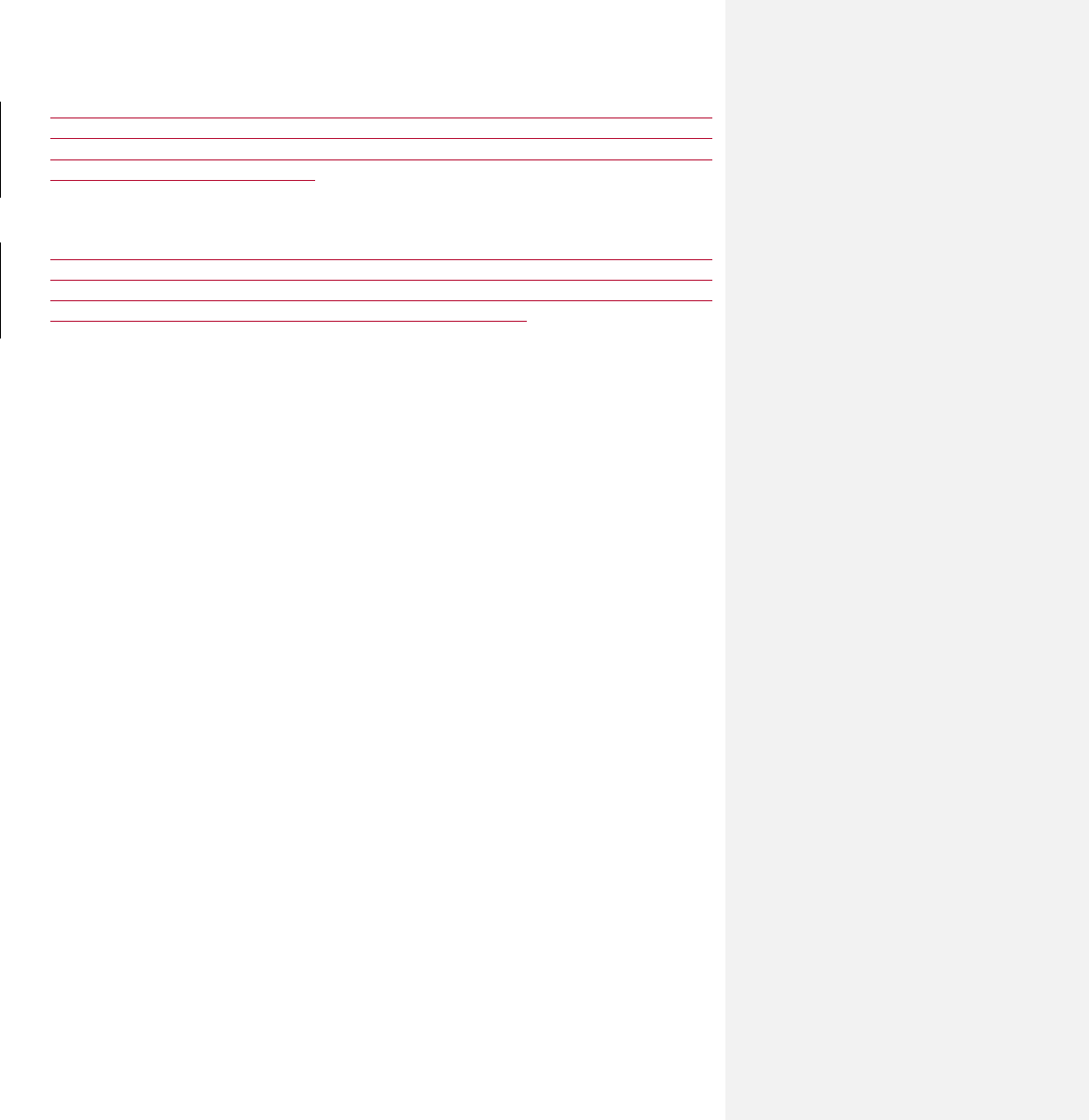
© 2015 National Association of Insurance Commissioners
current valuation year and 20XX is the final year of the phase-in. A company may elect to phase in these
requirements over a 3-year period beginning Jan. 1, 2022 and ending Dec. 31, 2024. A company may elect
a longer phase-in period of up to seven years beginning Jan. 1, 2022 and ending Dec. 31, 2028, with
approval of the domiciliary commissioner.
VM-31 Section 3.D.8.g (new):
g. Phase-In: If electing a phase-in period as described in VM-20 Section 8.C, documentation of the length
of the phase-in approved by the company’s domiciliary commissioner, the result of the current and prior
methodologies, the weights applied to each result, and confirmation that reinsurance assumptions for the
calculation of the prior methodology are discussed in Section 3.D.8.b above.
© 2021 National Association of Insurance Commissioners
33
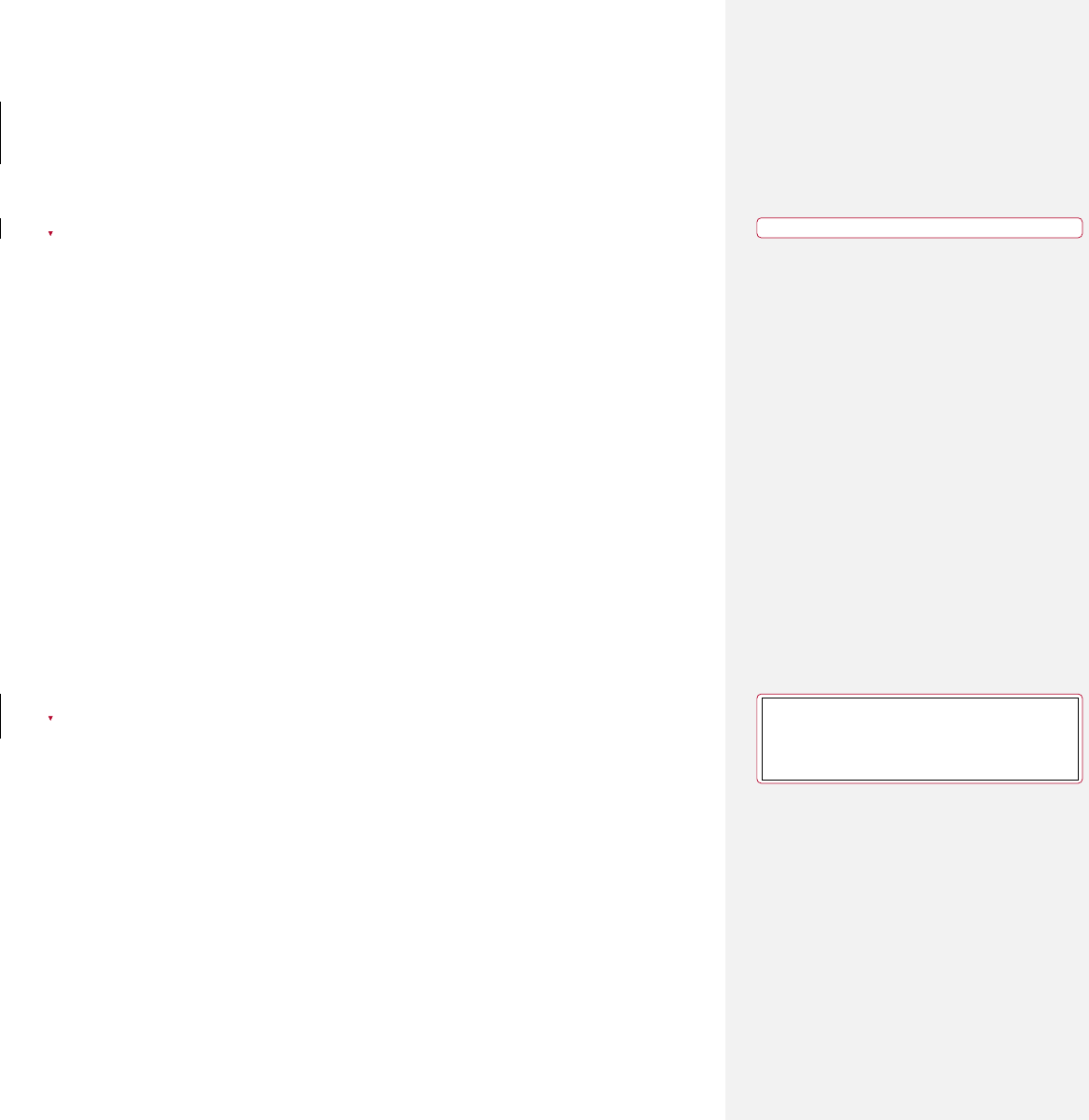
© 2015 National Association of Insurance Commissioners
2017-2019 for Long-Term YRT – Version 4:
C. Reflection of Reinsurance Cash Flows in the Deterministic Reserve or Stochastic Reserve
For policies issued on or after Jan. 1, 2020, and optionally for policies issued on or after Jan. 1, 2017, and
before Jan. 1, 2020:
For non-guaranteed YRT reinsurance ceded or assumed, the cash-flow modeling requirements in Sections
8.C.1 through 8.C.14 below do not apply since non-guaranteed YRT reinsurance ceded or assumed does
not need to be modeled; see Section 8.C.18 below. YRT shall include other reinsurance arrangements that
are similar in effect to YRT.
VM-20 Section 8.C.18 and Guidance Note:
18. For policies issued on or after Jan. 1, 2020, and optionally for policies issued on or after Jan. 1, 2017,
and before Jan. 1, 2020:
When the reinsurance ceded or assumed is on a non-guaranteed YRT or similar basis, the corresponding
reinsurance cash flows do not need to be modeled. Rather, for a ceding company, the post-reinsurance-
ceded DR or SR shall be the pre-reinsurance-ceded DR or SR pursuant to Section 8.D.2, plus any applicable
provision pursuant to Section 8.C.15 and Section 8.C.17, minus the NPR reinsurance credit from Section
8.B. For an assuming company, the DR or SR for the business assumed on a non-guaranteed YRT or similar
basis shall be set equal to the NPR from Section 3.B.8, plus any applicable provision pursuant to Section
8.C.16 and Section 8.C.17. In the case where there are also other reinsurance arrangements that are not on
a non-guaranteed YRT or similar basis, the reinsurance credit shall include the modeled reinsurance credit
reflecting those other reinsurance arrangements. In particular, where there are also other reinsurance
arrangements that are dependent on the non-guaranteed YRT or similar actuarial judgment shall be used to
project cash flows consistent with the above outlined treatment for non-guaranteed YRT or similar
arrangements.
Deleted: ¶
Deleted: Guidance Note: The above method is an interim
approach. A longer-term solution to YRT is intended to be
adopted by state insurance regulators, after state insurance
regulators and industry have had additional time to consider and
evaluate the variety of approaches that have been put forward as a
potential longer-term solution.¶
© 2021 National Association of Insurance Commissioners
34
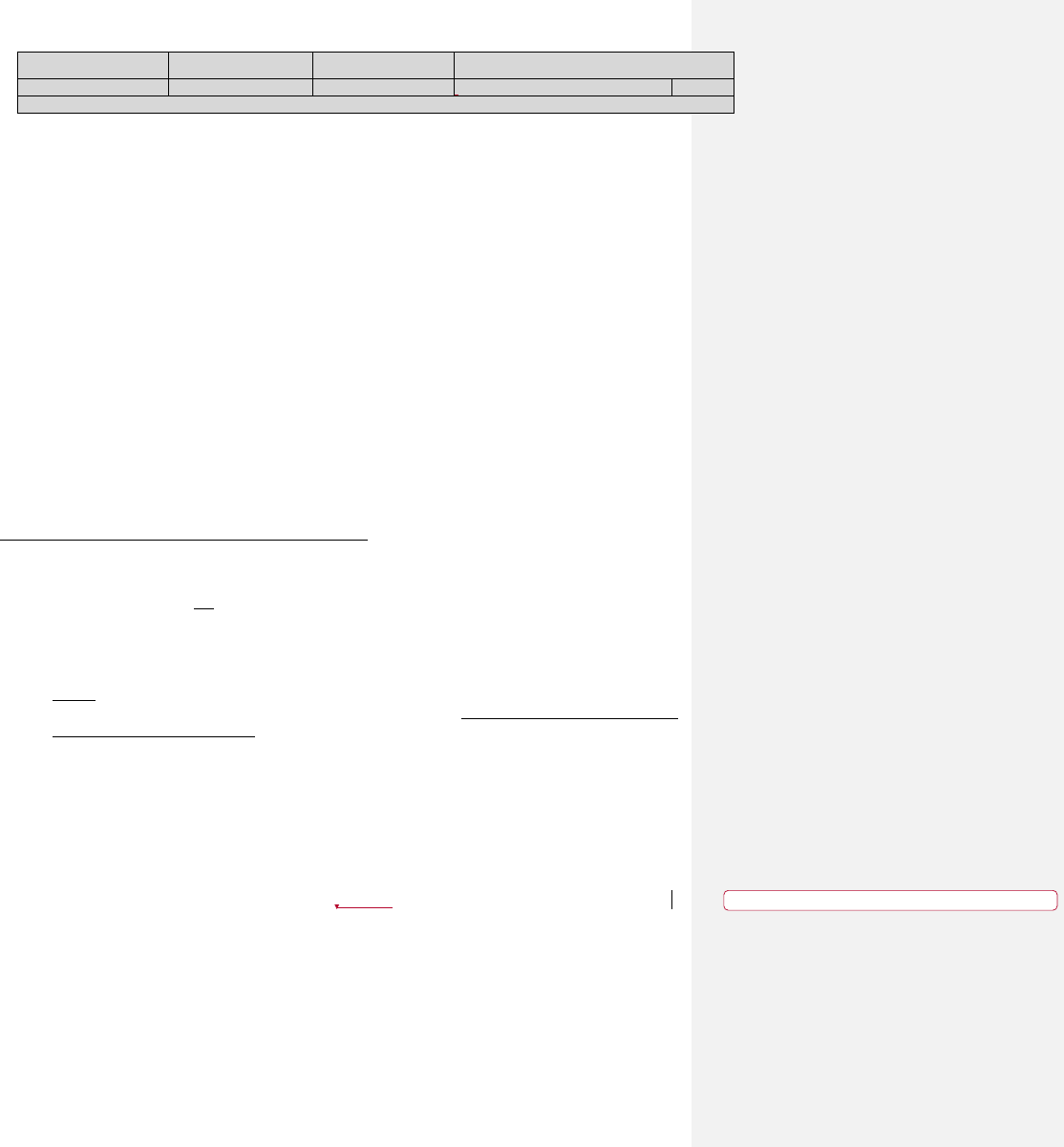
Dates: Received
Reviewed by Staff
Distributed
Considered
11/30/20
Adopted 2/11/21
APF 2020-11
Life Actuarial (A) Task Force/ Health Actuarial
(B) Task Force
Amendment Proposal Form
1. Identify yourself, your affiliation and a very brief description (title) of the issue.
Rachel Hemphill, TDI – Allows exemption of policies from prior issue years when there is a change in
the Life PBR Exemption requirements.
2. Identify the document, including the date if the document is “released for comment,” and
the location in the document where the amendment is proposed:
Valuation Manual (January 1, 2021 edition), Section II, Subsection 1.D.4, with the addition of the
APF 2020-09 revisions to VM Section II, Subsection 1.D.1 – Subsection 1.D.3 (adopted by LATF on
Nov. 5, 2020) shown in blue.
3. Show what changes are needed by providing a red-line version of the original verbiage with
deletions and identify the verbiage to be deleted, inserted or changed by providing a red-line
(turn on “track changes” in Word®) version of the verbiage. (You may do this through an
attachment.)
Valuation Manual Section II, Subsection 1.D
D. Life PBR Exemption
1. A company meeting the at least one of the conditions in D.2 below may file a statement of
exemption for ordinary life insurance policies, except for policies in D.3 below, issued directly or
assumed during the current calendar year, that would otherwise be subject to VM-20. If a company
has no business issued directly or assumed during the current calendar year that would otherwise
be subject to VM-20, a statement of exemption is not required. For a filed statement of exemption,
Such a the statement must be filed with the domiciliary commissioner prior to July 1 of that year
certifying that at least one of the two conditions in D.2 was met based on premiums from the prior
calendar year annual statement and the statement of exemption must also be included with the
NAIC filing for the second quarter of that year.
The domiciliary commissioner may reject such statement prior to Sept. 1 and require the company
to follow the requirements of VM-20 for the ordinary life policies covered by the statement.
If a filed statement of exemption is not rejected by the domiciliary commissioner, the filing of
subsequent statements of exemption is not required as long as the company continues to qualify for
the exemption; rather, ongoing statements of exemption for each new calendar year will be deemed
to not be rejected, unless: 1) the company does not meet either condition in D.2 below, 2) the
policies contain those in D.3 below, or 3) the domiciliary commissioner contacts the company prior
to Sept. 1 and notifies them that the statement of exemption is rejected. If any of these three events
occur, then the statement of exemption for the current calendar year is rejected and a new statement
of exemption must be filed and not rejected in order for the company to exempt additional policies.
In the case of an ongoing statement of exemption, rather than include a statement of exemption
with the NAIC filing for the second quarter of that year, the company should enter “SEE
Deleted: fails to
© 2021 National Association of Insurance Commissioners
35

EXPLANATION” in response to the Life PBR Exemption supplemental interrogatory and provide
as an explanation that the company is utilizing an ongoing statement of exemption.
2. Conditions for Exemption:
a. The company has less than $300 million of ordinary life premiums
1
, and if the company is a
member of an NAIC group of life insurers, the group has combined ordinary life premiums
1
of
less than $600 million; or
b. The only new policies that would otherwise be subject to VM-20 being issued or assumed by
the company are due to election of policy benefits or features from existing policies valued
under VM-A and VM-C and the company was exempted from, or otherwise not subject to, the
requirements of VM-20 in the prior year.
3. Policies Excluded from the Life PBR Exemption:
a. Universal life with secondary guarantee (ULSG) policies with a secondary guarantee that does
not meet the VM-01, Definitions for Terms in Requirements, definition of a “non-material
secondary guarantee.”
4. Each exemption, or lack of an exemption, outlined in D.1 – D.3 above applies only to policies
issued or assumed in the current year, and it applies to all future valuation dates for those policies.
However, if policies did not qualify for the Life PBR Exemption during the year of issue but would
have qualified for the Life PBR Exemption if the current Valuation Manual requirements had been
in effect during the year of issue, then the domiciliary commissioner may allow an exemption for
such policies. The minimum reserve requirements for the ordinary life policies subject to the
exemption are those pursuant to applicable methods required in VM-A and VM-C using the
mortality as defined in VM-20 Section 3.C.1 and VM-M Section 1.H.
Valuation Manual Section II, Subsection 1.D - Footnote
1
Premiums are measured as total (first year, single, and renewal) direct plus total (first year, single,
and renewal) reinsurance assumed from an unaffiliated company from the ordinary life line of
business reported in the prior calendar year life/health annual financial statement, Exhibit 1, Part
1, Column 3, “Ordinary Life Insurance” excluding premiums for guaranteed issue policies and
preneed life contracts and excluding amounts that represent the transfer of reserves in force as of
the effective date of a reinsurance assumed transaction and are reported in Exhibit 1 Part 1, Column
3 as ordinary life insurance premium. Preneed is as defined in VM-01.
4. State the reason for the proposed amendment? (You may do this through an attachment.)
Addresses the exemption of policies issued in 2020 and 2021 (such as conversions) that may be
exempted under the 2022 Valuation Manual requirements but did not qualify under the 2020 or 2021
Valuation Manual requirements.
© 2020 National Association of Insurance Commissioners
Deleted: that are being
© 2021 National Association of Insurance Commissioners
36

© 2010 National Association of Insurance Commissioners 1
Dates: Received
Reviewed by Staff
Distributed
Considered
12/7/20
RM
Notes: APF 2020-13
Life Actuarial (A) Task Force/ Health Actuarial (B) Task Force
Amendment Proposal Form*
1. Identify yourself, your affiliation and a very brief description (title) of the issue.
Identification:
Dany Provencher, Appointed Actuary, Industrial Alliance group of companies
Title of the issue:
Asset collar when modeled reserve is negative
2. Identify the document, including the date if the document is “released for comment,” and the location in the
document where the amendment is proposed:
Valuation Manual, Jan.1 2020 Edition
VM-20 Section 7.D.3
3. Show what changes are needed by providing a red-line version of the original verbiage with deletions and identify
the verbiage to be deleted, inserted or changed by providing a red-line (turn on “track changes” in Word®) version
of the verbiage. (You may do this through an attachment.)
If for all model segments combined, the aggregate annual statement value of the final starting assets, less the
corresponding PIMR balance, is
(a) less than 98% of the modeled reserve; or
(i) 98% of the modeled reserve if modeled reserve is positive;
(ii) 102% of the modeled reserve if modeled reserve is negative; or
(b) greater than the largest of:
(i) 102% of the modeled reserve;
(ii) the NPR for the same set of policies, net of due and deferred premiums thereon:
and
(iii) zero,
then the company shall provide documentation in the PBR Actuarial Report that provides reasonable assurance that
the modeled reserve is not materially understated as a result of the estimate of the amount of starting assets.
4. State the reason for the proposed amendment? (You may do this through an attachment.)
If modeled reserve is negative, using assets corresponding to 100% of modeled reserve, would not fall within the
asset collar.
* This form is not intended for minor corrections, such as formatting, grammar, cross–references or spelling. Those types of changes do not require action by
the entire group and may be submitted via letter or email to the NAIC staff support person for the NAIC group where the document originated.
© 2021 National Association of Insurance Commissioners
37

Life Actuarial (A) Task Force
Amendment Proposal Form 2021-03
Exposed for a 21-day public comment period ending May 3, 2021
The proposed guidance note presumes that Section 6.C.5.n refers to how cohorts and weights are
unaffected by changes in interest rates at each reporting date because the discount rate for the calculations
is fixed, but it indicates that periodic updates to underlying prescribed assumptions may require
recalculations. LATF is requesting comments on this interpretation and its applicability to this RMD
change vs. Standard Projection assumption updates more broadly.
Please submit comments to Reggie Mazyck (RM[email protected]rg) by COB 5/3/21.
© 2021 National Association of Insurance Commissioners
38
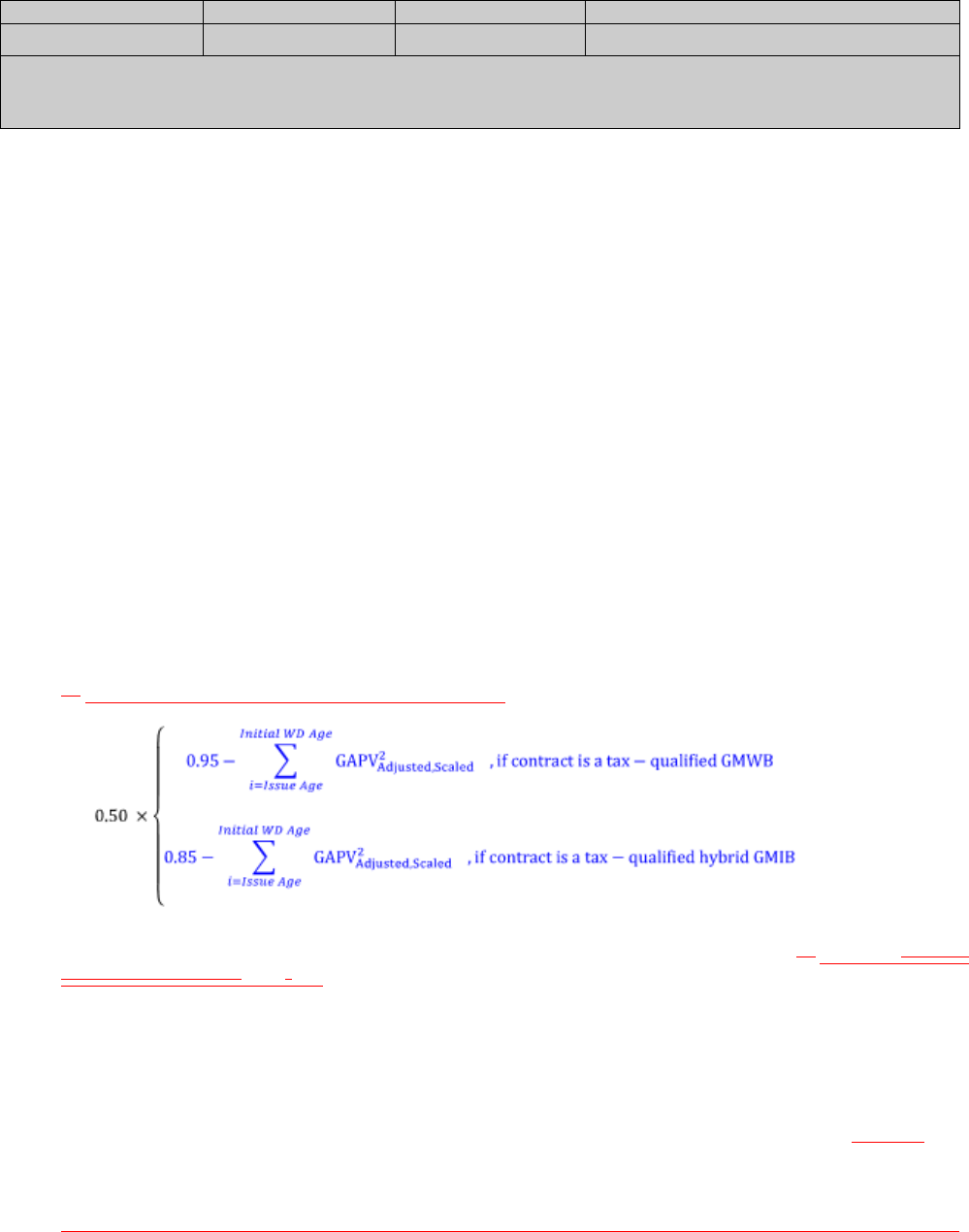
Dates: Received
Reviewed by Staff
Distributed
Considered
RM
Notes: APF 2021-03v2 revised 4/12
© 2010 National Association of Insurance Commissioners 1
Life Actuarial (A) Task Force/ Health Actuarial (B) Task Force
Amendment Proposal Form*
1. Identify yourself, your affiliation and a very brief description (title) of the issue.
American Academy of Actuaries, Variable Annuity Reserves & Capital Work Group
Update the reference to the required minimum distribution (RMD) age in the VM-21 Standard Projection Amount for
the Setting Every Community Up for Retirement Enhancement (SECURE) Act change.
2. Identify the document, including the date if the document is “released for comment,” and the location in the document
where the amendment is proposed:
January 1, 2021, version of the Valuation Manual
3. Show what changes are needed by providing a red-line version of the original verbiage with deletions and identify the
verbiage to be deleted, inserted or changed by providing a red-line (turn on “track changes” in Word®) version of the
verbiage. (You may do this through an attachment.)
In VM-21, Section 6.C.5:
i. For tax-qualified contracts, add the following to the revised GAPV
2
corresponding to an initial withdrawal age of
71 the federal required minimum distribution (RMD) age.
j. Scale the revised GAPV
2
values at all future initial withdrawal ages—i.e., all ages greater than 71 the federal required
minimum distribution (RMD) age, as identified in the preceding step—such that the sum of the revised GAPV
2
values
equals 0.95 for tax-qualified GMWB contracts and 0.85 for tax-qualified hybrid GMIB contracts again.
|
|
|
n. The cohorts and their associated weights as determined in Section 6.C.5.a through Section 6.C.5.k are for a contract
with attained age equal to its issue age. Because the discount rate used in this determination is fixed, generally these
calculations only need to be performed once for a given set of contracts with a certain issue age, guaranteed benefit
product, and tax status.
Guidance Note: Cohorts and their associated weights may need to be revised if prescribed assumptions are updated.
4. State the reason for the proposed amendment? (You may do this through an attachment.)
© 2021 National Association of Insurance Commissioners
39

The Standard Projection’s withdrawal delay cohort method includes an adjustment at the required minimum
distribution (RMD) age. The SECURE Act changed the RMD age from 70.5 to 72. This proposed amendment
implements the change by directly referencing the RMD age. The direct reference will reduce Valuation Manual
maintenance for any future changes.
The proposed guidance note presumes that Section 6.C.5.n refers to how cohorts and weights are unaffected by
changes in interest rates at each reporting date because the discount rate for the calculations is fixed, but it indicates
that periodic updates to underlying prescribed assumptions may require recalculations. LATF is requesting comments
on this interpretation and its applicability to this RMD change vs. Standard Projection assumption updates more
broadly.
* This form is not intended for minor corrections, such as formatting, grammar, cross–references or spelling. Those types of changes do not require action by
the entire group and may be submitted via letter or email to the NAIC staff support person for the NAIC group where the document originated.
NAIC Staff Comments:
W:\National Meetings\2010\...\TF\LHA\
© 2021 National Association of Insurance Commissioners
40
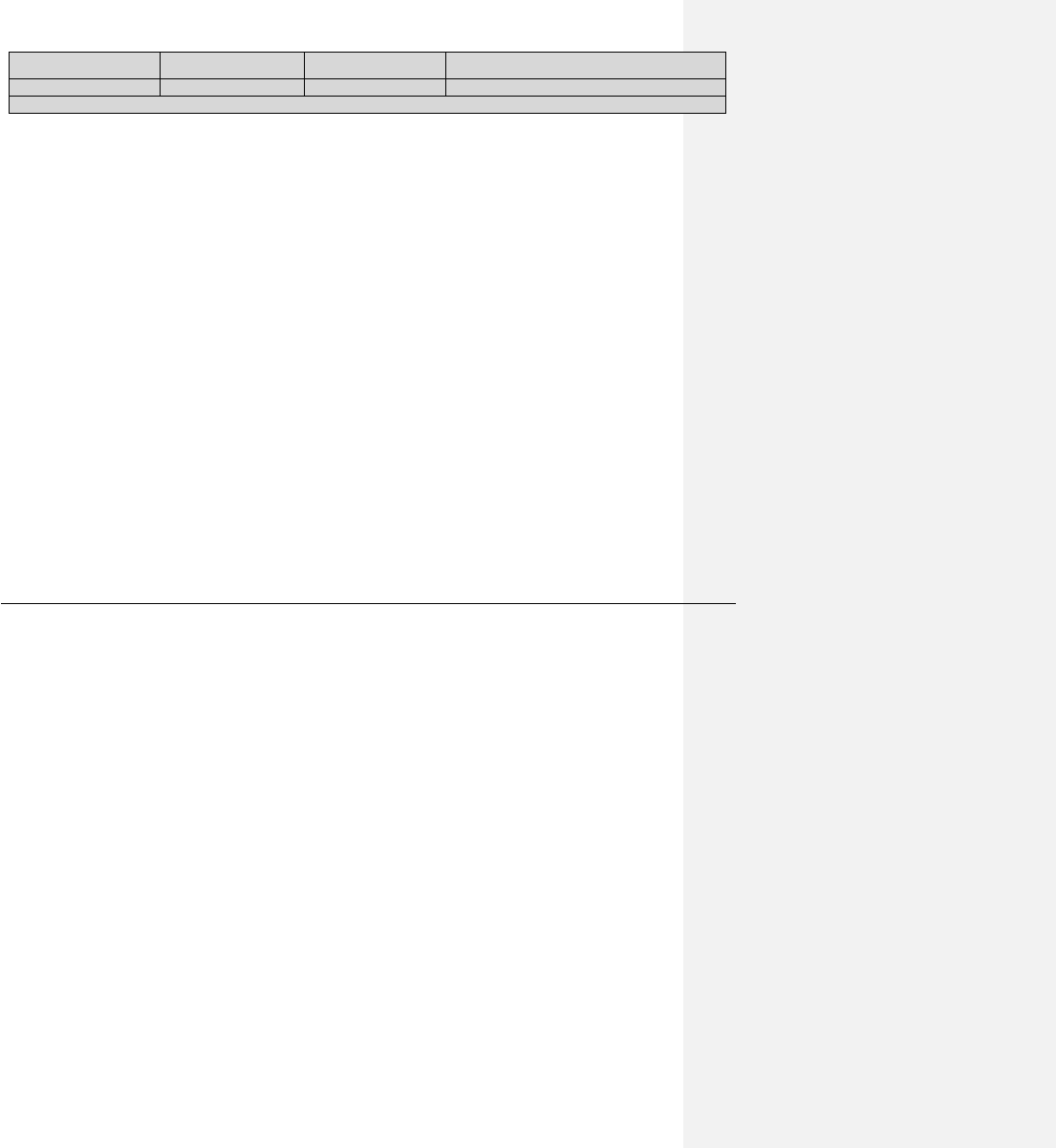
Dates: Received
Reviewed by Staff
Distributed
Considered
3/19/20
APF 2021-04 rev. 4/8/21
Life Actuarial (A) Task Force/ Health Actuarial
(B) Task Force
Amendment Proposal Form
1. Identify yourself, your affiliation and a very brief description (title) of the issue.
Brian Bayerle, ACLI – edits adopted changes to VM-02 for improved clarity and to remove potential
circularity.
2. Identify the document, including the date if the document is “released for comment,” and
the location in the document where the amendment is proposed:
Valuation Manual (January 1, 2021 edition), VM-02 Section 3.A
3. Show what changes are needed by providing a red-line version of the original verbiage with
deletions and identify the verbiage to be deleted, inserted or changed by providing a red-line
(turn on “track changes” in Word®) version of the verbiage. (You may do this through an
attachment.)
See attached.
4. State the reason for the proposed amendment? (You may do this through an attachment.)
Subsequent the adopted changes to the federal tax code (IRC S. 7702), this proposed change would
clarify the language in the previously adopted edits to VM-02 to avoid any potential circularity.
© 2020 National Association of Insurance Commissioners
© 2021 National Association of Insurance Commissioners
41
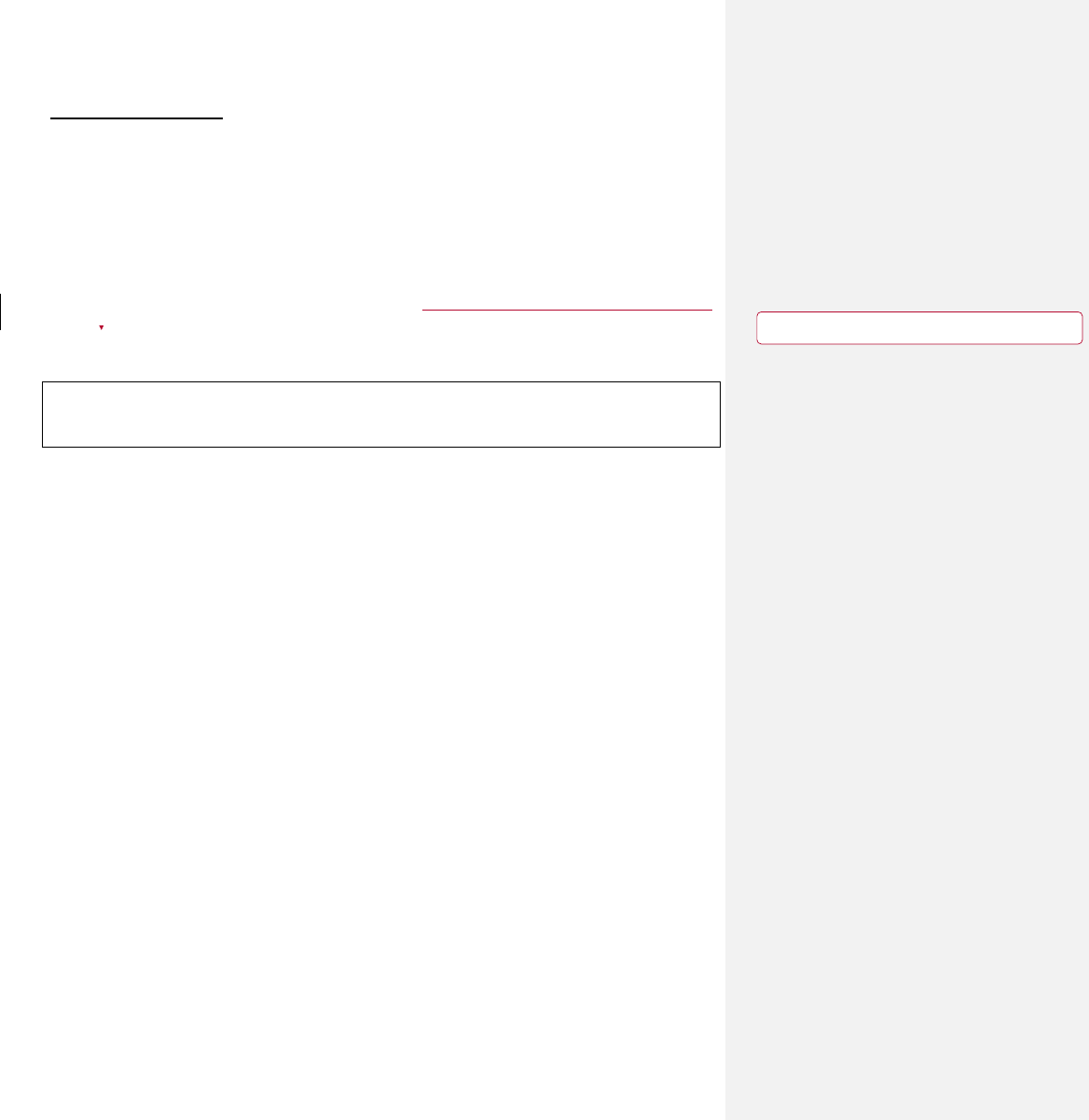
Valuation Manual VM-02
Section 3: Interest
A. The nonforfeiture interest rate for any life insurance policy issued in a particular calendar year
beginning on and after the operative date of the Valuation Manual shall be equal to 125% of the
calendar year statutory valuation interest rate defined for the NPR in the Valuation Manual for a
life insurance policy with nonforfeiture values, whether or not such sections apply to such policy
for valuation purposes, rounded to the nearer one-quarter of 1%, provided, however, that the
nonforfeiture interest rate shall not be less than the Applicable Accumulation Test Minimum Rate
in the Cash Value Accumulation Test under Section 7702 (Life Insurance Contract Defined) of the
U.S. Internal Revenue Code.
Guidance Note: For flexible premium universal life insurance policies as defined in Section 3.D of the
Universal Life Insurance Model Regulation (#585), this is not intended to prevent an interest rate guarantee
less than the nonforfeiture interest rate.
Deleted: applicable interest rate prescribed to meet the
definition of life insurance
© 2021 National Association of Insurance Commissioners
42
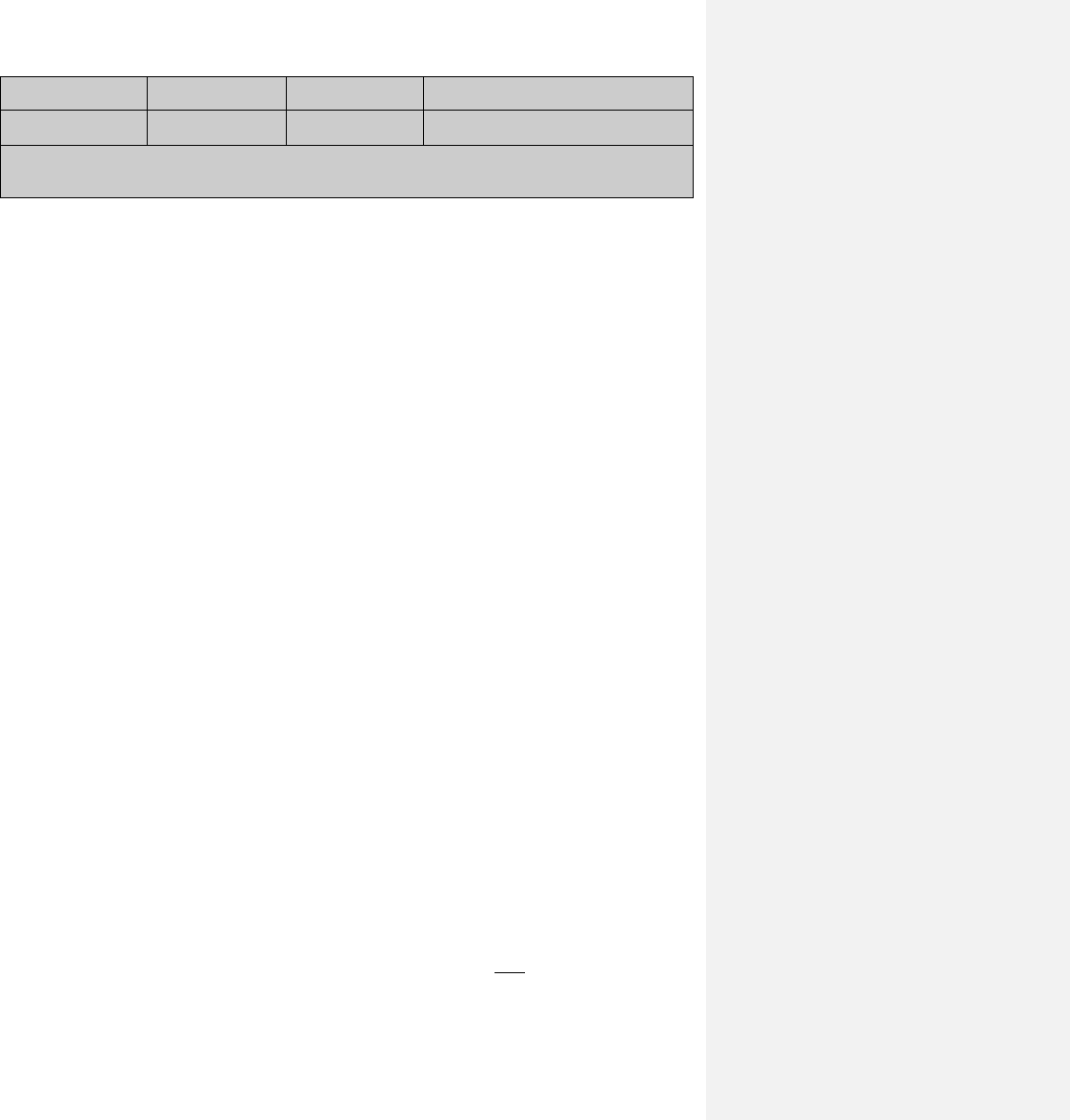
Dates: Received
Reviewed by Staff
Distributed
Considered
4/13/21
RM
Notes: APF 2021-05
Life Actuarial (A) Task Force/ Health Actuarial (B) Task Force
Amendment Proposal Form*
1. Identify yourself, your affiliation and a very brief description (title) of the issue.
Identification: David Neve, VP and Consulting Actuary, Actuarial Resources Corporation
Title of the Issue: Clarify the definition of modeled company investment strategy and the comparison
to the alternative investment strategy.
2. Identify the document, including the date if the document is “released for comment,” and the location
in the document where the amendment is proposed:
January 1, 2020 NAIC Valuation Manual
• VM-01 VM-21 Section 4.D
• VM-20 Section 7.E VM-31 Sections 3.D.6 and 3.F.6
3. Show what changes are needed by providing a red-line version of the original verbiage with deletions
and identify the verbiage to be deleted, inserted or changed by providing a red-line (turn on “track
changes” in Word®) version of the verbiage. (You may do this through an attachment.)
See attached.
4. State the reason for the proposed amendment? (You may do this through an attachment.)
There is an inconsistency in VM-20/VM-21 and VM-31 regarding the term “model investment
strategy”. The term “model investment strategy” is used throughout VM-20 and VM-21 to describe
the investment strategy used in the model as a proxy for the company’s actual investment
strategy. However, VM-31 uses the term “modeled company investment strategy” in several places
rather than “model investment strategy”. “Modeled company investment strategy” is the preferred
term, so VM-20 and VM-21 have been modified to use “modeled company investment strategy” so
that the terminology in VM-20, VM-21 and VM-31 are consistent.
Also, to address the ambiguity of whether the final investment strategy in the model is the initial
investment strategy based on the company’s investment strategy or the alternative investment
strategy when the alternative strategy is constraining, the term “modeled company investment
strategy” has been added to the definitions in VM-01 (and a parenthetical has been added to VM-31)
to clarify that the term refers to the investment strategy in the model prior to comparison to the
alternative investment strategy. In addition, VM-21 has been modified to be consistent with the
wording in VM-20 to clarify that the assets in the alternative investment strategy should use the
same weighted average life (WAL) as the assets in the modeled company investment strategy.
© 2021 National Association of Insurance Commissioners
43
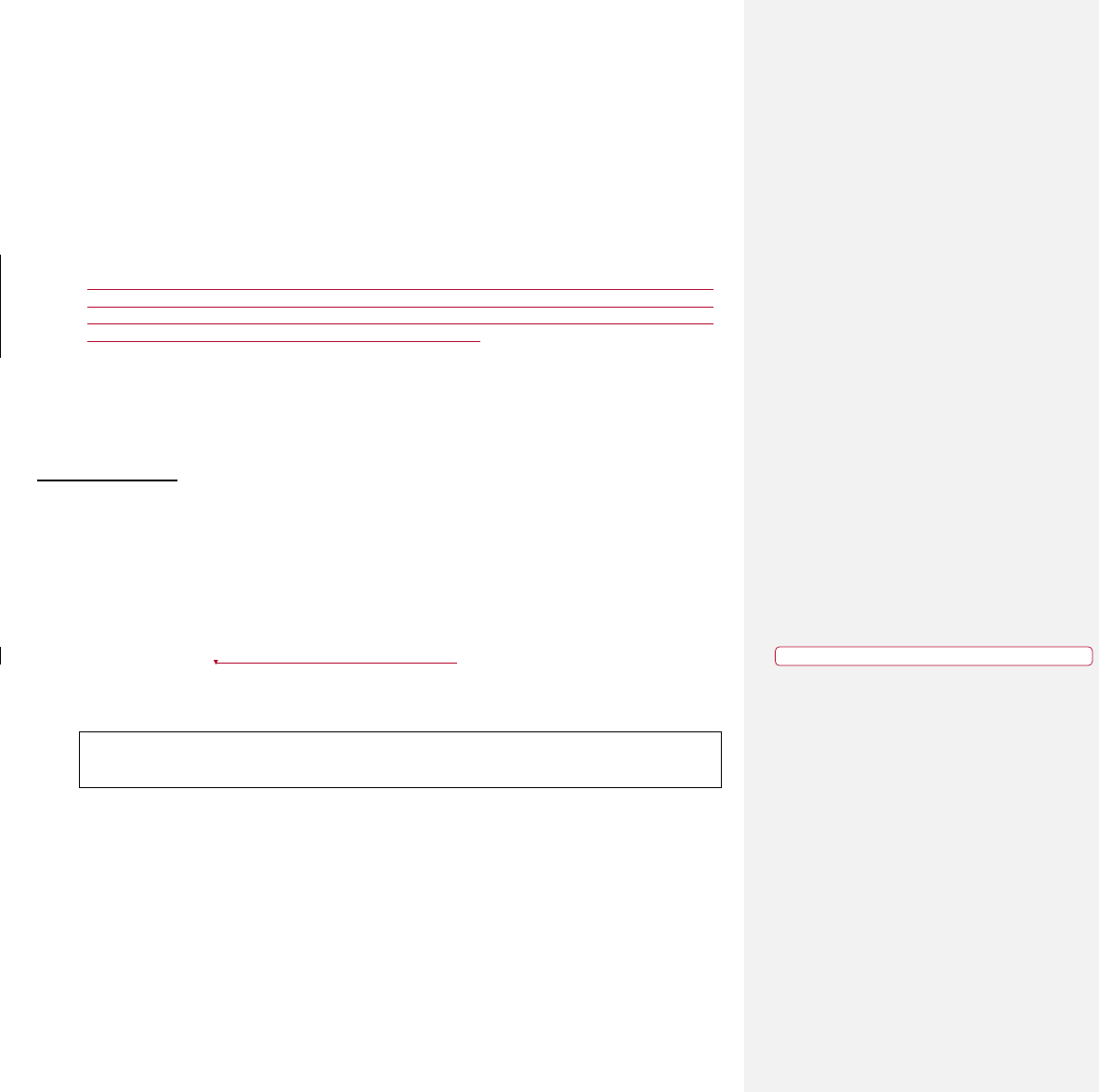
© 2020 National Association of Insurance Commissioners M-2
VM-01 Changes:
VM-01 provides definitions for terms used in the Valuation Manual. The definitions in VM-01 do not apply to
documents outside the Valuation Manual even if referenced or used by the Valuation Manual, such as the AP&P
Manual. Some terms in the Valuation Manual may be defined in specific sections of the Valuation Manual
instead of being defined in VM-01.
• The term “margin” means an amount included in the assumptions used to determine the modeled reserve
that incorporates conservatism in the calculated value consistent with the requirements of the various
sections of the Valuation Manual. It is intended to provide for estimation error and adverse deviation.
• The term “modeled company investment strategy” means the investment strategy used in the model that
is intended to be a representation of the actual investment strategy of the company. It is before the
comparison is made to the alternative investment strategy. It does not refer to the alternative investment
strategy when the alternative investment strategy is constraining.
• The term “modeled reserve” means the deterministic reserve on the policies determined under VM-20
Section 2.A.1.a, 2.A.2.a and 2.A.3.b, plus the greater of the deterministic reserve and the stochastic
reserve on the policies determined under Section 2.A.1.b, 2.A.2.b and 2.A.3.c.
VM-20 Changes:
Section 7: Cash-Flow Models
E. Reinvestment Assets and Disinvestment
1. At the valuation date and each projection interval as appropriate, model the purchase of general
account reinvestment assets with available cash and net asset and liability cash flows in a manner
that is representative of and consistent with the company’s investment policy for each model
segment, subject to the following requirements:
a. The modeled company investment strategy may incorporate a representation of the
actual investment policy that ranges from relatively complex to relatively simple. In any
case, the PBR Actuarial Report shall include documentation supporting the
appropriateness of the representation relative to actual investment policy.
Guidance Note: A complex model representation may include, for example, illiquid or callable assets
whereas a simple model representation may involve mapping of more complex assets to combinations
of, for example, public non-callable corporate bonds, U.S. Treasuries and cash.
b. The final maturities and cash-flow structures of assets purchased in the model, such as
the patterns of gross investment income and principal repayments or a fixed or floating
rate interest basis, shall be determined by the company as part of the model
representation.
c. The combination of price and structure for fixed income investments and derivative
instruments associated with fixed income investments shall appropriately reflect the
then-current U.S. Department of the Treasury (Treasury Department) curve along the
relevant scenario and the requirements for gross asset spread assumptions stated below.
d. For purchases of public non-callable corporate bonds, use the gross asset spreads over
Treasuries prescribed in Section 9.F.8.a through Section 9.F.8.c. (For purposes of this
Deleted: model investment strategy
© 2021 National Association of Insurance Commissioners
44
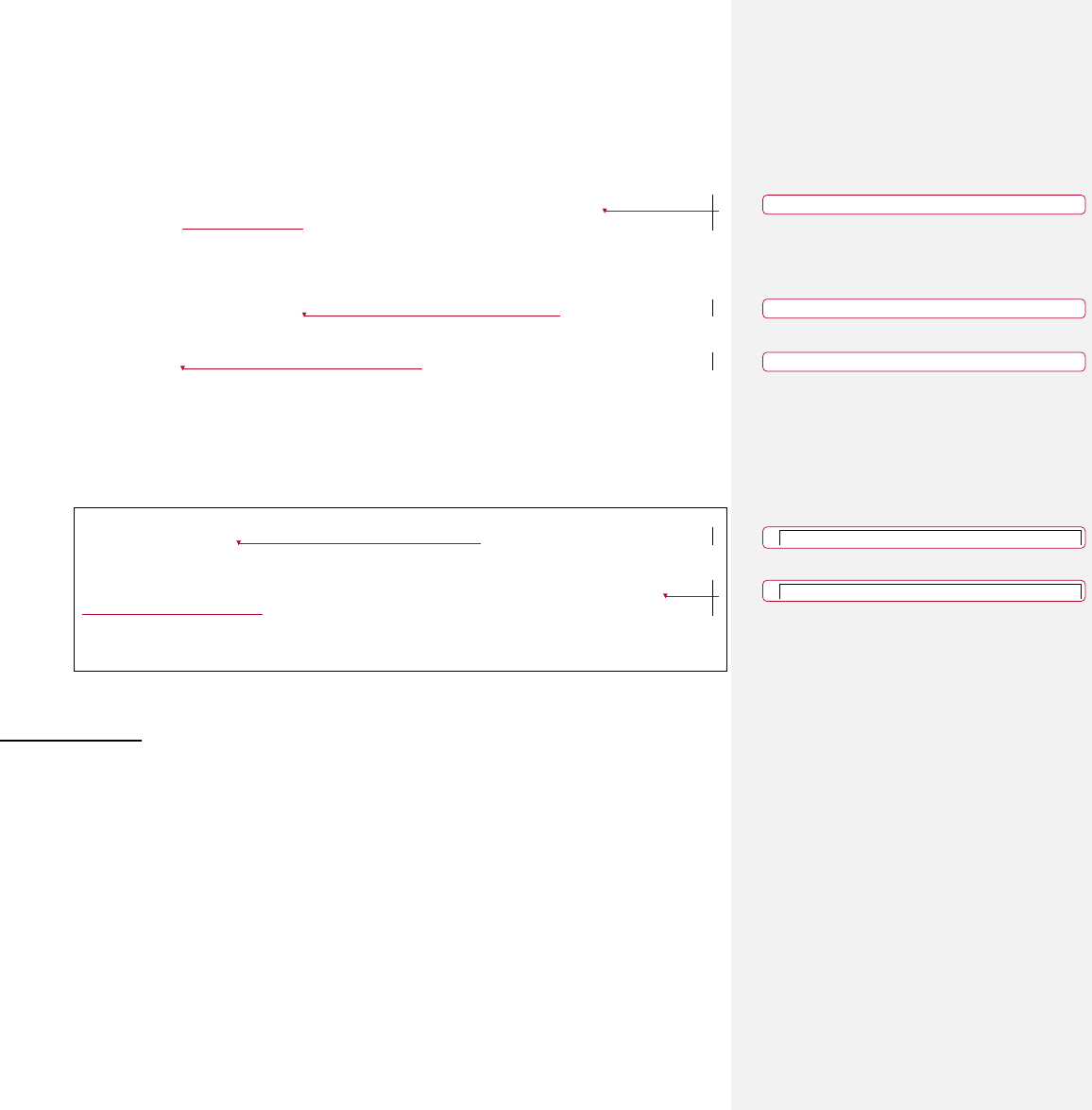
© 2020 National Association of Insurance Commissioners M-3
subsection, “public” incorporates both registered and 144a securities.) The prescribed
spreads reflect current market conditions as of the model start date and grade to long-
term conditions based on historical data at the start of projection year four.
e. For transactions of derivative instruments associated with fixed income investments,
reflect the prescribed assumptions in Section 9.F.8.d for interest rate swap spreads.
f. For purchases of other fixed income investments, if included in the modeled company
investment strategy, set assumed gross asset spreads over Treasuries in a manner that is
consistent with, and results in reasonable relationships to, the prescribed spreads for
public non-callable corporate bonds and interest rate swaps
as defined in Section 9.F.8.
g. Notwithstanding the above requirements, the modeled reserve shall be the higher of that
produced by the modeled company investment strategy and that produced by
substituting an alternative investment strategy in which the fixed income reinvestment
assets have the same weighted average life (WAL) as the reinvestment assets in the
modeled company investment strategy and are all public non-callable corporate bonds
with gross asset spreads, asset default costs and investment expenses by projection year
that are consistent with a credit quality blend of 50% PBR credit rating 6 (A2/A) and
50% PBR credit rating 3 (Aa2/AA).
Policy loans, equities and derivative instruments associated with the execution of a
clearly defined hedging strategy (in compliance with Section 7.L) are not affected by
this requirement.
Guidance Note: VM-31 requires a demonstration of compliance with VM-20 Section 7.E.1.g. In many
cases, particularly if the modeled company investment strategy does not involve callable assets, it is
expected that the demonstration of compliance will not require running the reserve calculation twice.
For example, an analysis of the weighted average net reinvestment spread on new purchases by
projection year (gross spread minus prescribed default costs minus investment expenses) of the modeled
company investment strategy compared to the weighted average net reinvestment spreads by projection
year of the alternative strategy may suffice. The assumed mix of asset types, asset credit quality or the
levels of non-prescribed spreads for other fixed income investments may need to be adjusted to achieve
compliance.
VM-21 Changes:
Section 4: Determination of the Stochastic Reserve
D. Projection of Assets
4. General Account Assets
a. General account assets shall be projected, net of projected defaults, using assumed
investment returns consistent with their book value and expected to be realized in future
periods as of the date of valuation. Initial assets that mature during the projection and
positive cash flows projected for future periods shall be invested in a manner that is
representative of and consistent with the company’s investment policy, subject to the
following requirements:
i. The final maturities and cash flow structures of assets purchased in the model,
such as the patterns of gross investment income and principal repayments or a
Deleted: model investment strategy
Deleted: model investment strategy
Deleted: model investment strategy
Deleted: model investment strategy
Deleted: model investment strategy
© 2021 National Association of Insurance Commissioners
45

© 2020 National Association of Insurance Commissioners M-4
fixed or floating rate interest basis, shall be determined by the company as part
of the model representation;
ii. The combination of price and structure for fixed income investments and
derivative instruments associated with fixed income investments shall
appropriately reflect the projected Treasury Department curve along the
relevant scenario and the requirements for gross asset spread assumptions stated
below;
iii. For purchases of public non-callable corporate bonds, follow the requirements
defined in VM-20 Sections 7.E, 7.F and 9.F. The prescribed spreads reflect
current market conditions as of the model start date and grade to long-term
conditions based on historical data at the start of projection year four;
iv. For transactions of derivative instruments associated with fixed income
investments, reflect the prescribed assumptions in VM-20 Section 9.F for
interest rate swap spreads;
v. For purchases of other fixed income investments, if included in the modeled
company investment strategy, set assumed gross asset spreads over U.S.
Treasuries in a manner that is consistent with, and results in reasonable
relationships to, the prescribed spreads for public non-callable corporate bonds
and interest rate swaps.
b. Notwithstanding the above requirements, the stochastic reserve shall be the higher of
that produced by the modeled company investment strategy and that produced by
substituting an alternative investment strategy in which the fixed income reinvestment
assets have the same weighted average life (WAL) as the reinvestment assets in the
modeled company investment strategy and are all public non-callable corporate bonds
with gross asset spreads, asset default costs, and investment expenses by projection year
that are consistent with a credit quality blend of 50% PBR credit rating 6 (A2/A) and
50% PBR credit rating 3 (Aa2/AA).
Policy loans, equities and derivative instruments associated with the execution of a
clearly defined hedging strategy are not affected by this requirement.
Drafting Note: This limitation is being referred to Life Actuarial (A) Task Force for review.
VM-31 Changes:
Section 3: PBR Actuarial Report Requirements
D. Life Report – This subsection establishes the Life Report requirements for individual life insurance
policies valued under VM-20.
6. Assets – The following information regarding the asset assumptions used by the company in
performing a principle-based valuation under VM-20:
r. Modeled Company Investment Strategy and Reinvestment Assumptions – Description
of the modeled company investment strategy (before comparison to the alternative
investment strategy), including asset reinvestment and disinvestment assumptions, and
Deleted: model investment strategy
Deleted: model investment strategy
Deleted: any non-prescribed asset spreads shall be
adjusted as necessary so that the aggregate reserve is not
less than that which would be obtained
Deleted: all
Deleted: used in the demonstration of compliance
required by VM-31 Section 3.D.6.s
© 2021 National Association of Insurance Commissioners
46
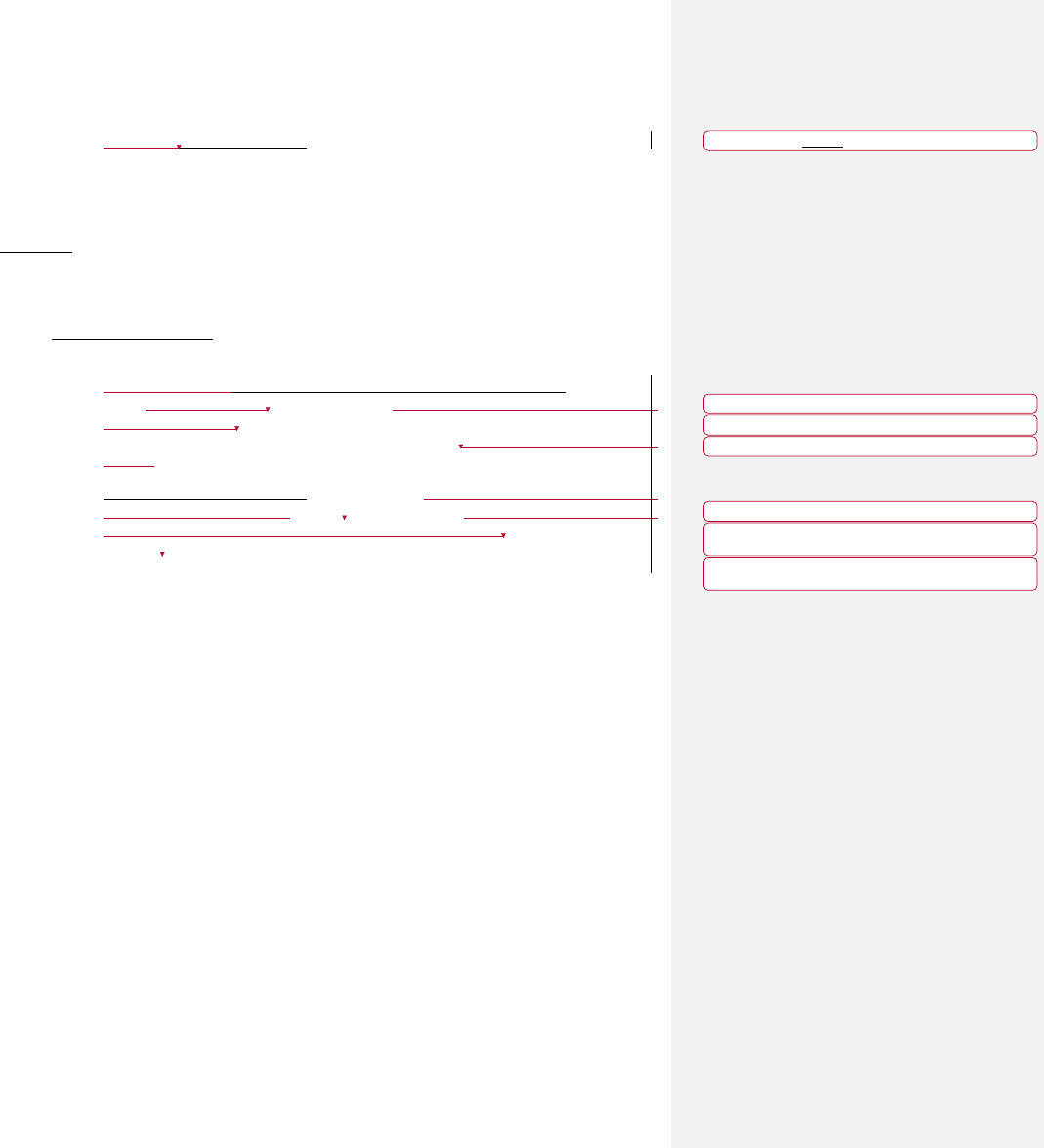
© 2020 National Association of Insurance Commissioners M-5
documentation supporting the appropriateness of the modeled company investment
strategy compared to the actual investment policy of the company.
s. Alternative Investment Strategy – Documentation demonstrating compliance with VM-
20 Section 7.E.1.g, showing that the modeled reserve is the higher of that produced
using the modeled company investment strategy and the alternative investment strategy.
F. VA Report – This subsection establishes the VA Report requirements for variable annuity contracts
valued under VM-21.
6. General Account Assets – The following information regarding the general account asset
assumptions used by the company in performing a principle-based valuation under VM-21:
a. Modeled Company Investment Strategy and Reinvestment Assumptions – Description
of the modeled company investment strategy (before the comparison to the alternative
investment strategy) , including asset reinvestment and disinvestment assumptions, and
documentation supporting the appropriateness of the modeled company investment
strategy compared to the actual investment policy of the company.
b. Alternative Investment Strategy – Documentation demonstrating compliance with VM-
21 Section 4.D.4.b showing that the stochastic reserve is the higher of that produced
using the modeled company investment strategy and the alternative investment
strategy.
Deleted: Modeled
Deleted: asset
Deleted: used in the model
Deleted: model investment strategy
Deleted: model investment strategy does not produce a
Deleted: that is less than the stochastic reserve that would
result by assuming an
Deleted: based on the limitations defined in VM-21
Section 4.D.4.b.
© 2021 National Association of Insurance Commissioners
47

© 2020 National Association of Insurance Commissioners
Dates: Received
Reviewed by Staff
Distributed
Considered
4/19/21
RM
Notes: APF 2021-06
Life Actuarial (A) Task Force/ Health Actuarial (B) Task Force
Amendment Proposal Form*
1. Identify yourself, your affiliation and a very brief description (title) of the issue.
Angela McNabb & Pat Allison – NAIC staff support
Revisions to VM-50 and VM-51 to allow for data experience reporting to be performed by a reinsurer or
third-party administrator and a correction to VM-51 Appendix 4.
2. Identify the document, including the date if the document is “released for comment,” and the location in the
document where the amendment is proposed:
January 1,2021, version of the Valuation Manual – VM-50 Section 4.B.2; VM-50 Section 4.B.3; VM-51
Section 2.B; VM-51 Appendix 4.
3. Show what changes are needed by providing a red-line version of the original verbiage with deletions and
identify the verbiage to be deleted, inserted or changed by providing a red-line (turn on “track changes” in
Word®) version of the verbiage. (You may do this through an attachment.)
See attached redline document.
4. State the reason for the proposed amendment? (You may do this through an attachment.)
This APF is needed for the following reasons:
1. VM-51 Appendix 4 includes a column indicating the position within the data file for each field.
This is not valid as the NAIC’s RDC system was designed to accept comma delimited files. This
APF will remove that column.
2. The VM-51 Section 2.B states that companies must submit data for all their direct written business
prior to reinsurance ceded. The only exception is in the case of assumption reinsurance where
policies have been legally novated. The NAIC has received feedback from a number of companies
indicating that they have business that is reinsured and fully administered by the reinsurer. Since
the ceding companies do not have the data, it represents a hardship for them to submit this business.
3. Currently, VM-51 Appendix 4 only allows one company code. In order to allow a reinsurer or third-
party administrator to submit data on behalf of the direct writer, the NAIC must be able to identify
both the submitting company and the direct writer of the block of business. This APF adds an
additional field to accomplish this. By having the submitting company’s code, any questions the
NAIC has regarding the data can be directed to the submitting company without fear of breaching
confidentiality.
4. Having separate identifiers for the submitting company and direct writer will allow the NAIC to
validate the reconciliations required by VM-50 Section 4.B.3.
Below are examples showing how the reconciliations would work according to the amended
language in VM-50 Section 4.B.3.
Example 1: This example illustrates the scenario described in redlined language in VM-50 Section
4.B.3.c. Company A is a direct writer selected for VM-51 reporting.
o The company has retained and administers 35,000 policies (out of a total of 100,000).
o Company B (a reinsurer not selected to submit their own business) administers 50,000
policies for Company A.
© 2021 National Association of Insurance Commissioners
48
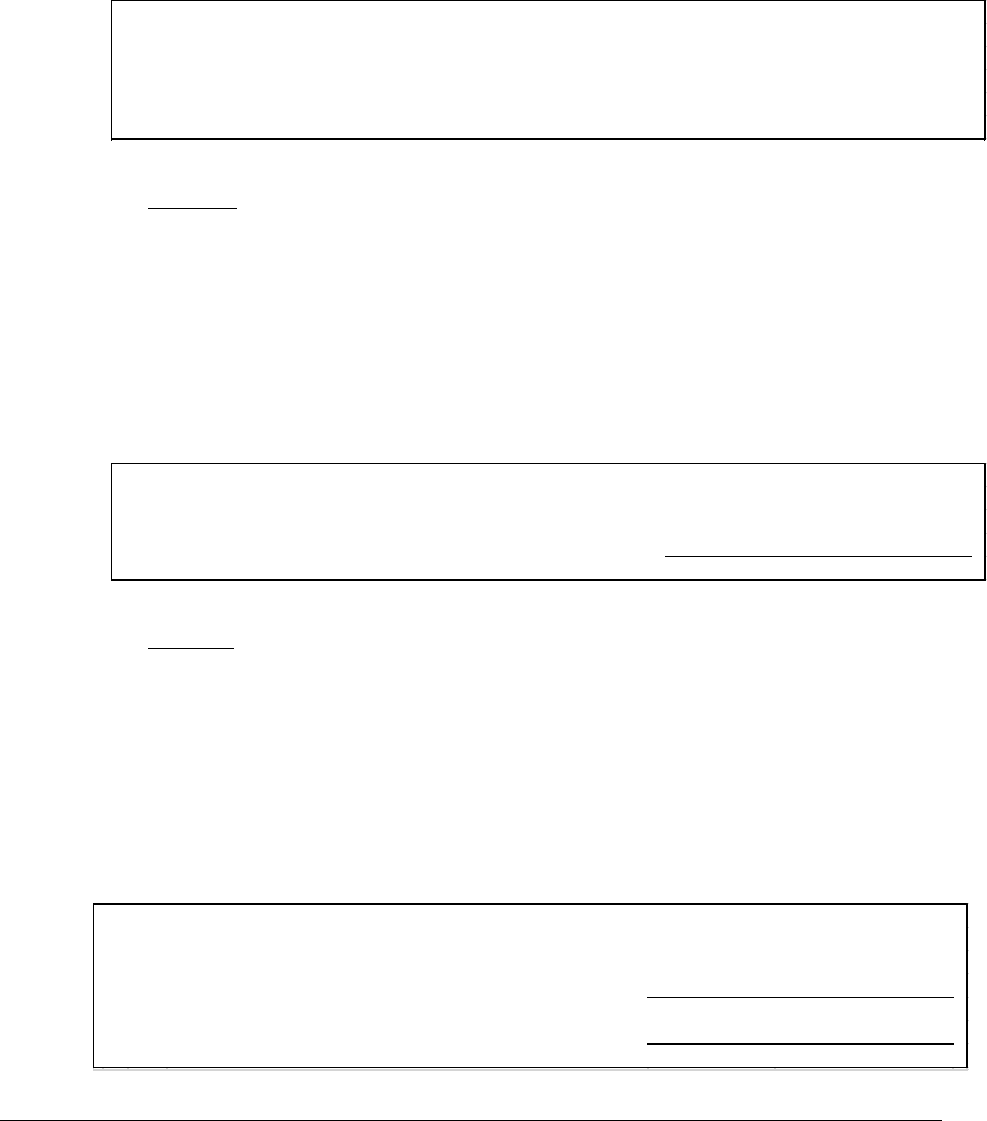
Experience Reporting Requirements VM-50
© 2020 National Association of Insurance Commissioners 50-1
o Company C (a reinsurer selected to submit their own direct business) administers 15,000
policies for Company A.
Policy Count Insurance Amount
Total Business as Reported in Company A's Annual Statement 100,000 2,500,000,000
Business being reported by Company B (50,000) (1,250,000,000)
Business being reported by Company C (15,000) (50,000,000)
Totals included in Company A's data submissions 35,000 1,200,000,000
RECONCILIATION FOR COMPANY A (Direct Writer)
Example 2: This example illustrates the scenario described in the redlined language in VM-50
Section 4.B.3.a. Company D is another direct writing company selected for VM-51 reporting.
Company B has been asked by Companies A and D to submit data Company B has assumed and
administers.
o Company B administers 50,000 policies for Company A.
o Company B administers 100,000 policies for Company D.
o Company B is not required to reconcile to their Annual Statement since they were not
selected to submit their direct business.
o In this example, Company B is a reinsurer. However, Company B could also be a third-
party administrator that is not an insurance company.
RECONCILIATION FOR COMPANY B
Policy Count Insurance Amount
Business being reported on behalf of Company A 50,
000 1,250,000,000
Business being reported on behalf of Company D 100,000 1,500,000,000
Totals included in Company B's data submission 150,000 2,750,000,000
Example 3: This example illustrates the scenario described in redlined language in VM-50 Section
4.B.3.b. Company C has also been asked by company A to submit data Company C has assumed
and administers.
o Company C has 1,500,000 policies reported in their Annual Statement.
o Company C has 250,000 of reinsurance assumed policies which should not be included in
their submission. Reinsurance assumed should only be included when the ceding company
requests that the reinsurer report it on their behalf.
o Company C has 1,250,000 policies of direct written business that they must report.
o In addition to Company C’s direct written business, they will also be reporting 15,000
policies that they administer on behalf of Company A (per Company A’s request).
RECONCILIATION FOR COMPANY C
Policy Count Insurance Amount
Total Business as Reported in Company C's Annual Statement 1,500,000 180,000,000,000
Assumed Reinsurance Total (250,000) (6,000,000,000)
Subtotal - Direct Writeen Business for Company C 1,250,000 174,000,000,000
Business being reported on behalf of Company A 15,000 50,000,000
Totals included in Company C's data submissions 1,265,000 174,050,000,000
© 2021 National Association of Insurance Commissioners
49

© 2020 National Association of Insurance Commissioners
Dates: Received
Reviewed by Staff
Distributed
Considered
4/19/21
RM
Notes: APF 2021-06
© 2021 National Association of Insurance Commissioners
50

Experience Reporting Requirements VM-50
© 2020 National Association of Insurance Commissioners 50-1
VM-50: Experience Reporting Requirements
Table of Contents
Section 1: Overview ....................................................................................................................... 50-1
Section 2: Statutory Authority and Experience Reporting Agent .................................................. 50-2
Section 3: Experience Reporting Requirements ............................................................................. 50-2
Section 4: Data Quality and Ownership ......................................................................................... 50-5
Section 5: Experience Data ............................................................................................................ 50-8
Section 6: Confidentiality of Data .................................................................................................. 50-9
Section 1: Overview
A. Purpose of the Experience Reporting Requirements
The purpose of this section is to define the requirements pursuant to Section 13 of Model #820 for
the submission and analysis of company data. It includes consideration of the experience reporting
process, the roles of the relevant parties, and the intended use of and access to the data, and the
process to protect the confidentiality of the data as outlined in Model #820.
B. PBR and the Need for Experience Data
The need for experience data includes but is not limited to:
1. PBR may require development of assumptions and margins based on company experience,
industry experience or a blend of the two. The collection of experience data provides a
database to establish industry experience tables or factors, such as valuation tables or
factors as needed.
2. The development of industry experience tables provides a basis for assumptions when
company data is not available or appropriate and provides a comparison basis that allows
the state insurance regulator to perform reasonableness checks on the appropriateness of
assumptions as documented in the actuarial reports.
3. The collection of experience data may assist state insurance regulators, reviewing actuaries,
auditors and other parties with authorized access to the PBR actuarial reports to perform
reasonableness checks on the appropriateness of principle-based methods and assumptions,
including margins, documented in those reports.
4. The collection of experience data provides an independent check on the accuracy and
completeness of company experience studies, thereby encouraging companies to establish
a disciplined internal process for producing experience studies. Industry aggregate or sub-
industry aggregate experience studies may assist an individual company for use in setting
experience-based assumptions. As long as the confidentiality of each company's submitted
results is maintained, a company may obtain results of a study on companies' submitted
experience for use in formulating experience assumptions.
5. The collection of experience data will provide a basis for establishing and updating the
assumptions and margins prescribed by regulators in the Valuation Manual.
6. The reliability of assumptions based on company experience is founded on reliable
historical data from comparable characteristics of insurance policies including, but not
limited to, underwriting standards and insurance policy benefits and provisions. As with
© 2021 National Association of Insurance Commissioners
51
Experience Reporting Requirements VM-50
© 2020 National Association of Insurance Commissioners 50-2
all forms of experience data analysis, larger and more consistent statistical samples have a
greater probability of producing reliable analyses of historic experience than smaller or
inconsistent samples. To improve statistical credibility, it is necessary that experience data
from multiple companies be combined and aggregated.
7. The collection of experience data allows state insurance regulators to identify outliers and
monitor changes in company experience factors versus a common benchmark to provide a
basis for exploring issues related to those differences.
8. PBR is an emerging practice and will evolve over time. Research studies other than those
contemplated at inception may be useful to improvement of the PBR process, including
increasing the accuracy or efficiency of models. Because the collection of experience data
will facilitate these improvements, research studies of various types should be encouraged.
9. The collection of experience data is not intended as a substitute for a robust review of
companies’ methodologies or assumptions, including dialogue with companies’ actuaries.
Section 2: Statutory Authority and Experience Reporting Agent
A. Statutory Authority
1. Model #820 provides the legal authority for the Valuation Manual to prescribe experience
reporting requirements with respect to companies and lines of business within the scope of
the model.
2. The statutes and regulations requiring data submissions generally apply to all companies
licensed to sell life insurance, A&H insurance and deposit-type contracts. These companies
must submit experience data as prescribed by the Valuation Manual.
3. Section 4A(5) of Model #820 defines the data to be collected to be confidential.
B. Experience Reporting Agent
1. For the purposes of implementing the experience reporting required by state laws based on
Section 13 of Model #820, an Experience Reporting Agent will be used for the purpose of
collecting, pooling and aggregating data submitted by companies as prescribed by lines of
business included in VM-51.
2. The NAIC is designated as Experience Reporting Agent for the Statistical Plan for
Mortality beginning Jan. 1, 2020, and NAIC expertise in collecting and sorting data from
multiple sources into a cohesive database in a secure and efficient manner, but the
designation of the NAIC as Experience Reporting Agent does not preclude state insurance
regulators from independently engaging other entities for similar data required under this
Valuation Manual or other data purposes.
Section 3: Experience Reporting Requirements
A. Statistical Plans
1. Consistent with state laws based on Section 13 of Model #820, the Experience Reporting
Agent shall collect experience data based on statistical plans defined in the Valuation
Manual.
2. Statistical plans are detailed instructions that define the type of experience data being
collected (e.g., mortality; elective policyholder behavior, such as surrenders, lapses,
© 2021 National Association of Insurance Commissioners
52
Experience Reporting Requirements VM-50
© 2020 National Association of Insurance Commissioners 50-3
premium payment patterns, etc.; and company expense data, such as commissions, policy
expenses, overhead expenses etc.). The state insurance regulators serving on the Life
Actuarial (A) Task Force and Health Actuarial (B) Task Force, or any successor body, will
be responsible for prescribing the requirements for any statistical plan by applicable line
of business. For each type of experience data being collected, the statistical plan will define
the data elements and format of each data element, as well as the frequency of the collection
of experience data. The statistical plan will define the process and the due dates for
submitting the experience data. The statistical plan will define criteria that will determine
which companies must submit the experience data. The statistical plan will also define the
scope of business that is to be included in the experience data collection, such as lines of
business, product types, types of underwriting, etc. Statistical plans are defined in VM-51
of the Valuation Manual. Statistical plans will be added to VM-51 of the Valuation Manual
when they are ready to be implemented. Additional data elements and formats to be
collected will be added as necessary, in subsequent revisions to the Valuation Manual.
3. Data must conform to common data definitions. Standard definitions provide for stable and
reliable databases and are the basis of meaningful aggregated insurance data. This will be
accomplished through a uniform set of suggested minimum experience reporting
requirements for all companies.
B. Role and Responsibilities of the Experience Reporting Agent
1. Based on requirements of VM-51, the Experience Reporting Agent may design its data
collection procedures to ensure it is able to meet these regulatory requirements. The
Experience Reporting Agent will provide sufficient notice to reporting companies of
changes, procedures and error tolerances to enable the companies to adequately prepare for
the data submission.
2. The Experience Reporting Agent will aggregate the experience of companies using a
common set of classifications and definitions to develop industry experience tables.
3. The Experience Reporting Agent will seek to enter into agreements with a group of state
insurance departments for the collection of information under statistical plans included in
VM-51. The number of states that contract with the Experience Reporting Agent will be
based on achieving a target level of industry experience prescribed by VM-51 for each line
of business in preparing an industry experience table.
a. The agreement between the state insurance department(s) and the Experience
Reporting Agent will be consistent with any data collection and confidentiality
requirements included within Model #820 and the Valuation Manual. Those state
insurance departments seeking to contract with the Experience Reporting Agent will
inform the Experience Reporting Agent of any other state law requirements, including
laws related to the procurement of services that will need to be considered as part of
the contracting process.
b. Use of the Experience Reporting Agent by the contracting state insurance departments
does not preclude those state insurance departments or any other state insurance
departments from contracting independently with another Experience Reporting Agent
for similar data required under this Valuation Manual or other data purposes.
4. The Life Actuarial (A) Task Force or Health Actuarial (B) Task Force will be responsible
for the content and maintenance of the experience reporting requirements. The Life
© 2021 National Association of Insurance Commissioners
53
Experience Reporting Requirements VM-50
© 2020 National Association of Insurance Commissioners 50-4
Actuarial (A) Task Force or Health Actuarial (B) Task Force or a working group will
monitor the data definitions, quality standards, appendices and reports described in the
experience reporting requirements to assure that they take advantage of changes in
technology and provide for new regulatory and company needs.
5. To ensure that the experience reporting requirements will continue to be useful, the Life
Actuarial (A) Task Force or Health Actuarial (B) Task Force will seek to review each
statistical plan on a periodic basis at least once every five years. The Life Actuarial (A)
Task Force or Health Actuarial (B) Task Force should have regular dialogue, feedback and
discussion of this topic. In seeking feedback and engaging in discussions, the Life
Actuarial (A) Task Force or Health Actuarial (B) Task Force shall include a broad range
of data users, including state insurance regulators, consumer representatives, members of
professional actuarial organizations, large and small companies, and insurance trade
organizations.
6. The Experience Reporting Agent will obtain and undergo at least annual external audits to
validate that controls with respect to data security and related topics are consistent with
industry standards and best practices. The Experience Reporting Agent will provide a copy
of any report prepared in connection with such an audit, upon a company’s request. In the
event of a material deficiency identified in the external audit or in the event of an identified
security breach affecting the Experience Reporting Data, the Experience Reporting Agent
shall notify the NAIC, and the states that have directed the Experience Reporting Agent to
collect this information, of the nature and extent of such an issue. In the event of an
identified security breach affecting Experience Reporting Data, the Experience Reporting
Agent shall also notify any insurer whose data was affected. Upon good cause shown, the
Experience Reporting Agent will take reasonable actions to protect the data under its
control, including that the data submission process may be suspended until the security
issue has been remediated. If data submission is suspended under this section, the
Experience Reporting Agent will work with the states that have directed collection to issue
appropriate guidance modifying the requirements of VM 51, Section 2.D. The term “good
cause” shall mean that there is the chance of irreparable harm upon continuing the
transmission of the data to the Experience Reporting Agent. Once the security issue has
been remediated, the Experience Reporting Agent shall notify the NAIC and the states that
have directed the Experience Reporting Agent to collect this information. The Experience
Reporting Agent shall work in conjunction with the NAIC and the states that have directed
the Experience Reporting Agent to collect this information to develop a revised data
submission schedule for any deferred submissions. The revised schedule shall provide for
reasonable timing for companies to provide such data.
C. Role of Other Organizations
The Experience Reporting Agent may ask for other organizations to play a role for one or more of
the following items, including the execution of agreements and incorporation of confidentiality
requirements where appropriate:
1. Consult with the NAIC (as appropriate) in the design and implementation of the experience
retrieval process;
2. Assist with the data validation process for data intended to be forwarded to the SOA or
other actuarial professional organizations to develop industry experience tables;
3. Analyze data, including any summarized or aggregated data, produced by the Experience
Reporting Agent;
© 2021 National Association of Insurance Commissioners
54
Experience Reporting Requirements VM-50
© 2020 National Association of Insurance Commissioners 50-5
4. Create initial experience tables and any revised tables;
5. Provide feedback in the development and evaluation of requests for proposal for services
related to the reporting of experience requirement;
6. Create statutory valuation tables as appropriate and necessary;
7. Determine and produce additional industry experience tables or reports that might be
suggested by the data collected;
8. Work with the Life Actuarial (A) Task Force or Health Actuarial (B) Task Force, in
accordance with the Valuation Manual governance process, in developing new reporting
formats and modifying current experience reporting formats;
9. Support a close working relationship among all parties having an interest in the success of
the experience reporting requirement.
Section 4: Data Quality and Ownership
A. General Requirements
1. The quality, accuracy and consistency of submitted data is key to developing industry
experience tables that are statistically credible and represent the underlying emerging
experience. Statistical procedures cannot easily detect certain types of errors in reporting
of data. For example, if an underwriter fails to evaluate the proper risk classification for an
insured, then the “statistical system” has little chance of detecting such an error unless the
risk classification is somehow implausible.
2. To ensure data quality, coding a policy, loss, transaction or other body of data as anything
other than what it is known as is prohibited. This does not preclude a company from coding
a transaction with incomplete detail and reporting such transactions to the Experience
Reporting Agent, but there can be nothing that is known to be inaccurate or deceptive in
the reporting. An audit of a company’s data submitted to the Experience Reporting Agent
under a statistical plan in VM-51 can include comparison of submitted data to other
company files.
3. When the Experience Reporting Agent determines that the cause of an edit exception could
produce systematic errors, the company must correct the error and respond in a timely
fashion, with priority given to errors that have the largest likelihood to affect a significant
amount of data. When an error is found that has affected data reported to the Experience
Reporting Agent, the company shall report the nature of the error and the nature of its likely
impact to the Experience Reporting Agent. Retrospective correction of data subject to
systematic errors shall be done when the error affects a significant amount of data that is
still being used for regulatory purposes and it is reasonably practical to make the correction
through the application of a computer program or a procedure applied to the entire data set
without the need to manually examine more than a small number of individual records.
B. Specific Requirements
1. Once the data file is submitted by the company, the Experience Reporting Agent will
perform a validity check of the data elements within each data record in the data file for
proper syntax and verify that required data elements are populated. The Experience
Reporting Agent will notify the company of all syntax errors and any missing data elements
© 2021 National Association of Insurance Commissioners
55

Experience Reporting Requirements VM-50
© 2020 National Association of Insurance Commissioners 50-6
that are required. Companies are required to respond to the Experience Reporting Agent
by submitting a corrected data file. The Experience Reporting Agent will provide sufficient
notice to reporting companies of changes, procedures and error tolerances to enable the
companies to adequately prepare for the data submission.
2. Each submission of data filed by an insurance a company with the Experience Reporting
Agent shall be balanced against a set of control totals provided by the company with the
data submission. At a minimum, these control totals shall include applicable record counts,
claim counts, amounts insured and claim amounts. Any submission that does not balance
to the control totals shall be referred to the company for review and resolution.
3. Each company submitting experience data and each company on whose behalf data is being
submitted as required in VM-51 will perform a reconciliation between its submitted
experience data with its statistical and financial data, and provide an explanation of
differences, to the Experience Reporting Agent. The reconciliation must include policy
count and insurance amount.
a. If a third-party administrator that is not an insurance company or an insurance
company not required to submit their direct data is submitting data on behalf of an
insurance company, the reconciliation will consist of separate lines identifying
each insurance company for whom this entity is submitting data.
b. If the third-party administrator is an insurance company that is required to submit
their direct data, the reconciliation must include separate lines identifying each
additional company whose data is being submitted.
c. The reconciliation to company statistical and financial data for both the direct
writer and the reinsurer or third-party administrator must include lines indicating
the amount of business that is being reported by the reinsurer or third-party
administrator. The NAIC will use this information to confirm that all in-scope
business is reported and there is no double counting of policies.
4. Validity checks are designed to identify:
a. Improper syntax or incomplete coding (e.g., a numeric field that is not numeric,
missing elements of a date field);
b. Data elements containing codes that are not contained within the set of possible
valid codes;
c. Data elements containing codes that are contained within the set of possible valid
codes but are not valid in conjunction with another data element code;
d. Required data elements that are not populated.
5. Where quality would not appear to be significantly compromised, the Experience
Reporting Agent may use records with missing or invalid data if such invalid or missing
data do not involve a field that is relevant or would affect the credibility of the report. For
companies with a body of data for a state, line of business, product type or observation
period that fails to meet these standards, the Experience Reporting Agent will use its
discretion, with regulatory disclosure of key decisions made, regarding the omission of the
entire body of data or only including records with valid data. Completeness of reports is
desirable, but not at the risk of including a body of data that appears to have an
unreasonably high chance of significant errors.
© 2021 National Association of Insurance Commissioners
56
Experience Reporting Requirements VM-50
© 2020 National Association of Insurance Commissioners 50-7
6. Errors of a consistent nature are referred to as “systematic.” Incorrect coding instructions
can introduce errors of a consistent nature. Programming errors within the data processing
system of insurer company can also produce systematic miscoding as the system converts
data to the required formats for experience reporting. Most systematic errors will produce
data that, when reviewed using tests designed to reveal various types of systematic errors,
will appear unreasonable and likely to be in error. In addition, some individual coding
errors may produce erroneous results that show up when exposures and losses are
compared in a systematic fashion. Such checking often cannot, however, provide a
conclusive indication that data with unusual patterns is incorrect. The Experience
Reporting Agent will perform tests and look at trends using previously reported data to
determine if systematic errors or unusual patterns are occurring.
7. The Experience Reporting Agent will undertake reasonability checks that include the
comparison of aggregate and company experience for underwriting class and type of
coverage data elements for the current reporting period to company and aggregate
experience from prior periods for the purpose of identifying potential coding or reporting
errors. When reporting instructions are changed, newly reported data elements shall be
examined to see that they correlate reasonably with data elements reported under the old
instructions.
8. At a minimum, reasonability checks by the Experience Reporting Agent will include:
a. An unusually large percentage of company data reported under a single or very
limited number of categories;
b. Unusual or unlikely reporting patterns in a company’s data;
c. Claim amounts that appear unusually high or low for the corresponding exposures;
d. Reported claims without corresponding policy values and exposures;
e. Unreasonable loss frequencies or amounts in comparison to ranges of expectation
that recognize statistical fluctuation;
f. Unusual shifts in the distribution of business from one reporting period to the next.
9. If a company’s unusual pattern under Section 4.B.8.a, Section 4.B.8.b or Section 4.B.8.c is
verified as accurate (that is, the reason for the apparent anomaly is an unusual mix of
business), then it is not necessary that a similar pattern for the same company be
reconfirmed year after year.
10. The Experience Reporting Agent will keep track of the results of the validity and
reasonability checks and may adjust thresholds in successive reporting years to maintain a
reasonable balance between the magnitude of errors being found and the cost to companies.
11. Results that may indicate a likelihood of critical indications, as defined below, will be
reported to the company with an explanation of the unusual findings and their possible
significance. When the possible or probable errors appear to be of a significant nature, the
Experience Reporting Agent will indicate to the company that this is a “critical indication.”
“Critical indications” are those that, if not corrected or confirmed, would leave a significant
degree of doubt whether the affected data should be used in reports to the state insurance
regulator and included in industry databases. It is intended that Experience Reporting
Agents will have reasonable flexibility to implement this under the direction of the state
insurance regulators. Also, under the direction of the state insurance regulators, the
Experience Reporting Agent may grade the severity of indications, or it may simply
© 2021 National Association of Insurance Commissioners
57
Experience Reporting Requirements VM-50
© 2020 National Association of Insurance Commissioners 50-8
identify certain indications as critical. While companies are expected to undertake a
reasonable examination of all indications provided to them, they are not required to respond
to every indication except for those labeled by the Experience Reporting Agent as
“critical.”
12. The Experience Reporting Agent will use its discretion regarding the omission of data from
reports owing to the failure of an insurer company to respond adequately to unusual
reasonability indications. Completeness of reports is desirable, but not at the risk of
including data that appears to have an unreasonably high chance of containing significant
errors.
13. Companies shall acknowledge and respond to reasonability queries from the Experience
Reporting Agent. This shall include specific responses to all critical indications provided
by the Experience Reporting Agent. Other indications shall be studied for apparent errors,
as well as for indications of systematic errors. Corrections for critical indications shall be
provided to the Experience Reporting Agent or, when a correction is not feasible, the extent
and nature of the error shall be reported to the Experience Reporting Agent.
C. Ownership of Data
1. Experience data submitted by companies to the Experience Reporting Agent will be
considered the property of the companies submitting such data, but the recognition of such
ownership will not affect the ability of state insurance regulators or the NAIC to use such
information as authorized by state laws based on Model #820 or the Valuation Manual, or,
in case of state insurance regulators, for solvency oversight, financial examinations and
financial analysis.
2. The Experience Reporting Agent will be responsible for maintaining data, error reports,
logs and other intermediate work products, and reports for use in processing,
documentation, production and reproduction of reports provided to state insurance
regulators in accordance with the Valuation Manual. The Experience Reporting Agent will
be responsible for demonstrating such reproducibility at the request of state insurance
regulators or an auditor designated by state insurance regulators.
Section 5: Experience Data
A. Introduction
1. Using the data collected under statistical plans, as defined in the Valuation Manual, the
Experience Reporting Agent produces aggregate databases as defined by this Valuation
Manual. The Experience Reporting Agent, and/or other persons assisting the Experience
Reporting Agent, will utilize those databases to produce industry experience tables and
reports as defined in the Valuation Manual. In order to ensure continued relevance of
reports, each defined data collection and resulting report structure shall be reviewed for
usefulness at least once every five years since initial adoption or prior review.
2. Data compilations are evaluated according to four distinct, and often competing, standards:
quality, completeness, timeliness and cost. In general, quality is a primary goal in
developing any statistical data report. The priorities of the other three standards vary
according to the purpose of the report.
3. The Experience Reporting Agent may modify or enlarge the requirements of the Valuation
Manual, through recommendation to the Life Actuarial (A) Task Force or Health Actuarial
(B) Task Force and in accordance with the Valuation Manual governance process for
information to accommodate changing needs and environments. However, in most cases,
© 2021 National Association of Insurance Commissioners
58
Experience Reporting Requirements VM-50
© 2020 National Association of Insurance Commissioners 50-9
changes to existing data reporting systems will be feasible only to provide information on
future transactions. Requirements to submit new information may require that companies
change their systems. Also, the Experience Reporting Agent may need several years before
it can generate meaningful data meeting the new requirements with matching claims and
insured amounts. The exact time frames for implementing new data requirements and
producing reports will vary depending on the type of reports.
B. Design of Reports Linked to Purpose
Fundamental to the design of each report is an evaluation of its purpose and use. The Life Actuarial
(A) Task Force and Health Actuarial (B) Task Force shall specify model reports responding to
general regulatory needs. These model reports will serve the basic informational needs of state
insurance regulators. To address a particular issue or problem, a state insurance regulator may have
to request to the Life Actuarial (A) Task Force or Health Actuarial (B) Task Force that additional
reports be developed.
C. Basic Report Designs
1. The Life Actuarial (A) Task Force or Health Actuarial (A) Task Force will designate basic
types of reports to meet differing needs and time frames. Each statistical plan defined in
VM-51 of the Valuation Manual will provide a detailed description of the reports, the
frequency and time frame for the reports. Statistical compilations are anticipated to be the
primary reports.
2. Statistical compilations are aggregate reports that generally match appropriate exposure
amounts and transaction event amounts to evaluate the recent experience for a line of
business. For example, a statistical compilation of mortality experience would match
insurance face amounts exposed to death with actual death claims paid. Here the exposure
amount is the total insurance face amount exposed to death, and the transaction event
amounts would be the death claims paid. As another example, a statistical compilation of
surrender experience would match total cash surrender amounts exposed to surrender with
actual surrender amounts paid. Here the exposure amount is the total cash surrender
amounts that could be surrendered, and the transaction event amounts would be the total
surrender amounts actually paid. Statistical compilations can be performed for the industry
or for the state of domicile.
3. In addition to statistical compilations, state insurance regulators can specify additional
reports based on elements in the statistical plans in VM-51. State insurance regulators can
also use statistical compilations and additional reports to evaluate non-formulaic
assumptions.
4. The Life Actuarial (A) Task Force or Health Actuarial (B) Task Force will specify the
reports to be provided to the professional actuarial associations to fulfill their roles as
specified in Section 3.C of this VM-50. In general, the reports are expected to include
statistical compilation at the industry level.
5. State insurance regulators can use the reports to review long-term trends. Aggregate
experience results may indicate areas warranting additional investigation.
D. Supplemental Reports
1. For specific lines of business and types of experience data, state insurance regulators may
request additional reports from the Experience Reporting Agent. State insurance regulators
also may request custom reports, which may contain specific data or experience not
regularly produced in other reports.
© 2021 National Association of Insurance Commissioners
59
Experience Reporting Requirements VM-50
© 2020 National Association of Insurance Commissioners 50-10
2. The regulator and the Experience Reporting Agent must negotiate time schedules for
producing supplemental reports. The information in these reports is limited by the amount
of data actually available and the manner in which it has been reported.
E. Reports to State Insurance Departments
The Experience Reporting Agent will periodically provide the following reports to state insurance
departments:
1. A list of companies whose data is included in the compilation.
2. A list of companies whose data was excluded from the compilation because it fell outside
of the tolerances set for missing or invalid data, or for any other reason.
Section 6: Confidentiality of Data
A. Confidentiality of Experience Data
1. The confidentiality of the experience data, experience materials and related information
collected pursuant to the Valuation Manual is governed by state laws based on Section
14.A.(5) of Model #820. The following information is considered “confidential
information” by state laws based on Section 14A(5) of the Model #820:
Any documents, materials, data and other information submitted by a company under
Section 13 of [the Standard Valuation Law] (collectively, “experience data”) and any
other documents, materials, data and other information, including, but not limited to,
all working papers, and copies thereof, created or produced in connection with such
experience data, in each case that include any potentially company-identifying or
personally identifiable information, that is provided to or obtained by the commissioner
(together with any “experience data,” the “experience materials”) and any other
documents, materials, data and other information, including, but not limited to, all
working papers, and copies thereof, created, produced or obtained by or disclosed to
the commissioner or any other person in connection with such experience materials.
2. Nothing in the experience reporting requirements or elsewhere within the Valuation
Manual is intended to, or should be construed to, amend or supersede any applicable
statutory requirements, or otherwise require any disclosure of confidential data or materials
that may violate any applicable federal or state laws, rules, regulations, privileges or court
orders applicable to such data or materials.
B. Treatment of Confidential Information
1. Confidential information may be shared only with those individuals and entities specified
in state laws based on Section 14B(3) of Model #820. Any agreement between a state
insurance department and the Experience Reporting Agent will address the extent to which
the Experience Reporting Agent is authorized to share confidential information consistent
with state law.
2. The Experience Reporting Agent may be required to use confidential information in order
to prepare compilations of aggregated experience data that do not permit identification of
individual company experience or personally identifiable information. These reports of
aggregated information, including those reports referenced in Section 5 of VM-50, are not
considered confidential information, and the Experience Reporting Agent may make
publicly available such reports. Reports using aggregate experience data will have
© 2021 National Association of Insurance Commissioners
60
Experience Reporting Requirements VM-50
© 2020 National Association of Insurance Commissioners 50-11
sufficient diversification of data contributors to avoid identification of individual
companies.
3. Consistent with state laws based on Section 14B(3) of the Model #820 and any agreements
between a state insurance department and the Experience Reporting Agent, access to the
confidential information will be limited to:
a. State, federal or international regulatory agencies;
b. The company with respect to confidential information it has submitted, and any reports
prepared by the Experience Reporting Agent based on such confidential information;
c. The NAIC, and its affiliates and subsidiaries;
d. Auditor(s) of the Experience Reporting Agent for purposes of the experience reporting
function outlined in this VM-50; and
e. Other individuals or entities, including contractors or subcontractors of the Experience
Reporting Agent, otherwise assisting the Experience Reporting Agent or state
insurance regulators in fulfilling the purposes of VM-50. These other individuals or
entities may provide services related to a variety of areas of expertise, such as assisting
with performing industry experience studies, developing valuation mortality tables,
data editing and data quality review. These other individuals and entities shall be
subject to the same standards as the Experience Reporting Agent with respect to the
maintenance of confidential information.
© 2021 National Association of Insurance Commissioners
61
© 2021 National Association of Insurance Commissioners
62

VM-51
© 2020 National Association of Insurance Commissioners 51-1
VM-51: Experience Reporting Formats
Table of Contents
Section 1: Introduction ................................................................................................................... 51-1
Section 2: Statistical Plan for Mortality ......................................................................................... 51-1
Appendix 1: Preferred Class Structure Questionnaire ....................................................................... 51-5
Appendix 2: Mortality Claims Questionnaire .................................................................................... 51-8
Appendix 3: Additional Plan Code Form ......................................................................................... 51-10
Appendix 4: Mortality Data Elements and Format .......................................................................... 51-12
Section 1: Introduction
A. The experience reporting requirements are defined in Section 3 of VM-50. The experience
reporting requirements state that the Experience Reporting Agent will collect experience data based
on statistical plans that are defined in VM-51 of the Valuation Manual. Statistical plans are to be
added to VM-51 of the Valuation Manual when they are ready to be implemented.
B. Each statistical plan shall contain the following information:
1. The type of experience data to be collected (e.g., mortality experience; policy behavior
experience, such as surrenders, lapses, conversions, premium payment patterns, etc.; and
company expense experience, such as commission expense, policy issue and maintenance
expense, company overhead expenses etc.);
2. The scope of business to be included in the experience data to be collected (e.g., line(s) of
business, such as individual or group, life, annuity or health; product type(s), such as term,
whole life, universal life, indexed life, variable life, fixed annuity, indexed annuity, variable
annuity, LTC or disability income; and type of underwriting, such as medically underwritten,
simplified issue (SI), GI, accelerated, etc.);
3. The criteria for determining which companies or legal entities must submit the experience data
to be collected;
4. The process for submitting the experience data to be collected, which will include the frequency
of the data collection, the due dates for data collection and how the data is to be submitted to
the Experience Reporting Agent;
5. The individual data elements and format for each data element that will be contained in each
experience data record, along with detailed instructions defining each data element or how to
code each data element. Additional information may be required, such as questionnaires and
plan code forms that will assist in defining the individual data elements that may be unique to
each company or legal entity submitting such experience data elements;
6. The experience data reports to be produced.
Section 2: Statistical Plan for Mortality
A. Type of Experience Collected Under This Statistical Plan
© 2021 National Association of Insurance Commissioners
63

Experience Reporting Formats VM-51
© 2020 National Association of Insurance Commissioners 51-2
The type of experience to be collected under this statistical plan is mortality experience.
B. Scope of Business Collected Under This Statistical Plan
1. The data for this statistical plan is the individual ordinary life line of business. Such
business is to include direct written business issued in the U.S. , and All values should be
prior to any reinsurance ceded except for the situation defined in VM-51 Section 2.B.2.
Therefore, reinsurance assumed from a ceding company shall be excluded from data
collection to avoid double-counting of experience submitted by an issuer and by its
reinsurers; however, Assumption reinsurance of an individual ordinary life line of business,
where the assuming company is legally responsible for all benefits and claims paid, shall
be included within the scope of this statistical plan. The ordinary life line of business does
not include separate lines of business, such as SI/GI, worksite, individually solicited group
life, direct response, final expense, preneed, home service, credit life, and corporate-owned
life insurance (COLI)/bank-owned life insurance (BOLI)/charity-owned life insurance
(CHOLI).
2. In the event a reinsurer or third-party administrator is responsible for administering a block
of business, the reinsurer or third-party administrator may submit that block of business on
behalf of the direct writer. In this case the reinsurer or third-party administrator must be
identified in Appendix 4 Item 1 - Submitting Company ID, and the direct writer must be
identified in Appendix 4 Item 2 - NAIC Company Code of Direct Writer.
a. As defined in VM-50 Section 4.B.3, the reconciliation to company statistical and
financial data for both the direct writing company and all reinsurers and/or third-
party administrators must include lines indicating the amount of business that is
being reported by the reinsurers and/or third-party administrators. The Experience
Reporting Agent will compare the reconciliations for all business submitted by the
direct writer and any reinsurers and/or third-party administrators to ensure that all
business is included and there is no double counting of policies.
b. If an insurance company is required to submit their direct written business and they
also have reinsurance assumed business, they should only submit the assumed
business if asked to do so by the ceding company since some ceding companies
may not have been selected for data submission.
3. The direct writing company is ultimately responsible for all the data submitted for their
company.
C. Criteria to Determine Companies That Are Required to Submit Experience Data
Companies with less than $50 million of direct individual life premium shall be exempted from
reporting experience data required under this statistical plan. This threshold for exemption shall be
measured based on aggregate premium volume of all affiliated companies and shall be reviewed
annually and be subject to change by the Experience Reporting Agent. At its option, a group of
nonexempt affiliated companies may exclude from these requirements affiliated companies with
less than $10 million direct individual life premium provided that the affiliated group remains
nonexempt.
Additional exemptions may be granted by the Experience Reporting Agent where appropriate,
following consultation with the domestic insurance regulator, based on achieving a target level of
approximately 85% of industry experience for the type of experience data being collected under
this statistical plan.
© 2021 National Association of Insurance Commissioners
64
Experience Reporting Formats VM-51
© 2020 National Association of Insurance Commissioners 51-3
D. Process for Submitting Experience Data Under This Statistical Plan
Data for this statistical plan for mortality shall be submitted on an annual basis. Each company
required to submit this data shall submit the data using the Regulatory Data Collection (RDC)
online software submission application developed by the Experience Reporting Agent. For each
data file submitted by a company, the Experience Reporting Agent will perform reasonability and
completeness checks, as defined in Section 4 of VM-50, on the data. The Experience Reporting
Agent will notify the company within 30 days following the data submission of any possible errors
that need to be corrected. The Experience Reporting Agent will compile and send a report listing
potential errors that need correction to the company.
Data for this statistical plan for mortality will be compiled using a calendar year method. The
reporting calendar year is the calendar year that the company submits the experience data. The
observation calendar year is the calendar year of the experience data that is reported. The
observation calendar year will be two years prior to the reporting calendar year. For example, if the
current calendar year is 2018 and that is the reporting calendar year, the company is to report the
experience data that was in-force or issued in calendar year 2016, which is the observation calendar
year.
Given an observation calendar year of 20XX, the calendar year method requires reporting of
experience data as follows:
i. Report policies in force during or issued during calendar year 20XX.
ii. Report terminations that were incurred in calendar year 20XX and reported before
July 1, 20XX+1. However, exclude rescinded policies (e.g., 10-day free look
exercises) from the data submission.
For any reporting calendar year, the data call will occur during the second quarter, and data is to be
submitted according to the requirements of the Valuation Manual in effect during that calendar
year. Data submissions must be made by Sept. 30 of the reporting calendar year. Corrections of
data submissions must be completed by Dec. 31 of the reporting calendar year.
E. Experience Data Elements and Formats Required by This Statistical Plan
Companies subject to reporting pursuant to the criteria stated in Section 2.C are required
to complete the data forms in Appendix 1, Appendix 2 and Appendix 3 as appropriate, and
also complete the Experience Data Elements and Formats as defined in Appendix 4.
The data should include policies issued as standard, substandard (optional) or sold within
a preferred class structure. Preferred class structure means that, depending on the
underwriting results, a policy could be issued in classes ranging from a best preferred class
to a residual standard class. Policies issued as part of a preferred class structure are not to
be classified as substandard.
Policies issued as conversions from term or group contracts should be included. For these
converted policies, the issue date should be the issue date of the converted policy, and the
underwriting field will identify them as issues resulting from conversion.
Generally, each policy number represents a policy issued as a result of ordinary
underwriting. If a single life policy, the base policy on a single life has the policy number
and a segment number of 1. On a joint life policy, each life has separate records with the
same policy number. The base policy on the first life has a segment number of 1, and the
base policy on the second life has a segment number of 2. Policies that cover more than
two lives are not to be submitted.
© 2021 National Association of Insurance Commissioners
65
Experience Reporting Formats VM-51
© 2020 National Association of Insurance Commissioners 51-4
Term/paid up riders or additional amounts of insurance purchased through dividend options
on a policy issued as a result of ordinary underwriting are to be submitted. Each rider is on
a separate record with the same policy number as the base policy and has a unique segment
number. The details on the rider record may differ from the corresponding details on the
base policy record. If underwriting in addition to the base policy underwriting is done, the
coverage is given its own policy number.
Terminations (both death and non-death) are to be submitted. Terminations are to include
those that occurred in the observation year and were reported by June 30 of the year after
the observation year.
Plans of insurance should be carefully matched with the three-digit codes in item 19, Plan.
These plans of insurance are important because they will be used not only for mortality
experience data collection, but also for policyholder behavior experience data collection.
It is expected that most policies will be matched to three-digit codes that specify a particular
policy type rather than select a code that indicates a general plan type.
Each company is to submit data for in-force and terminated life insurance policies that are
within the scope defined in Section 2.B except:
i. For policies issued before Jan. 1, 1990, companies may certify that
submitting data presents a hardship due to fields not readily available in
their systems/databases or legacy computer systems that continue to be
used for older issued policies and differ from computer systems for
newer issued policies.
ii. For policies issued on or after Jan. 1, 1990, companies must:
a) Document the percentage that the face amount of policies
excluded are relative to the face amount of submitted policies
issued on or after Jan. 1, 1990; and
b) Certify that this requirement presents a hardship due to fields not
readily available in their systems/databases or legacy computer
systems that continue to be used for older issued policies and
differ from computer systems for newer issued policies.
F. Experience Data Reports Required by This Statistical Plan
1. Using the data collected under this statistical plan, the Experience Reporting Agent
will produce an experience data report that aggregates the experience data of all
companies whose data have passed all of the validity and reasonableness checks
outlined in Section 4 of VM-50 and has been determined by the Experience
Reporting Agent to be acceptable to be used in the development of industry
mortality experience.
2. The Experience Reporting Agent will provide to the SOA or other actuarial
professional organizations an experience data report of aggregated experience that
does not disclose a company’s identity, which will be used to develop industry
mortality experience and valuation mortality tables.
3. As long as a company is licensed in a state, that state insurance regulator will be
given access to a company’s experience data that is stored on a confidential
database at the Experience Reporting Agent. Access by the state insurance
© 2021 National Association of Insurance Commissioners
66
Experience Reporting Formats VM-51
© 2020 National Association of Insurance Commissioners 51-5
regulator will be controlled by security credentials issued to the state insurance
regulator by the Experience Reporting Agent.
© 2021 National Association of Insurance Commissioners
67

Experience Reporting Formats VM-51
© 2020 National Association of Insurance Commissioners 51-6
Appendix 1: Preferred Class Structure Questionnaire
PREFERRED CLASS STRUCTURE QUESTIONNAIRE
Fill out this preferred class structure questionnaire based on companywide summaries, such as
underwriting guideline manuals, compilations of issue instructions or other documentation.
The purpose of this preferred class structure questionnaire is to gather information on different preferred
class structures. This questionnaire varies between nonsmoker/non-tobacco and smoker/tobacco users and
provides for variations by issue year, face amount and plan. If the company has the standard Relative Risk
Score (RR Score) information available, the company should map its set of preferred class structure to sets
of RR Scores. Except for new preferred class structures or new sets of RR Scores applied to existing
preferred class structure(s), the response to the questionnaire should remain the same from year to year.
If a company has determined sets of RR Scores for its preferred class structures, it should provide separate
preferred class structure responses for each set of RR Scores applied to a preferred class structure. If a
company has not determined sets of RR Scores for its preferred class structures, it should fill out this
questionnaire with its preferred class structures and update the preferred class structure questionnaire at
such future time that sets of RR Scores for the preferred class structures are determined. When sets of RR
Scores are used, there is to be a one-to-one correspondence between a preferred class structure and a set
of RR Scores.
The information given in this questionnaire will be used both to map a set of RR Scores to policy level data
and as a check on the policy-level data submission. Submit this questionnaire along with the initial data
submission to the Experience Reporting Agent.
Each preferred class structure must include at least two classes (e.g., one preferred class and one
standard class). Make as many copies of this preferred class structure questionnaire as necessary for
your individual life business and submit in addition to policy-level detail information.
Company NAIC Company Code
Name Date
PREFERRED CLASS STRUCTURE – Part 1 Nonsmokers/Non-Tobacco Users
Preferred class structure must have at least one preferred and one standard class. Use multiple copies of this
page if needed for nonsmokers/non-tobacco users
Number of Nonsmoker/Non-Tobacco User Risk Classes
a) Issue Date Range
Date
through
Date
b) Issue Age Range
Date
through
Date
c) Face Amount Range
Date
through
Date
d) Plan Types (use three-digit codes from item 19, Plan)
Number of Nonsmoker/Non-Tobacco User Risk Classes
a) Issue Date Range
Date
through
Date
b) Issue Age Range
Date
through
Date
c) Face Amount Range
Date
through
Date
d) Plan Types (use three-digit codes from item 19, Plan)
© 2021 National Association of Insurance Commissioners
68
Experience Reporting Formats VM-51
© 2020 National Association of Insurance Commissioners 51-7
Number of Nonsmoker/Non-Tobacco User Risk Classes
a) Issue Date Range
Date
through
Date
b) Issue Age Range
Date
through
Date
c) Face Amount Range
Date
through
Date
d) Plan Types (use three-digit codes from item 19, Plan)
Number of Nonsmoker/Non-Tobacco User Risk Classes
a) Issue Date Range
Date
through
Date
b) Issue Age Range
Date
through
Date
c) Face Amount Range
Date
through
Date
d) Plan Types (use three-digit codes from item 19, Plan)
Number of Nonsmoker/Non-Tobacco User Risk Classes
a) Issue Date Range
Date
through
Date
b) Issue Age Range
Date
through
Date
c) Face Amount Range
Date
through
Date
d) Plan Types (use three-digit codes from item 19, Plan)
PREFERRED CLASS STRUCTURE – Part 2 Smokers/Tobacco Users
Preferred class structure must have at least one preferred and one standard class. Use multiple copies of this
page if needed for smokers/tobacco users
Number of Smoker/Tobacco User Risk Classes
a) Issue Date Range
Date
through
Date
b) Issue Age Range
Date
through
Date
c) Face Amount Range
Date
through
Date
d) Plan Types (use three-digit codes from item 19, Plan)
Number of Smoker/Tobacco User Risk Classes
a) Issue Date Range
Date
through
Date
b) Issue Age Range
Date
through
Date
c) Face Amount Range
Date
through
Date
d) Plan Types (use three-digit codes from item 19, Plan)
Number of Smoker/Tobacco User Risk Classes
a) Issue Date Range
Date
through
Date
b) Issue Age Range
Date
through
Date
c) Face Amount Range
Date
through
Date
d) Plan Types (use three-digit codes from item 19, Plan)
Number of Smoker/Tobacco User Risk Classes
a) Issue Date Range
Date
through
Date
b) Issue Age Range
Date
through
Date
c) Face Amount Range
Date
through
Date
d) Plan Types (use three-digit codes from item 19, Plan)
Number of Smoker/Tobacco User Risk Classes
© 2021 National Association of Insurance Commissioners
69
Experience Reporting Formats VM-51
© 2020 National Association of Insurance Commissioners 51-8
a) Issue Date Range
Date
through
Date
b) Issue Age Range
Date
through
Date
c) Face Amount Range
Date
through
Date
d) Plan Types (use three-digit codes from item 19, Plan)
Number of Smoker/Tobacco User Risk Classes
a) Issue Date Range
Date
through
Date
b) Issue Age Range
Date
through
Date
c) Face Amount Range
Date
through
Date
d) Plan Types (use three-digit codes from item 19, Plan)
© 2021 National Association of Insurance Commissioners
70

Experience Reporting Formats VM-51
© 2020 National Association of Insurance Commissioners 51-9
Appendix 2: Mortality Claims Questionnaire
MORTALITY CLAIMS QUESTIONNAIRE
The purpose of this mortality claims questionnaire is for a company to respond to the questions whether or
not it is submitting death claim data as specified. If the company is not submitting death claim data as
specified, provide the additional detail requested.
Fill out this questionnaire for your individual life business and submit in addition to policy-level
information.
Company NAIC Company Code
Name Date
MORTALITY CLAIMS
1. If the data is provided using a reporting run-out that is other than six months, what run-out period
was used? mm/dd/yyyy
2. The death claim amounts are to be for the total face amount and on a gross basis (before
reinsurance). The data is based on:
a. Total face amount (for policies that include the cash value in addition to the face amount
as a death benefit, use only the face amount) as specified OR
Other (describe):
If not as specified, indicate time period for which this occurred ___________ - ________
b. Gross basis (before reinsurance) as specified OR Other (describe):
If not as specified, indicate time period for which this occurred:
___________ - _______
Is this the same basis used for face amounts included in the study data? Yes No
3. The date that the termination is reported is to be used for the termination reported date. The date
that the termination actually occurred is to be used for the actual termination date. What dates are
used for death claims in the study data with respect to?
a) Termination reported date
If not reported date, indicate
basis for dates provided
Reported date
Other (describe):
b) Actual termination date for death
claims:
Date of death
Other (describe):
If not date of death, indicate
basis for dates provided
4. Death claims pending at the end of the observation period but paid during the subsequent six months
following the observation year are to be included in the data submission. Claims that are still
pending at the end of the six month run out are to be included.
© 2021 National Association of Insurance Commissioners
71
Experience Reporting Formats VM-51
© 2020 National Association of Insurance Commissioners 51-10
Are such pending claims included in the study data? Yes No
If no indicate time period for which this occurred: __________________
5. The face amounts and death claim amounts are to be included without capping by amount. Are the
face amounts and death claims/exposures included without capping by amount?
Yes No
If No, describe how face amounts and death claims are capped and at what amount the capping is
being done.
6. For death claims on policies issued before 1990:
Are death claims matched up to a corresponding in-force policy? Yes No
If no, indicate approach used:
7. Please briefly describe any other unique aspects of the death claims data that are not covered
above.
© 2021 National Association of Insurance Commissioners
72
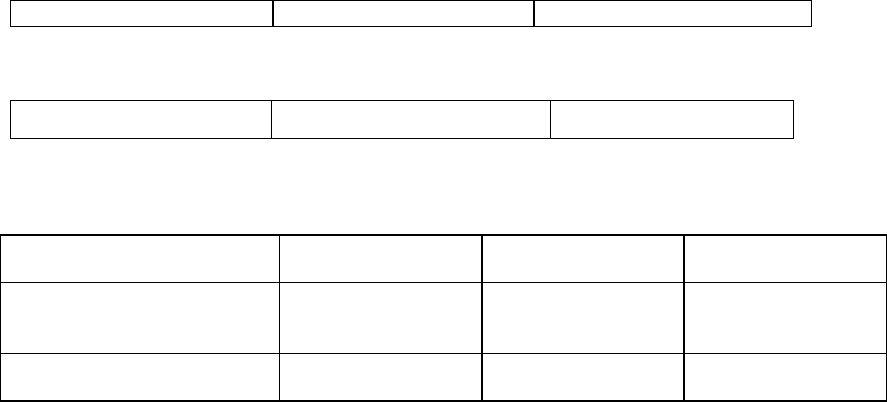
Experience Reporting Formats VM-51
© 2020 National Association of Insurance Commissioners 51-11
Appendix 3: Additional Plan Code Form
If you need an additional plan code(s) for a product(s) in addition to those plan codes in Item 19, Plan, of
the statistical plan for life insurance mortality, fill in this form using plan codes in the range 300 to 999.
Your data submission should reflect the plan codes in this form. Make as many copies as necessary for your
individual life business and submit in addition to policy-level information. When this form is used, it must
be sent to the Experience Reporting Agent at the time that data is submitted.
Completed by: ______________________ Title: _______________________________
Company:__________________________
NAIC Company Code: _________________
Date: ______
Phone Number: _____________________ Email:_______________________________
Add comments or attachments where necessary.
Enter unique three-digit plan codes for each product.
Plan Code For Product I
Plan Code for Product II
Plan Code for Product III
Enter specific plan names for each product.
A. General Product Information
Product I Product II Product III
1. In what year was each
product introduced?
2. Briefly describe the product.
___________________
_________________
___________________
_________________
___________________
_________________
3. Enter three-digit plan code in
the range 300 to 999.
© 2021 National Association of Insurance Commissioners
73

Experience Reporting Formats VM-51
© 2020 National Association of Insurance Commissioners 51-12
B. For the products listed, please fit each product into one of the categories below.
Categories for Product I Categories for Product II Categories for Product III
1 Traditional Whole Life Plans 1 Traditional Whole Life Plans 1 Traditional Whole Life Plans
2 Term Insurance Plans 2 Term Insurance Plans 2 Term Insurance Plans
3
Universal Life Plans (excl.
Variable and excl. Secondary
Guarantees)
3
Universal Life Plans (excl.
Variable and excl. Secondary
Guarantees)
3
Universal Life Plans (excl.
Variable and excl. Secondary
Guarantees)
4
Universal Life Plans with
Secondary Guarantees (excl.
Variable)
4
Universal Life Plans with
Secondary Guarantees (excl.
Variable)
4
Universal Life Plans with
Secondary Guarantees (excl.
Variable)
5
Variable Life Plans (without
Secondary Guarantees)
5
Variable Life Plans (without
Secondary Guarantees)
5
Variable Life Plans (without
Secondary Guarantees)
6
Variable Life Plans with
Secondary Guarantees
6
Variable Life Plans with
Secondary Guarantees
6
Variable Life Plans with
Secondary Guarantees
7 Nonforfeiture 7 Nonforfeiture 7 Nonforfeiture
8 Other 8 Other 8 Other
© 2021 National Association of Insurance Commissioners
74

Experience Reporting Formats VM-51
© 2020 National Association of Insurance Commissioners 51-13
Appendix 4: Mortality Data Elements and Format
ITEM COLUMN LENGTH DATA ELEMENT DESCRIPTION
1 9 Submitting
Company ID
ID number representing the company submitting
this file.
If the company has an NAIC Company Code, then
that code must be used.
If the company does not have an NAIC Company
Code, the company’s Federal Employer
Identification Number (FEIN) must be used.
If the direct writer is the company submitting the
data, items 1 and 2 must contain the same value.
2 1–5 5 NAIC Company
Code of the Direct
Writer of Business
Your The NAIC Company Code of the company
that wrote the business being reported.
In the case of assumption reinsurance where the
assuming company is legally responsible for all
benefits and claims paid, the assuming company is
considered to be the direct writer.
If the direct writer is the company submitting the
data file, items 1 and 2 must contain the same
value.
3 6–9 4 Observation Year Enter Calendar Year of Observation
4 10–29 20 Policy Number Enter Policy Number. For Policy Numbers with
length less than 20, left justify the number, and
blank fill the empty columns. Any other unique
identifying number can be used instead of a Policy
Number for privacy reasons.
5 30–32 3 Segment Number If only one policy segment exists, enter segment
number ‘1.’ For a single life policy, the base policy
is to be put in the record with segment number ‘1.’
Subsequent policy segments are in separate records
with information about that coverage and differing
segment numbers.
For joint life policies, the base policy of the first
life is to be put in a record with segment number
‘1,’ and the base policy of the second life is to be
put in a separate record with segment number ‘2.’
Joint life policies with more than two lives are not
to be submitted. Subsequent policy segments are in
separate records with information about that
coverage and differing segment numbers.
Policy segments with the same policy number are
to be submitted for:
a) Single life policies;
b) Joint life policies;
c) Term/paid up riders; or
d) Additional amounts of insurance including
purchase through dividend options.
6 33–34 2 State of Issue Use standard, two-letter state abbreviation codes
(e.g., NY for New York)
© 2021 National Association of Insurance Commissioners
75

Experience Reporting Formats VM-51
© 2020 National Association of Insurance Commissioners 51-14
7 35 1 Gender 0 = Unknown or unable to subdivide
1 = Male
2 = Female
3 = Unisex – Unknown or unable to identify
4 = Unisex – Male
5 = Unisex – Female
8 36–43 8 Date of Birth Enter the numeric date of birth in YYYYMMDD
format
9 44 1 Age Basis 0 = Age Nearest Birthday
1 = Age Last Birthday
2 = Age Next birthday
Drafting Note: Professional actuarial organization
will need to develop either age next birthday
mortality tables or procedure to adapt existing
mortality tables to age next birthday basis.
10 45–47 3 Issue Age Enter the insurance Issue Age
11 48–55 8 Issue Date Enter the numeric calendar year in YYYYMMDD
format.
ITEM COLUMN LENGTH DATA ELEMENT DESCRIPTION
12 56 1 Smoker Status (at
issue)
Smoker status should be submitted where reliable.
0 = Unknown
1 = No tobacco usage
2 = Nonsmoker
3 = Cigarette smoker
4 = Tobacco user
13
57 1 Preferred Class
Structure Indicator
0 = If no reliable information on multiple preferred
and standard classes is available or if the policy
segment was issued substandard or if there were no
multiple preferred and standard classes available for
this policy segment
or if preferred information is
unknown.
1 = If this policy was issued in one of the available
multiple preferred and standard classes for this
policy segment.
Note: If Preferred Class Structure Indicator is 0, or
if preferred information is unknown, leave next
four items blank.
14 58 1 Number of Classes
in Nonsmoker
Preferred Class
Structure
If Preferred Class Structure Indicator is 0 or if
Smoker Status is 0, 3 or 4, or if preferred
information is unknown, leave blank. For
nonsmoker or no tobacco usage policies that could
have been issued as one of multiple preferred and
standard classes, enter the number of nonsmoker
preferred and standard classes available at time of
issue.
© 2021 National Association of Insurance Commissioners
76

Experience Reporting Formats VM-51
© 2020 National Association of Insurance Commissioners 51-15
15 59 1 Nonsmoker
Preferred Class
If Preferred Class Structure Indicator is 0 or if
Smoker Status is 0, 3 or 4, or if preferred
information is unknown, leave blank.
For nonsmoker policy segments that could have
been issued as one of multiple preferred and
standard classes:
1 = Best preferred class
2 = Next Best preferred class after 1
3 = Next Best preferred class after 2
4 = Next Best preferred class after 3
5 = Next Best preferred class after 4
6 = Next Best preferred class after 5
7 = Next Best preferred class after 6
8 = Next Best preferred class after 7
9 = Next Best preferred class after 8
Note: The policy segment with the highest
nonsmoker Preferred Class number should have
that number equal to the Number of Classes in
Nonsmoker Preferred Class Structure.
16 60 1 Number of Classes
in Smoker Preferred
Class Structure
If Preferred Class Structure Indicator is 0 or if
Smoker Status is 0, 1 or 2, or if preferred
information is unknown, leave blank.
For smoker or tobacco user policies that could have
been issued as one of multiple preferred and
standard classes, enter the number of smoker
preferred and standard classes available at time of
issue.
ITEM
COLUMN
LENGTH
DATA ELEMENT
DESCRIPTION
17 61 1 Smoker Preferred
Class
If Preferred Class Structure Indicator is 0 or if
Smoker Status is 0, 1 or 2, or if preferred
information is unknown, leave blank.
For smoker policy segments that could have been
issued as one of multiple preferred and standard
classes:
1 = Best preferred class
2 = Next Best preferred class after 1
3 = Next Best preferred class after 2
4 = Next Best preferred class after 3
5 = Next Best preferred class after 4
6 = Next Best preferred class after 5
7 = Next Best preferred class after 6
8 = Next Best preferred class after 7
9 = Next Best preferred class after 8
Note: The policy segment with the highest Smoker
Preferred Class number should have that number
equal to the Number of Classes in Smoker
Preferred Class Structure.
© 2021 National Association of Insurance Commissioners
77

Experience Reporting Formats VM-51
© 2020 National Association of Insurance Commissioners 51-16
18 62–63 2 Type of
Underwriting
Requirements
If underwriting requirement of ordinary business is
reliably known, use code other than “99.” Ordinary
business does not include separate lines of business,
such as simplified issue/guaranteed issue, worksite,
individually solicited group life, direct response,
final expense, preneed, home service and
COLI/BOLI/CHOLI.
01 = Underwritten, but unknown whether fluid was
collected
02 = Underwritten with no fluid collection
03 = Underwritten with fluid collected
06 = Term Conversion
07 = Group Conversion
09 = Not Underwritten
99 = For issues where underwriting requirement
unknown or unable to subdivide
19 64 1 Substandard
Indicator
0 = Policy segment is not substandard
1 = Policy segment is substandard
2 = Policy segment is uninsurable
Note:
a. All policy segments that are
substandard need to be
identified as substandard or
uninsurable.
b. Submission of substandard
policies is optional.
c. If feasible, identify
substandard policy segments
where temporary flat extra has
ceased as substandard.
ITEM
COLUMN
LENGTH
DATA ELEMENT
DESCRIPTION
20 65–67 3 Plan Exclude from contribution: spouse and children
under family policies or riders. If Form for
Additional Plan Codes was submitted for this
policy, enter unique three-digit plan number(s) that
differ from the plan numbers below:
000 = If unable to distinguish among plan types
listed below
100 = Joint life plan unable to distinguish among
joint life plan types listed below
Permanent Plans:
010 = Traditional fixed premium fixed benefit
permanent plan
011 = Permanent life (traditional) with term
012 = Single premium whole life
013 = Econolife (permanent life with lower
premiums in the early durations)
014 = Excess interest whole life
015 = First to die whole life plan (submit separate
records for each life)
016 = Second to die whole life plan (submit
separate records for each life)
017 = Joint whole life plan – unknown whether 015
or 016 (submit separate records for each life)
© 2021 National Association of Insurance Commissioners
78

Experience Reporting Formats VM-51
© 2020 National Association of Insurance Commissioners 51-17
018 = Permanent products with non-level death
benefits
019 = Permanent plans 010, 011, 012, 013, 014,
015, 016, 017, 018 combined (i.e. unable to
separate)
Term Insurance Plans:
020 = Term (traditional level benefit and attained
age premium)
021 = Term (level death benefit with guaranteed
level premium for five years and anticipated
level term period for five years)
211 = Term (level death benefit with guaranteed
level premium for five years and anticipated
level term period for 10 years)
212 = Term (level death benefit with guaranteed
level premium for five years and anticipated
level term period for 15 years)
213 = Term (level death benefit with guaranteed
level premium for five years and anticipated
level term period for 20 years)
214 = Term (level death benefit with guaranteed
level premium for five years and anticipated
level term period for 25 years)
215 = Term (level death benefit with guaranteed
level premium for five years and anticipated
level term period for 30 years)
022 = Term (level death benefit with guaranteed
level premium for 10 years and anticipated
level term period for 10 years)
221 = Term (level death benefit with guaranteed
level premium for 10 years and anticipated
level term period for 15 years)
222 = Term (level death benefit with guaranteed
level premium for 10 years and anticipated
level term period for 20 years)
223 = Term (level death benefit with guaranteed
level premium for 10 years and anticipated
level term period for 25 years)
224 = Term (level death benefit with guaranteed
level premium for 10 years and anticipated
level term period for 30 years)
023 = Term (level death benefit with guaranteed
level premium for 15 years and anticipated
level term period for 15 years)
231 = Term (level death benefit with guaranteed
level premium for 15 years and anticipated
level term period for 20 years)
232 = Term (level death benefit with guaranteed
level premium for 15 years and anticipated
level term period for 25 years)
233 = Term (level death benefit with guaranteed
level premium for 15 years and anticipated
level term period for 30 years)
024 = Term (level death benefit with guaranteed
level premium for 20 years and anticipated
level term period for 20 years)
© 2021 National Association of Insurance Commissioners
79

Experience Reporting Formats VM-51
© 2020 National Association of Insurance Commissioners 51-18
241 = Term (level death benefit with guaranteed
level premium for 20 years and anticipated
level term period for 25 years)
242 = Term (level death benefit with guaranteed
level premium for 20 years and anticipated
level term period for 30 year)
025 = Term (level death benefit with guaranteed
level premium for 25 years and anticipated
level term period for 25 years)
251 = Term (level death benefit with guaranteed
level premium for 25 years and anticipated
level term period for 30 year)
026 = Term (level death benefit with guaranteed
level premium for 30 years and anticipated
level term period for 30 years)
027 = Term (level death benefit with guaranteed
level premium period equal to anticipated
level term period where the period is other
than five, 10, 15, 20, 25 or 30 years)
271 = Term (level death benefit with guaranteed
level premium period not equal to anticipated
level term period, where the periods are other
than five, 10, 15, 20, 25 or 30 years)
028 = Term (decreasing benefit)
040 = Select ultimate term (premium depends on
issue age and duration)
041 = Return of Premium Term (level death benefit
with guaranteed level premium for 15 years)
042 = Return of Premium Term (level death benefit
with guaranteed level premium for 20 years)
043 = Return of Premium Term (level death benefit
with guaranteed level premium for 25 years)
044 = Return of Premium Term (level death benefit
with guaranteed level premium for 30 years)
045 = Return of Premium Term (level death benefit
with guaranteed level premium for period
other than 15, 20, 25 or 30 years)
046 = Economatic term
059 = Term plan, unable to classify
101 = First to die term plan (submit separate
records for each life)
102 = Second to die term plan (submit separate
records for each life)
103 = Joint term plan – unknown whether 101 or
102 (submit separate records for each life)
Universal Life Plans (Other than Variable),
issued without a Secondary Guarantee:
061 = Single premium universal life
062 = Universal life (decreasing risk amount)
063 = Universal life (level risk amount)
064 = Universal life – unknown whether code 062
or 063
065 = First to die universal life plan (submit
separate records for each life)
066 = Second to die universal life plan (submit
separate records for each life)
© 2021 National Association of Insurance Commissioners
80

Experience Reporting Formats VM-51
© 2020 National Association of Insurance Commissioners 51-19
067 = Joint life universal life plan – unknown
whether code 065 or 066 (submit separate
records for each life)
068 = Indexed universal life
Universal Life Plans (Other than Variable) with
Secondary Guarantees:
071 = Single premium universal life with secondary
guarantees
072 = Universal life with secondary guarantees
(decreasing risk amount)
073 = Universal life with secondary guarantees
(level risk amount)
074 = Universal life with secondary guarantees –
unknown whether code 072 or 073
075 = First to die universal life plan with secondary
guarantees (submit separate records for each
life)
076 = Second to die universal life plan with
secondary guarantees (submit separate
records for each life)
077 = Joint life universal life plan with secondary
guarantees unknown whether code 075 or
076 (submit separate records for each life)
078 = Indexed universal life with secondary
guarantees
Variable Life Plans issued without a Secondary
Guarantee:
080 = Variable life
081 = Variable universal life (decreasing risk
amount)
082 = Variable universal life (level risk amount)
083 = Variable universal life – unknown whether
code 081 or 082
084 = First to die variable universal life plan
(submit separate records for each life)
085 = Second to die variable universal life plan
(submit separate records for each life)
086 = Joint life variable universal life plan –
unknown whether 084 or 085 (submit
separate records for each life)
Variable Life Plans with Secondary Guarantees:
090 = Variable life with secondary guarantees
091 = Variable universal life with secondary
guarantees (decreasing risk amount)
092 = Variable universal life with secondary
guarantees (level risk amount)
093 = Variable universal life with secondary
guarantees –unknown whether code 091 or
092
094 = First to die variable universal life plan with
secondary guarantees (submit separate
records for each life)
095 = Second to die variable universal life plan
with secondary guarantees (submit separate
records for each life)
© 2021 National Association of Insurance Commissioners
81

Experience Reporting Formats VM-51
© 2020 National Association of Insurance Commissioners 51-20
096 = Joint life variable universal life plan with
secondary guarantees – unknown whether
code 094 or 095 (submit separate records for
each life)
Nonforfeiture:
098 = Extended term
099 = Reduced paid-up
198 = Extended term for joint life (submit separate
records for each life)
199 = Reduced paid-up for joint life (submit
separate records for each life)
21 68 1 In-force Indicator
0 = If the policy segment was not in force at the end
of the calendar year of observation
1 = If the policy segment was in force at the end of
the calendar year of observation
22 69–80 12 Face Amount of
Insurance at Issue
Face amount of the policy segment at its issue date
rounded to nearest dollar. If policy provides
payment of cash value in addition to face amount,
include face amount and do not include cash value.
If the policy was issued during the observation
year, the Face Amount of Insurance at the
Beginning of the Observation Year should be
blank.
23 81–92 12 Face Amount of
Insurance at the
Beginning of the
Observation Year
Face amount of the policy segment at the beginning
of the calendar year of observation rounded to
nearest dollar. If policy provides payment of cash
value in addition to face amount, include face
amount and do not include cash value. Exclude
extra amounts attributable to 7702 corridors. If the
policy was issued during the observation year, the
Face Amount at the Beginning of the Observation
Year should be blank.
24 93–104 12 Face Amount of
Insurance at the End
of the Observation
Year
Face amount of the policy segment at the end of the
calendar year of observation rounded to nearest
dollar. If policy provides payment of cash value in
addition to face amount, include face amount, and
do not include cash value.
Exclude extra amounts
attributable to 7702 corridors.
If In-force Indicator is 0, enter face amount of the
policy segment at the time of termination, if
available; otherwise, leave blank.
25 105–116 12 Death Claim
Amount
If In-force Indicator is 1, leave blank.
Death claim amount rounded to the nearest dollar.
If In-force Indicator is 0 and Cause of Termination
is 04, then enter the face amount.
If In-force Indicator is 0 and Cause of Termination
is not 04, then leave blank.
If the policy provides payment of cash value in
addition to face amount, report face amount, and do
not include cash value.
© 2021 National Association of Insurance Commissioners
82

Experience Reporting Formats VM-51
© 2020 National Association of Insurance Commissioners 51-21
26 117–124 8 Termination
Reported Date
If In-force Indicator is 1, leave blank.
Enter in the format YYYYMMDD the eight-digit
calendar date that the termination was reported.
27 125–132 8 Actual Termination
Date
If In-force Indicator is 1, leave blank.
Enter in the format YYYYMMDD the eight-digit
calendar date when the termination occurred.
If termination is due to death (Cause of
Termination is 04), enter actual date of death.
If termination is lapse due to non-payment of
premium (Cause of Termination is 01 or 02 or 14),
enter the last day the premium was paid to.
28 133–134 2 Cause of
Termination
If Inforce Indicator is 1, leave blank.
00 = Termination type unknown or unable to
subdivide
01 = Reduced paid-up
02 = Extended term
03 = Voluntary; unable to subdivide among 01, 02,
07, 09, 10, 11 or 13
04 = Death
07 = 1035 exchange
09 = Term conversion – unknown whether attained
age or original age
10 = Attained age term conversion
11 = Original age term conversion
12 = Coverage expired or contract reached end of
the mortality table
13 = Surrendered for full cash value
14 = Lapse (other than to Reduced Paid Up or
Extended Term)
15 = Termination via payment of a discounted face
amount while still alive, pursuant to an accelerated
death benefit provision
29 135–144 10 Annualized Premium at
Issue
For level term segments with plan codes 021 through
027, 041 through 045 or 211 through 271 of Item 19,
Plan, enter the annualized premium set at issue.
Except for level term segments specified above, leave
blank for non-base segments.
For the base segments for ULSG, and Variable Life
with Secondary Guarantees (VLSG) with plan codes
071 through 078 or 090 through 096 of Item 19, Plan,
enter the annualized billed premium set at issue.
Round to the nearest dollar.
If unknown, leave blank.
30 145–154 10 Annualized Premium at
the Beginning of
Observation Year
For level term segments with plan codes 021 through
027, 041 through 045 or 211 through 271 of Item 19,
Plan, enter the annualized premium for the policy year
that includes the beginning of the observation year.
© 2021 National Association of Insurance Commissioners
83

Experience Reporting Formats VM-51
© 2020 National Association of Insurance Commissioners 51-22
Except for level term segments specified above, leave
blank for non-base segments.
For the base segments for ULSG and VLSG with plan
codes 071 through 078 or 090 through 096 of Item 19,
Plan, enter the annualized billed premium for
the policy year that includes the beginning of the
observation year.
Round to the nearest dollar.
For policies issued in the observation year, leave blank.
If unknown, leave blank.
31 155–164 10 Annualized Premium at
the End of Observation,
if available. Otherwise
Annualized Premium as
of Year/Actual
Termination Date
For level term segments with plan codes 021 through
027, 041 through 045 or 211 through 271 of Item 19,
Plan, for each segment that has Item 20, with the In-
force Indicator = 1, enter the annualized premium for
the policy year that includes the end of the observation
year. Otherwise, enter the annualized premium that
would have been paid at the end of the observation year.
If end of year premium is not available, enter the
annualized premium as of the Actual Termination Date
(Item 26).
Except for level term segments specified above, leave
blank for non-base segments.
For the base segments for ULSG and VLSG with plan
codes 071 through 078 or 090 through 096 of Item 19,
Plan, use the annualized billed premium. For base
segments that have Item 20, with the Inforce Indicator
=1,
enter the annualized billed premium for the policy year
that includes the end of the observation year.
Otherwise,
enter the annualized billed premium that would have
been paid at the end of the observation year. If end of
year premium is not available, enter the annualized
premium as of the Actual Termination Date (Item 26).
Round to the nearest dollar.
If unknown, leave blank.
32 165–166 2 Premium Mode 01 = Annual
02 = Semiannual
03 = Quarterly
04 = Monthly Bill Sent
05 = Monthly Automatic Payment
06 = Semimonthly
07 = Biweekly
08 = Weekly
09 = Single Premium
10 = Other / Unknown
33
167-176
10
Cumulative Premium
Collected as of the
Beginning of
Observation Year
If not ULSG or VLSG, leave blank.
For ULSG, and VLSG policies with plan codes 071
through 078 or 090 through 096 of Item 19, Plan:
© 2021 National Association of Insurance Commissioners
84

Experience Reporting Formats VM-51
© 2020 National Association of Insurance Commissioners 51-23
1) For non-base segments, leave blank.
2) For base segments, enter the cumulative premium
collected since issue, as of
the beginning of the
observation year. Round to the nearest dollar.
For policies issued in the observation year, leave
blank. If unknown, leave blank.
34
177-186 10
Cumulative Premium
Collected as of the
End of Observation
Year if available.
Otherwise
Cumulative Premium
Collected as of Actual
Termination Date
If not ULSG or VLSG, leave blank.
For ULSG, and VLSG policies with plan codes 071
through 078 or 090 through 096 of Item 19, Plan:
1)
For non-base segments, leave blank.
2)
For base segments inforce at the end of the
observation year, enter the cumulative premium
collected as of
the end of the observation year.
3)
For base segments terminated during the
observation
year, enter the cumulative premium
collected since issue, as of the Actual Termination
Date (Item 26).
Round to the nearest dollar.
If unknown, leave blank.
35
187-188 2
ULSG/VLSG
Premium Type
For non-base segments, leave blank.
If not ULSG or VLSG, leave blank.
For ULSG and VLSG policies with plan codes 071
through 078 or 090 through 096 of Item 19, Plan:
00 = Unknown
01 = Single premium
02 = ULSG/VLSG Whole life level premium
03 = Lower premium (term like)
04 = Other
36
189-190 2
Type of Secondary
Guarantee
For non-base segments, leave blank.
If not ULSG or VLSG, leave blank.
For ULSG and VLSG policies with plan codes 071
through 078 or 090 through 096 of Item 19, Plan:
00 = Unknown
01 = Cumulative Premium without Interest (Single
Tier)
02 = Cumulative Premium without Interest (Multiple
Tier)
03 = Cumulative Premium without Interest (Other)
04 = Cumulative Premium with Interest (Single Tier)
05 = Cumulative Premium with Interest (Multiple
Tier)
06 = Cumulative Premium with Interest (Other)
11 = Shadow Account (Single Tier)
© 2021 National Association of Insurance Commissioners
85

Experience Reporting Formats VM-51
© 2020 National Association of Insurance Commissioners 51-24
12 = Shadow Account (Multiple Tier)
13 = Shadow Account (Other)
21 = Both Cumulative Premium without Interest
and Shadow Account
22 = Both Cumulative Premium with Interest and
Shadow Account
23= Other, not involving either Cumulative Premium
or Shadow Account
37
191-200 10
Cumulative Minimum
Premium as of the
Beginning of
Observation Year
If not ULSG or VLSG, leave blank.
For ULSG and VLSG policies with plan codes 071
through 078 or 090 through 096 of Item 19, Plan:
If Item 35, Type of Secondary Guarantee is blank,
00, 11, 12, 13 or 23, leave blank.
If Item 35, Type of Secondary Guarantee is 01, 02,
03, 04, 05, 06, 21 or 22:
1) Leave non-base segments, blank.
2) For base segments:
Enter the cumulative minimum premiums,
including applicable interest, for all policy
years
up to the beginning of the observation year.
Round to the nearest dollar.
For policies issued in the observation year, leave
blank.
If unknown, leave blank.
38
201-210 10
Cumulative Minimum
Premium as of the
End of Observation
Year/ Actual
Termination Date
If not ULSG or VLSG, leave blank.
For ULSG and VLSG policies with plan codes 071
through 078 and 090 through 096 of Item 19, Plan:
If Item 35, Type of Secondary Guarantee is blank,
00, 11, 12, 13 or 23, leave blank.
If Item 35, Type of Secondary Guarantee is 01, 02,
03, 04, 05, 06, 21 or 22:
1)
For non-base segments, leave blank.
2)
For base segments inforce at the end of the
observation year, enter the cumulative minimum
premiums, including applicable interest, up to the
end of the observation year.
3)
For base segments terminated during the
observation year, enter the cumulative minimum
premiums, including applicable interest, up to the
Actual Termination Date (Item 26)
Round to the nearest dollar.
© 2021 National Association of Insurance Commissioners
86

Experience Reporting Formats VM-51
© 2020 National Association of Insurance Commissioners 51-25
If unknown, leave blank.
39
211-220 10
Shadow Account
Amount at the
Beginning of
Observation Year
If not ULSG, or VLSG, leave blank.
For ULSG and VLSG policies with plan codes 071
through 078 or 090 through 096 of Item 19, Plan:
If Item 35, Type of Secondary Guarantee is blank,
00, 01, 02, 03, 04, 05, 06, or 23 leave blank.
If Item 35, Type of Secondary Guarantee is 11, 12,
13, 21 or 22:
1) Leave non-base segments blank.
2) For base segments:
Enter total amount of the Shadow Account at the
beginning of the observation year. The Shadow
Account can be positive, zero or negative.
Round to the nearest dollar.
For policies issued in the observation year, leave
blank.
If unknown, leave blank.
40
221-230 10
Shadow Account
Amount at the End of
Observation Year/
Actual Termination
Date
If not ULSG, or VLSG, leave blank.
For ULSG and VLSG policies with plan codes 071
through 078 or 090 through 096 of Item 19, Plan:
If Item 35, Type of Secondary Guarantee is blank,
00, 01, 02, 03, 04, 05, 06, or 23 leave blank.
If Item 35, Type of Secondary Guarantee is 11, 12,
13, 21 or 22:
1)
For non-base segments, leave blank.
2)
For base segments inforce at the end of the
observation year, enter the total amount of the
Shadow Account at the end of the observation
year. The Shadow Account can be positive, zero
or negative.
3)
For base segments terminated during the
observation year, enter the total amount of the
Shadow Account as of the Actual Termination
Date (Item 26). The Shadow Account can be
positive, zero or negative.
Round to the nearest dollar.
If unknown, leave blank.
41
231-240 10
Account Value at the
Beginning of
Observation Year
For non-base segments, leave blank.
If not ULSG or VLSG, leave blank.
For ULSG and VLSG policies with plan codes 071
through 078 or090 through 096 of Item 19, Plan, the
policy Account Value (gross of any loan) at the
Beginning of the Observation Year. The policy
© 2021 National Association of Insurance Commissioners
87

Experience Reporting Formats VM-51
© 2020 National Association of Insurance Commissioners 51-26
Account Value can be positive, zero or negative.
Round to the nearest dollar.
For policies issued in the observation year, leave
blank.
If unknown, leave blank.
42
241-250 10
Account Value at the
End of Observation
Year/Actual
Termination Date
For non-base segments, leave blank.
If not ULSG or VLSG, leave blank.
For ULSG and VLSG policies with plan codes 071
through 078 or 090 through 096 of Item 19, Plan:
1)
If policy is in force at the end of observation
year, enter the policy Account Value (gross of
any loan) at the end of the Observation Year. The
policy Account Value can be positive, zero or
negative.
2)
If policy terminated during the observation year,
enter the policy Account Value (gross of any
loan) as of the Actual Termination Date (Item
26). The policy Account Value can be positive,
zero or negative.
Round to the nearest dollar.
If unknown, leave blank.
43
251-260 10
Amount of Surrender
Charge at the
Beginning of
Observation Year
For non-base segments, leave blank.
If not ULSG or VLSG, leave blank.
For ULSG and VLSG policies with plan codes 071
through 078 and 090 through 096 of Item 19, Plan,
enter the dollar Amount of the Surrender Charge as
of the Beginning of the Observation Year.
Round to the nearest dollar.
For policies issued in the observation year, leave
blank. If unknown, leave blank.
44
261-270 10
Amount of Surrender
Charge at the End of
Observation
Year/Actual
Termination Date
For non-base segments, leave blank.
If not ULSG or VLSG, leave blank.
For ULSG and VLSG policies with plan codes 071
through 078 or 090 through 096 of Item 19, Plan:
1)
If policy is in force at the end of observation
year,
enter the dollar amount of the Surrender Charge at
the end of the Observation Year.
2) If policy terminated during the observation year,
enter the dollar amount of the Surrender Charge
© 2021 National Association of Insurance Commissioners
88

Experience Reporting Formats VM-51
© 2020 National Association of Insurance Commissioners 51-27
as of the Actual Termination Date (Item 26).
Round to the nearest dollar.
If unknown, leave blank.
45
271-272 2
Operative Secondary
Guarantee at the
Beginning of
Observation Year
The company defines whether a secondary guarantee
is in effect for a policy with a secondary guarantee at
the beginning of the Observation Year.
If Item 35, Type of Secondary Guarantee is blank,
leave blank.
If Item 35, Type of Secondary Guarantee is 00
through 23:
1) For non-base segments, leave blank.
2) For base segments:
00 = If unknown whether the secondary guarantee is
in effect
01 = If secondary guarantee is not in effect
02 = If secondary guarantee is in effect
03 = If all secondary guarantees have expired
46
273-274 2
Operative Secondary
Guarantee at the End
of Observation
Year/Actual
Termination Date
The company defines whether a secondary guarantee
is in effect for a policy with a secondary guarantee at
the end of the Observation Year/Actual Termination
Date.
If Item 35, Type of Secondary Guarantee is blank,
leave blank.
If Item 35, Type of Secondary Guarantee is 00
through 23:
1) For non-base segments, leave blank.
2)
For base segments in force at the end of
observation year, enter the appropriate value
below as of the end of observation year:
00 = If unknown whether the secondary guarantee
is in effect
01 = If secondary guarantee is not in effect
02 = If secondary guarantee is in effect
03 = If all secondary guarantees have expired
3)
For base segments terminated during the
observation year, enter the appropriate value
below as of the Actual Termination Date (Item
26):
00 = If unknown whether the secondary guarantee
is in effect
01 = If secondary guarantee is not in effect
02 = If secondary guarantee is in effect
03 = If all secondary guarantees have expired
47
275-276 2
State of Domicile
Use standard, two-letter state abbreviations codes
(e.g., FL for Florida) for the state of the policy
owner’s domicile.
If unknown or outside of the U.S., leave blank.
© 2021 National Association of Insurance Commissioners
89
Experience Reporting Formats VM-51
© 2020 National Association of Insurance Commissioners 51-28
This page intentionally left blank.
© 2021 National Association of Insurance Commissioners
90
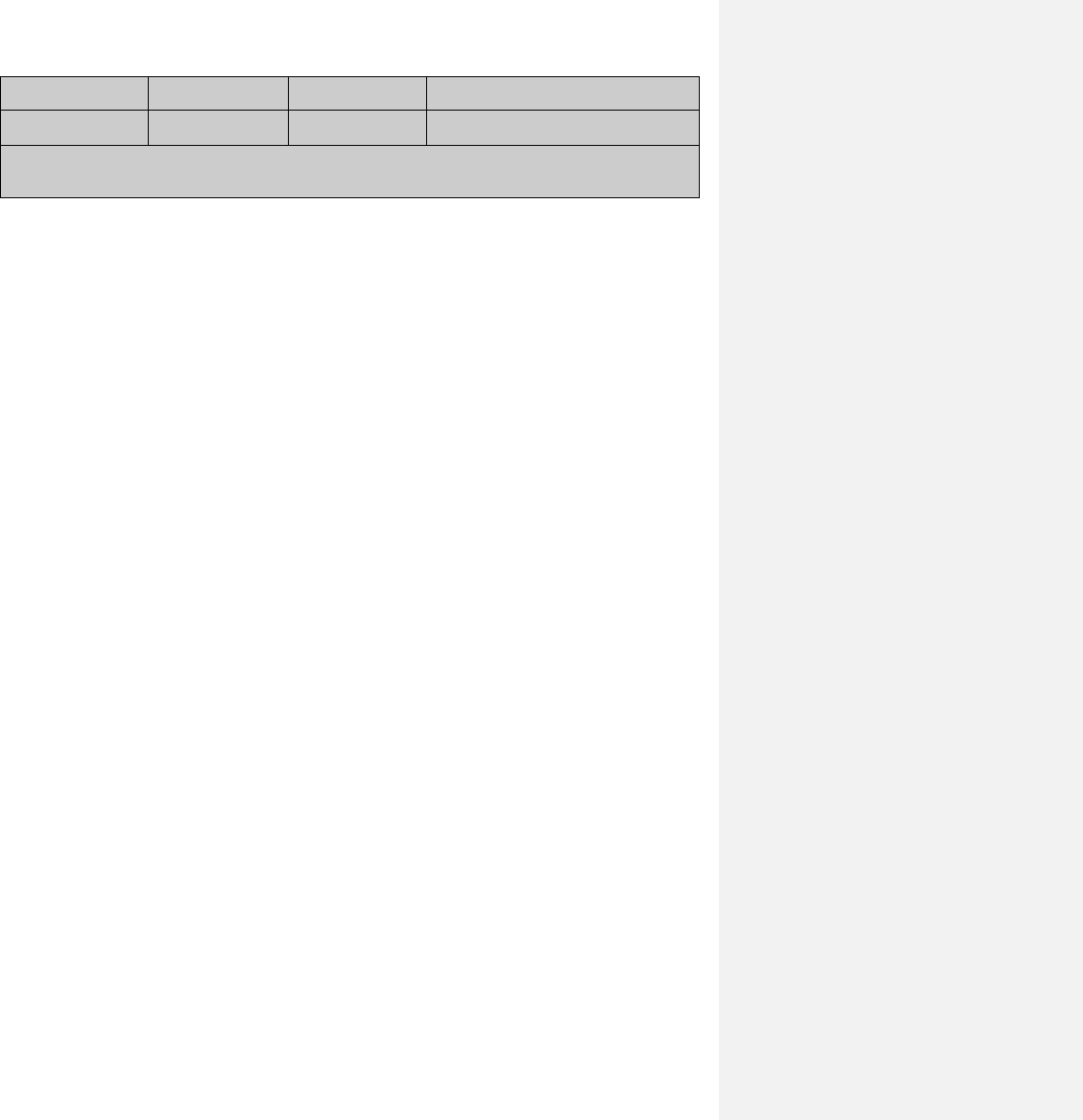
Dates: Received
Reviewed by Staff
Distributed
Considered
4/30/2021
RM
Notes: APF 2021-07
Life Actuarial (A) Task Force/ Health Actuarial (B) Task Force
Amendment Proposal Form*
1. Identify yourself, your affiliation and a very brief description (title) of the issue.
Identification: David Neve, VP and Consulting Actuary, Actuarial Resources Corporation of GA
Title of the Issue: Clarify ULSG NPR calculation requirements
2. Identify the document, including the date if the document is “released for comment,” and the location in
the document where the amendment is proposed:
January 1, 2021 NAIC Valuation Manual , but incorporating APF 2020-03
Section 2.A.3 Section 3.B.1, 2, 5 and 6 Section 6.B.5.b
Section 3.A Section 3.C.2 and 3
3. Show what changes are needed by providing a red-line version of the original verbiage with deletions and
identify the verbiage to be deleted, inserted or changed by providing a red-line (turn on “track changes”
in Word®) version of the verbiage. (You may do this through an attachment.)
See attached.
As a general overview, Section 3.B.5 stayed in 3.B.5 but was renumbered, but Section 3.B.6 was moved to
3.B.5.b and c.
Below is a detailed summary of the items that were moved to a new section (and/or renumbered) but
were not redlined. In some cases, the wording was redlined after it was moved (if the wording changed).
Prior version New version
3.B.5 last half of first sentence 3.B.5.a
3.B.5 2nd and 3rd sentence 3.B.5.d
3.B.5.a thru g renumbered as 3.B.5.d.i thru vii
3.B.6.a 3.B.5.b
3.B.6.b 3.B.5.c
3.B.6.c 3.B.5.c.i (with sub-bullets renumbered)
3.B.6.d 3.B.5.c.ii (with sub-bullets renumbered)
3.B.6.e 3.B.5.c.iii (with sub-bullets renumbered)
© 2021 National Association of Insurance Commissioners
91

4. State the reason for the proposed amendment? (You may do this through an attachment.)
The NPR calculation requirements for ULSG products are currently contained in Section 3.B.5 and 3.B.6
of the Valuation Manual. The current wording takes the reader back and forth between Section 3.B.5
and 3.B.6 when trying to follow the reserve calculation for ULSG products, which can be confusing. And
the current wording also has led some people to incorrectly interpret Section 3.B.5 to be applicable to
UL products without a SG.
The APF combines the current 3.B.5 and 3.B.6. sections into a single section labeled 3.B.5 and clarifies
how to determine the NPR when the policy duration at the valuation date is either prior to, or after the
SG has expired. Importantly, no change has been made to the current requirements, only the
formatting of the requirements to make them easier to follow. Note that the new wording has flipped
the order of the old 3.B.5 and 3.B.6 when combining them in the new 3.B.5, but this movement is not
shown as a tracked change (since no changes were made to the existing reserve calculation
requirements in the two sections).
Section 3.A has also been revised to eliminate the confusion that can arise on whether the NPR for
products in the All Other VM-20 Reserving Category is still a VM-20 reserve. The NPR requirement for
products in the All Other VM-20 Reserving Category has been moved to Section 3.B.6.
Impacted references have been updated.
© 2021 National Association of Insurance Commissioners
92

ATTACHMENT
Section 2: Minimum Reserve
A. All policies subject to these requirements shall be included in one of the VM-20 Reserving Categories, as
specified in Section 2.A.1, Section 2.A.2 and Section 2.A.3 below.
1. Term Reserving Category —
2. ULSG Reserving Category —
c. The due and deferred premium asset, if any, shall be based on the valuation net premiums
computed in accordance with Section 3.B.5.d, for the base policy, determined without
regard to any NPR floor amount from Section 3.D.2.
3. All Other VM-20 Reserving Category– All policies and riders belonging to the All Other VM-20
Reserving Category are to be included in Section 2.A.3.c unless the company has elected to exclude a
group of them from the stochastic reserve calculation or both the deterministic and stochastic reserve
calculations and has applied the applicable exclusion test defined in Section 6, passed the test and
documented the results.
Section 3: Net Premium Reserve
A. Applicability
1. The NPR for each policy must be determined on a seriatim basis pursuant to Section 3.
2. When valuing term riders pursuant to Paragraph E in “Riders and Supplemental Benefits
Requirements” in Section II, the reserve requirements for term policies are applicable.
B. NPR Calculation
1. For the purposes of Section 3, the following terms apply:
b. The “level secondary guarantee” at any time is:
i. For a shadow account secondary guarantee, the shadow account fund value that would have
existed at that time assuming payment of the level gross premium determined according to
Section 3.B.5.c.i.1.
ii. For a cumulative premium secondary guarantee, the amount of cumulative level gross premiums
determined according to Section 3.B.5.c.i.1, accumulated with any interest or accumulation
factors per the contract provisions for the secondary guarantee.
2. Section 3.B.4 and Section 3.B.5 provide the calculation of a terminal NPR under the assumption of an
annual mode gross premium. In Section 3.B.4 and Section 3.B.5, the gross premium referenced is the
gross premium for the policy assuming an annual premium mode.
4. For all policies and riders within the Term Reserving Category, other than those addressed in Section
3.B.8 below, the NPR on any valuation date shall be equal to the actuarial present value of future
Commented [MR1]: CA suggestion #1
Deleted: (Life Insurance Policies Subject to Section 3.A.2)
Deleted: term policy and for each ULSG
Deleted: <#>Except for policies subject to Section 3.A.1, the
NPR shall be determined pursuant to applicable methods in VM-
A and VM-C for the basic reserve. The mortality tables to be
used are those defined in Section 3.C.1 and in VM-M Section
1.H.¶
Deleted: 6
Deleted: 6
Deleted: ,
Deleted: and Section 3.B.6
Deleted: ,
Deleted: and Section 3.B.6
© 2021 National Association of Insurance Commissioners
93
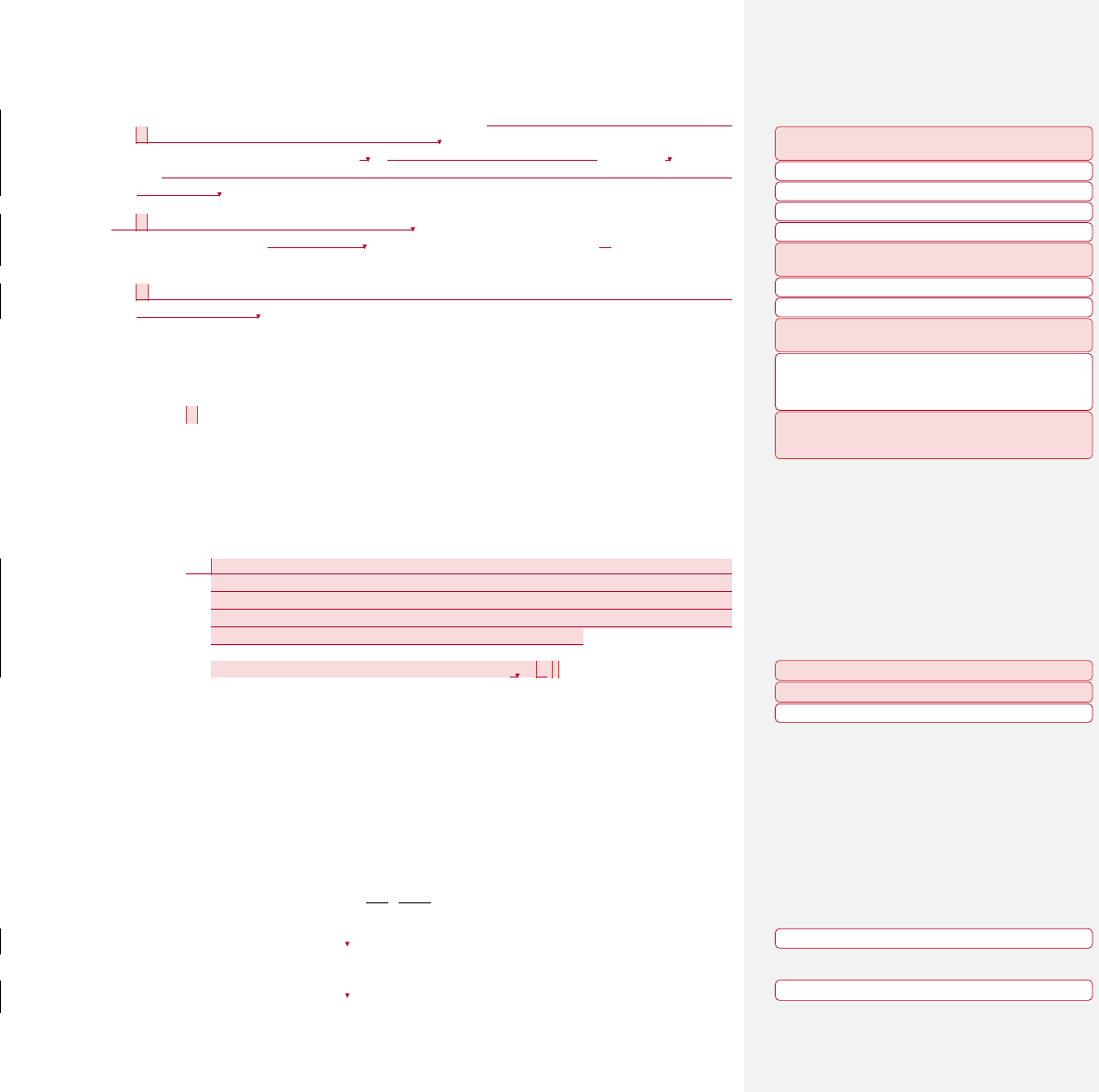
benefits less the actuarial present value of future annual valuation net premiums as follows:
5. For all policies and riders within the ULSG Reserving Category, the NPR shall be determined as follows:
a. If the policy duration on the valuation date is Prior to the point when all secondary guarantee
periods have expired, the NPR shall, be the greater of the reserve amount determined in Section
3.B.5.c and the reserve amount determined in Section 3.B.5.d, subject to the floors specified in
Section 3.D.2.
b. If the policy duration on the valuation date is after the expiration of all secondary guarantee periods,
the NPR shall be the reserve amount determined according to Section 3.B.5.d only, subject to the
floors specified in 3.D.2.
c. A reserve amount for the policy shall be calculated assuming the secondary guarantee is in effect
as described below. If the policy has multiple secondary guarantees, the NPR shall be calculated as
below for the secondary guarantee that provides the greatest NPR as of the valuation date. For the
purposes of this subsection, let n be the longest number of years the policy can remain in force
under the provisions of the secondary guarantee. However, if a shorter period produces a materially
greater NPR, then n shall be that shorter number of years.
i. As of the policy issue date:
1. Determine the level gross premium at issue, assuming payments are made each year
for which premiums are permitted to be paid, such period defined as v years in this
subsection, that would keep the policy in force to the end of year n, based on policy
provisions, including the secondary guarantee provisions, such as mortality, interest
and expenses. In no event shall v be greater than n for purposes of the NPR calculated
in this subsection.
2. Determine the annual valuation net premiums at issue as that uniform percentage (the
valuation net premium ratio) of the respective gross premiums such that at issue the
actuarial present value of future valuation net premiums over the n-year period shall
equal the actuarial present value of future benefits over the n-year period. The valuation
net premium ratio determined shall not change for the policy.
3. Using the level gross premium from Section 3.B.5.c.i.1 above, determine the value of
the expense allowance components for the policy at issue as x
, y
and z
defined
below.
= a first-year expense equal to the level gross premium at issue
= an expense equal to 10% of the level gross premium and applied in each
year from the second through fifth policy year
= a first-year expense of $2.50 per $1,000 of insurance issued
The expense allowance shall be amortized over the span of years in the secondary
guarantee period during which premiums are permitted to be paid. E
x+t
, the expense
allowance balance as of the end of the policy year t, shall be computed as follows:
=
:|
:|
+
for t < v
= 0 for t ≥ v
Where:
t = 1,2,.. (number of completed years since issue)
Commented [MR2]: Section 3.B.5.a was moved from what was
previously part of the first sentence of Section 3.B.5
Deleted: p
Deleted:
Deleted:
Deleted: 6 below
Commented [MR3]: Section 3.B.5.b was moved from what was
previously Section 3.B.6.a
Deleted: A
Deleted: NPR
Commented [MR4]: Section 3.B.5.c was moved from what was
previously Section 3.B.6.b
Deleted: The NPR shall be calculated as in Section 3.B.6.c
through Section 3.B.6.e below, and the resulting NPR shall be
used in the comparison with the NPR calculated in accordance
with Section 3.B.5.
Commented [MR5]: Section 3.B.5.c.i was moved from what
was previously part of the first sentence of Section 3.B.6.c and the
sub-bullets were renumbered
Deleted: 6
Commented [MR6]: CA suggestion #5
Commented [MR7]: CA suggestion #5
Deleted:
Deleted:
© 2021 National Association of Insurance Commissioners
94
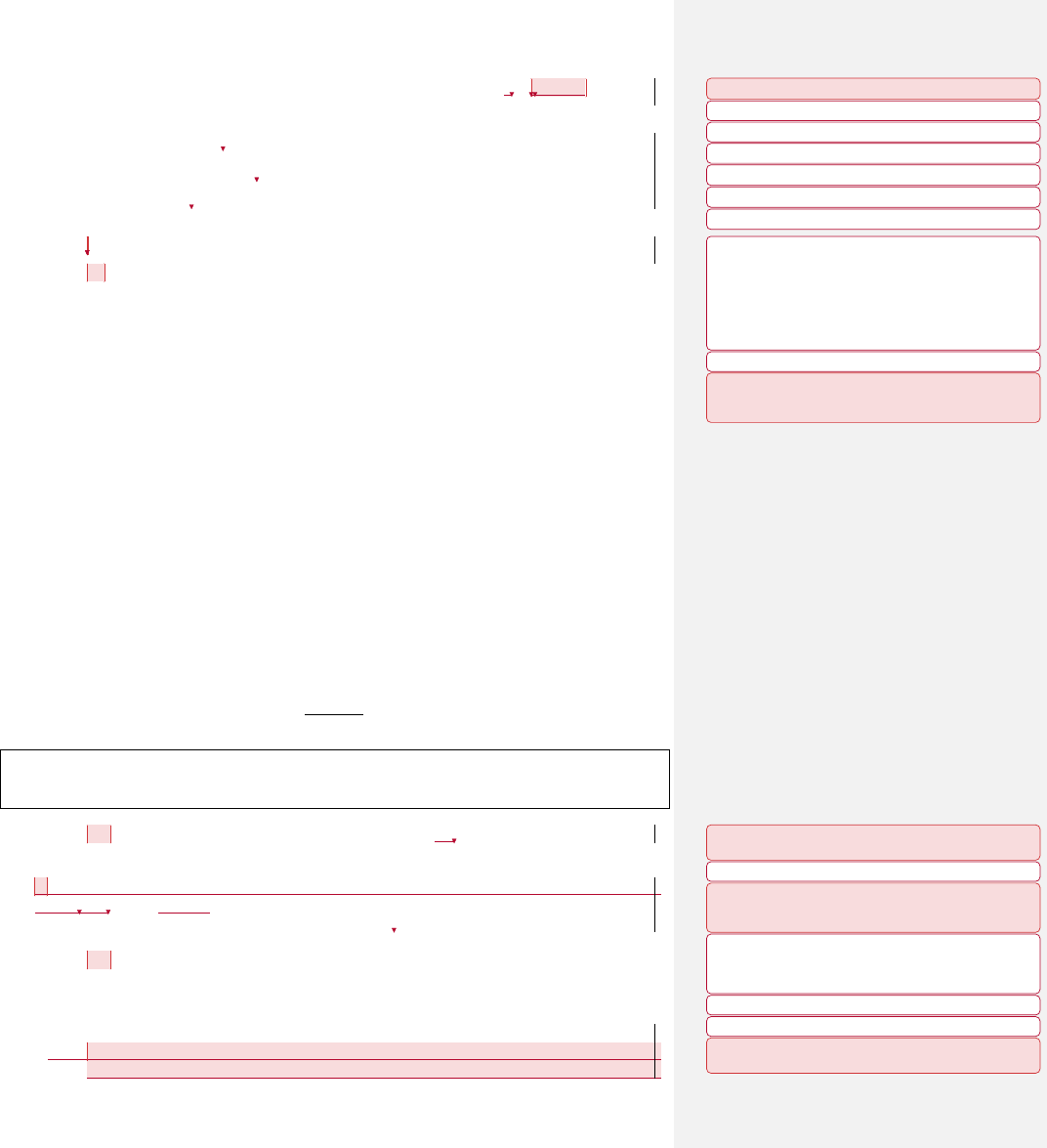
VNPR = Valuation Net Premium Ratio from 3.B.5.c.i.2 above
= 0 when t = 1
=
(1/
:|
) when 2≤ t ≤5
=
when t>5
ii. After the policy issue date, on each future valuation date, the NPR shall be determined as
follows:
1. As of the valuation date for the policy being valued, determine the actual secondary
guarantee, denoted ASG
x+t
, as outlined in Section 3.B.1.c and the fully funded
secondary guarantee, denoted FFSG
x+t
, as outlined in Section 3.B.1.b.
2. Divide ASG
x+t
by FFSG
x+t
, with the resulting ratio capped at 1. The ratio is
intended to measure the level of prefunding for a secondary guarantee, which is
used to establish reserves. Assumptions within the numerator and denominator of
the ratio, therefore, must be consistent in order to appropriately reflect the level of
prefunding. As used here, “assumptions” include any factor or value, whether
assumed or known, which is used to calculate the numerator or denominator of the
ratio.
3. Compute the net single premium (NSP
x+t
) on the valuation date for the coverage
provided by the secondary guarantee for the period of time ending at attained age
x+n, using the interest, lapse and mortality assumptions prescribed in Section 3.C
below. The net single premium (NSP) shall include consideration for death
benefits only.
4. The NPR for an insured age x at issue at time t shall be according to the formula
below:
, 1
Guidance Note: For a non-integer value of t,
is obtained by taking the present value at duration t
of
, where T is the next higher integer; i.e., entails discounting by valuation interest, mortality, and
lapse for the fractional year between the valuation date and next anniversary (T – t).
iii. Actuarial present values referenced in this Section 3.B.5.c are calculated using the interest,
mortality and lapse assumptions prescribed in Section 3.C below.
d. A reserve amount for the policy shall be calculated assuming the secondary guarantee is not in
effect. The reserve amount shall be determined by the policy features and guarantees of the policy
without considering any secondary guarantee provisions as follows:
i. Determine the level gross premium at issue, assuming payments are made each year for
which premiums are permitted to be paid, such period defined as “s” in this subsection,
that would keep the policy in force for the entire period coverage is to be provided based
on the policy guarantees of mortality, interest and expenses.
ii. Determine the annual valuation net premiums as that uniform percentage (the valuation net
premium ratio) of the respective gross premiums, such that at issue the actuarial present
Deleted: 6
Deleted: ii
Deleted: 3
Commented [MR8]: CA suggestion #5
Deleted:
Deleted:
Deleted:
Deleted: <#>Determine the annual valuation net
premiums at issue as that uniform percentage (the
valuation net premium ratio) of the respective gross
premiums such that at issue the actuarial present value of
future valuation net premiums over the n-year period shall
equal the actuarial present value of future benefits over the
n-year period. The valuation net premium ratio determined
shall not change for the policy.
Deleted: <#>¶
Commented [MR10]: Section 3.B.5.c.ii was moved from what
was previously part of the first sentence of Section 3.B.6.d and the
sub-bullets were renumbered
Commented [MR11]: Section 3.B.5.c.iii was moved from what
was previously part of the first sentence of Section 3.B.6.e
Deleted: 6
Commented [MR12]: Section 3.B.5.d was moved from what
was previously part of the second and third sentences of Section
3.B.5
Deleted: Once all secondary guarantee periods have expired,
the NPR shall, subject to the floors specified in Section 3.D.2,
be the reserve calculated in Section 3.B.5.a through Section
3.B.5.g below. …
Deleted: A
Deleted: . The reserve shall be calculated
Commented [MR13]: Section 3.B.5.d.i through 3.B.5.d.Vii were
previously Section 3.B.5.a through 3.B.5.g
© 2021 National Association of Insurance Commissioners
95
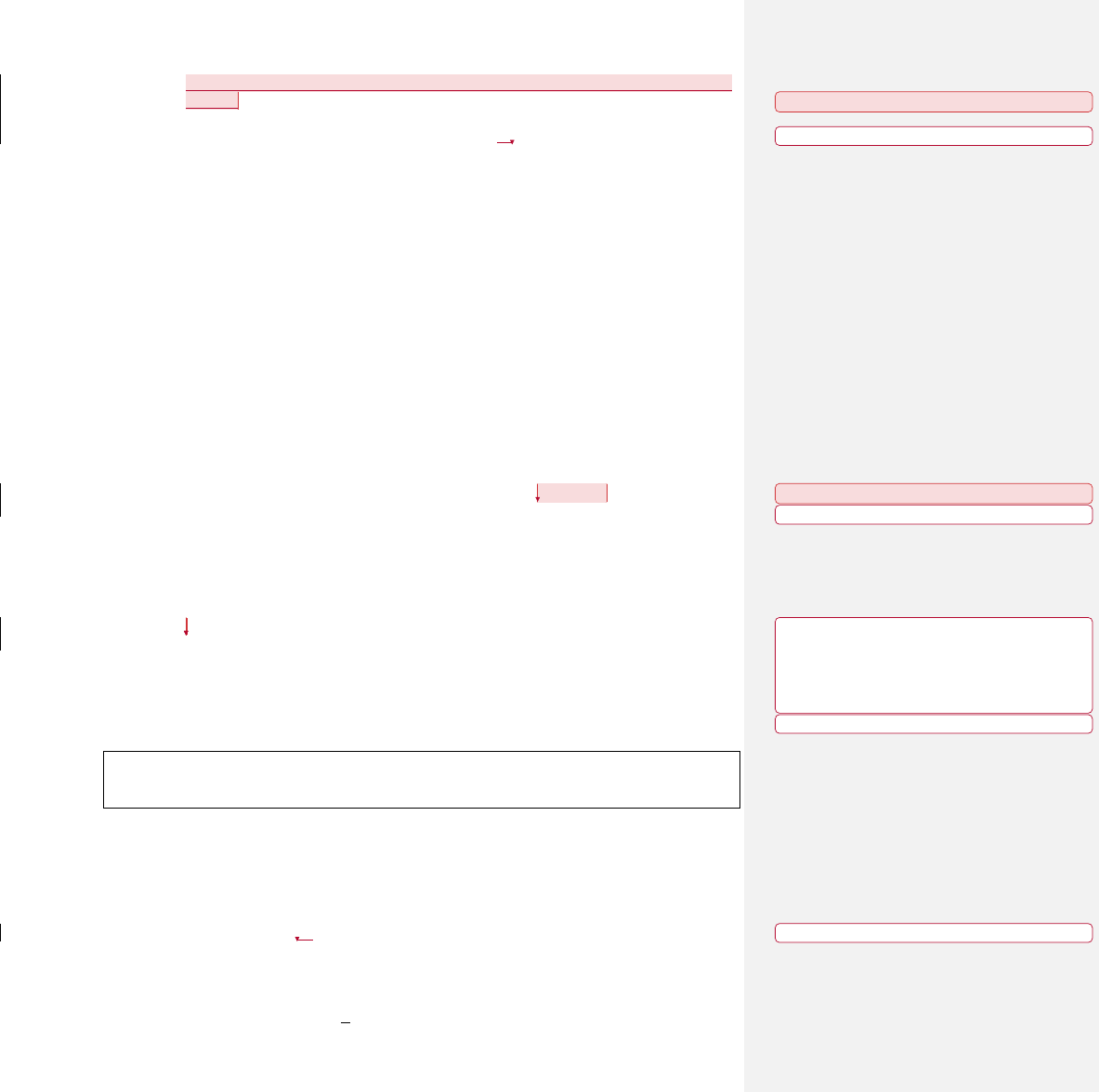
value of future valuation net premiums shall equal the actuarial present value of future
benefits.
iii. Using the level gross premium from Section 3.B.5.d.i, determine the value of the expense
allowance components for the policy at issue as x
1
, y
2-5
and z
1
defined below.
x
1
= a first-year expense equal to the level gross premium at issue
y
2-5
= an expense equal to 10% of the level gross premium and applied in each year
from the second through fifth policy year
z
1
= a first-year expense of $2.50 per $1,000 of insurance issued
The expense allowance shall be amortized over the period during which premiums are
permitted to be paid. E
x+t
, the expense allowance balance, as of the end of policy year
t, shall be calculated as follows:
=
:
|
(
+
)
:
|
+
for t < s
= 0 for t ≥ s
Where:
t = 1,2,.. (number of completed years since issue)
= 3. . 5. .
= 0 when t = 1
=
(
1
:
|
) when 2 ≤ t ≤ 5
=
when t > 5
iv. For a policy issued at age x, at any duration t, the net premium reserve shall equal:
Where:
1.
= the actuarial present value of future benefits less the actuarial
present value of future valuation net premiums and less the unamortized
expense allowance for the policy,
,
Guidance Note: For a non-integer value of t,
is obtained by taking the present value at duration t
of
, where T is the next higher integer; i.e., entails discounting by valuation interest and
survivorship for the fractional year between the valuation date and the next anniversary (T – t).
2. Let:
e
x + t
= max (the actual policy fund value on the valuation date, 0)
f
x + t
= the policy fund value on the valuation date is that amount which, together
with the payment of the future level gross premiums determined in Section
3.B.5.d.i above, keeps the policy in force for the entire period coverage is to
be provided, based on the policy guarantees of mortality, interest and expenses.
Then set r
x+t
equal to:
1, if
+t
< 0
Commented [MR14]: CA suggestion #5
Deleted: a
Deleted:
Commented [MR15]: CA suggestion #5
Deleted: <#>Determine the annual valuation net
premiums as that uniform percentage (the valuation net
premium ratio) of the respective gross premiums, such that
at issue the actuarial present value of future valuation net
premiums shall equal the actuarial present value of future
benefits.…¶
¶
Deleted: <#>¶
Deleted: a
© 2021 National Association of Insurance Commissioners
96

min([
+t
/
+t
], 1), otherwise
v. The future benefits used in determining the value of m
x+t
shall be based on the greater of
e
x+t
and f
x+t
together with the future payment of the level gross premiums determined in
Section 3.B.5.d.i above, and assuming the policy guarantees of mortality, interest and
expenses.
vi. The values of ä are determined using the NPR interest, mortality and lapse assumptions
applicable on the valuation date.
vii. Actuarial present values referenced in this Section 3.B.5.d are calculated using the interest,
mortality and lapse assumptions prescribed in Section 3.C.
6. For all policies and riders within the All Other VM-20 Reserving Category, the NPR shall be
determined pursuant to applicable methods in VM-A and VM-C for the basic reserve. The mortality
tables to be used are those defined in Section 3.C.1 and in VM-M Section 1.H.
7. The actuarial present value of future benefits equals the present value of future benefits including,
but not limited to, death, endowment (including endowments intermediate to the term of coverage)
and cash surrender benefits. Future benefits are before reinsurance and before netting the repayment
of any policy loans.
8. For life insurance coverage that the company has assumed on a YRT basis, the reinsurer’s net
premium reserve shall be one half year’s cost of insurance for the reinsured net amount at risk.
C. Net Premium Reserve Assumptions
2. Interest Rates
a. For NPR amounts calculated according to Section 3.B.5.d:
b. For NPR amounts calculated according to Section 3.B.4 or Section 3.B.5.c:
3. Lapse Rates
a. For NPR amounts calculated according to Section 3.B.5.d, the lapse rates used shall be 0% per
year during the premium paying period and 0% per year thereafter.
c. For NPR amounts calculated according to Section 3.B.5.c, the lapse rate, L
x+t
, for an
insured age x at issue for all durations subsequent to the valuation date shall be determined
as follows:
i. Determine the ratio
where:
= [
]/ [
]
but not > 1 and not <0
Wh
ere:
FFSG
x+t
= the fully funded secondary guarantee on the valuation date for the
insured age x at issue
ASG
x+t
= the actual secondary guarantee on the valuation date for the insured age
x at issue
Deleted: a
Deleted: ULSG
Deleted: as follows. Prior to the point when all secondary
guarantee periods have expired, the NPR shall, subject to the
floors specified in Section 3.D.2, be the greater of the reserve
amount determined according to Section 3.B.5, assuming the
policy has no secondary guarantees, and the reserve amount for
the policy determined according to the methodology and
requirements in Section 3.B.6.b through Section 3.B.6.e below
Deleted: .
Deleted: 6
Commented [MR18]: CA Suggestion #2
Commented [MR19]: CA Suggestion #3
Deleted: ¶
Deleted: 6
Commented [MR20]: CA suggestion #3
© 2021 National Association of Insurance Commissioners
97
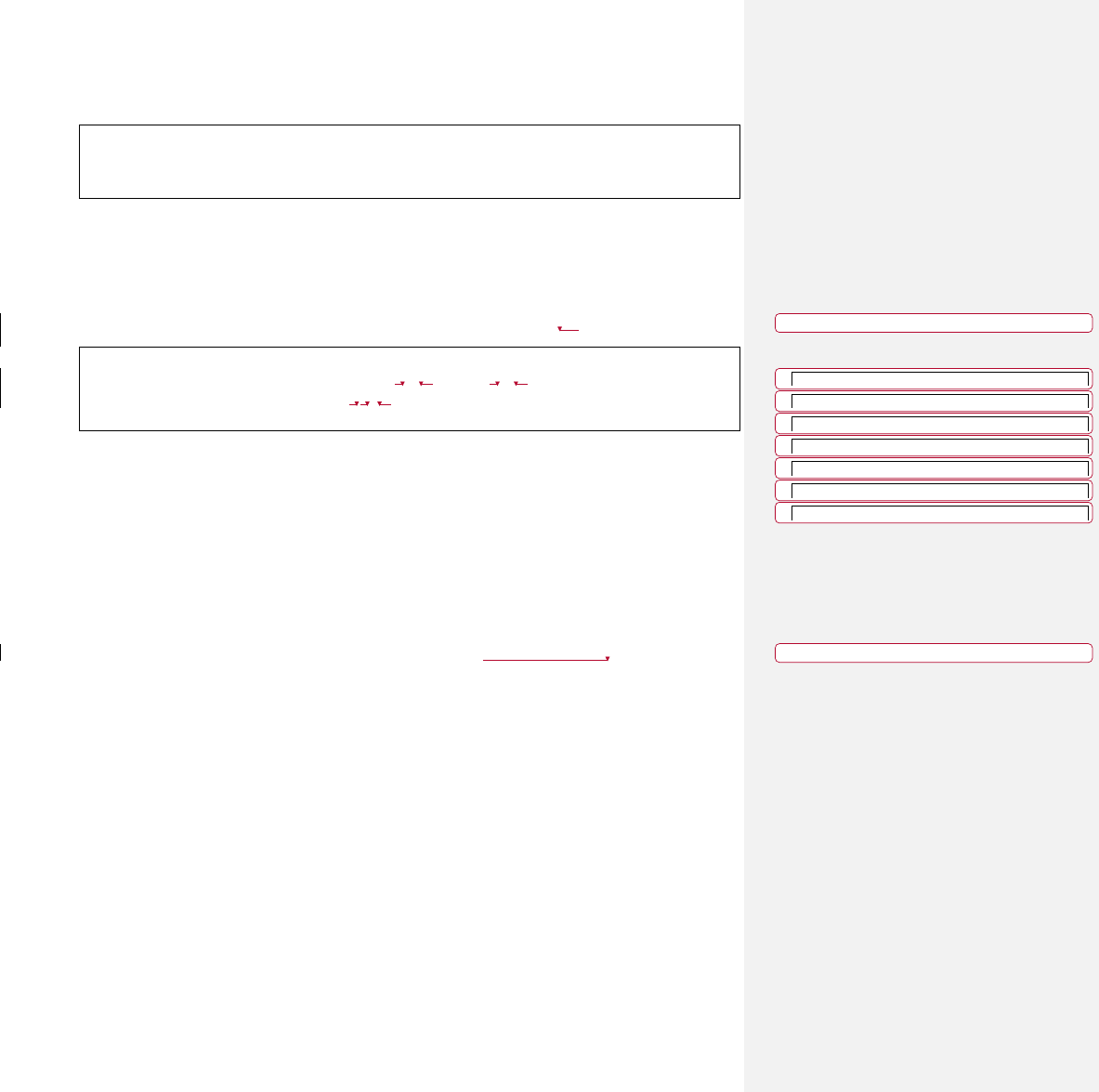
LSG
x+t
= the level secondary guarantee on the valuation date for the insured age x
at issue
Guidance Note: The FFSG
x+t
, ASG
x+t
, and LSG
x+t
are based on the secondary guarantee values as of the
valuation date and will remain constant throughout the cash flow projection. This will result in a constant
lapse assumption, calculated as of the valuation date, that does not vary by duration throughout the cash
flow projection for the NPR calculation.
ii. As of the valuation date, which is t years after issue, the annual lapse rate for the
policy shall be assumed to be level for all future years and denoted as L
x+t
, which
shall be set equal to:
L
x+t
= R
x+t
• 0.01 + (1 – R
x+t
) • 0.005 • r
x+t
Where r
x+t
is the ratio determined in Section 3.B.5.d.iv.2.
Guidance Note: By similar logic, it follows (from ASG
x+t
being 0 when t=0) that the level annual lapse
rate to be used in the calculations in Section 3.B.5.c.i.2 and 3.B.5.c.i.3 is 1%. On the other hand, when
performing the calculations in Section 3.B.5.c.ii.3, L
x+t
,
though level, is not generally equal to what it was
for the same policy on the previous valuation date.
Section 6: Stochastic and Deterministic Exclusion Tests
B. Deterministic Exclusion Test (DET)
5. For purposes of determining the valuation net premiums used in the demonstration in Section 6.B.2:
a. If pursuant to Section 2, the NPR for the group of policies is the minimum reserve required
under VM-A and VM-C, then the valuation net premiums are determined according to
those minimum reserve requirements.
b. If the NPR is determined according to Section 3.B.4 or Section 3.B.5, then the lapse rates
assumed for all durations shall for the purposes of the DET be set to 0%;
Deleted: i
Deleted: 6
Deleted: i
Deleted: 6
Deleted: ii
Deleted: 6
Deleted: d
Deleted: i
Deleted: A.1
© 2021 National Association of Insurance Commissioners
98
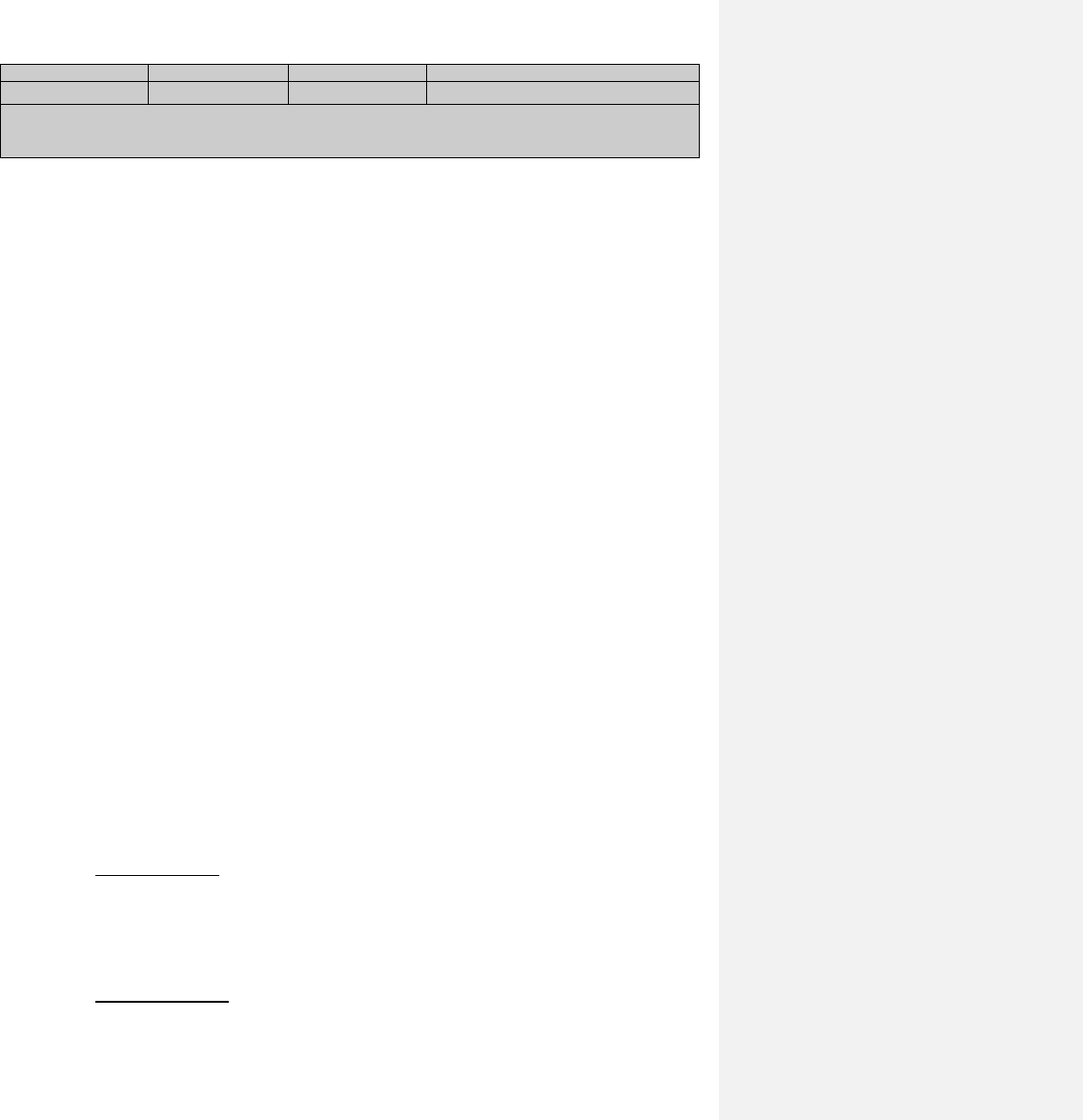
Dates: Received
Reviewed by Staff
Distributed
Considered
5/18/21
JF
Notes: APF 2021-09
Life Actuarial (A) Task Force/ Health Actuarial (B) Task Force
Amendment Proposal Form*
1. Identify yourself, your affiliation and a very brief description (title) of the issue.
Identification:
PBR Staff of Texas Department of Insurance
Title of the Issue:
1. Address determination of materiality. VM-21 often refers to materiality but is missing a discussion
on how materiality is determined.
2. Address use of approximations and simplifications in VM-21.
2. Identify the document, including the date if the document is “released for comment,” and the location in
the document where the amendment is proposed:
VM-21 Section 1.E (new), VM-21 Section 3.H (new), VM-31 Section 3.E.1, VM-31 Section 3.F.2.e
January 1, 2021 NAIC Valuation Manual
3. Show what changes are needed by providing a red-line version of the original verbiage with deletions and
identify the verbiage to be deleted, inserted or changed by providing a red-line (turn on “track changes” in
Word®) version of the verbiage. (You may do this through an attachment.)
See attached.
4. State the reason for the proposed amendment? (You may do this through an attachment.)
1. VM-21 often refers to materiality but is missing a discussion on how materiality is determined (a
materiality standard), as VM-20 has in VM-20 Section 2.H. Moreover, the current language of
Materiality in the VA Summary in VM-31 Section 3.E.1 (2021 edition) is based on the Life PBR
Summary in VM-31 (2019 edition). The language of Materiality in the VA Summary in Section 3.E.1
of VM-31 should be updated, consistent with adding a new section to VM-21 to address materiality.
For reference, here are the relevant VM-20 passages:
VM-20 Section 2.H
The company shall establish, for the DR and SR, a standard containing the criteria for determining
whether an assumption, risk factor or other element of the principle-based valuation has a material
impact on the size of the reserve. This standard shall be applied when identifying material risks.
Such a standard shall also apply to the NPR with respect to VM-20 Section 2.G.
VM-31 Section 3.C.1
© 2021 National Association of Insurance Commissioners
99
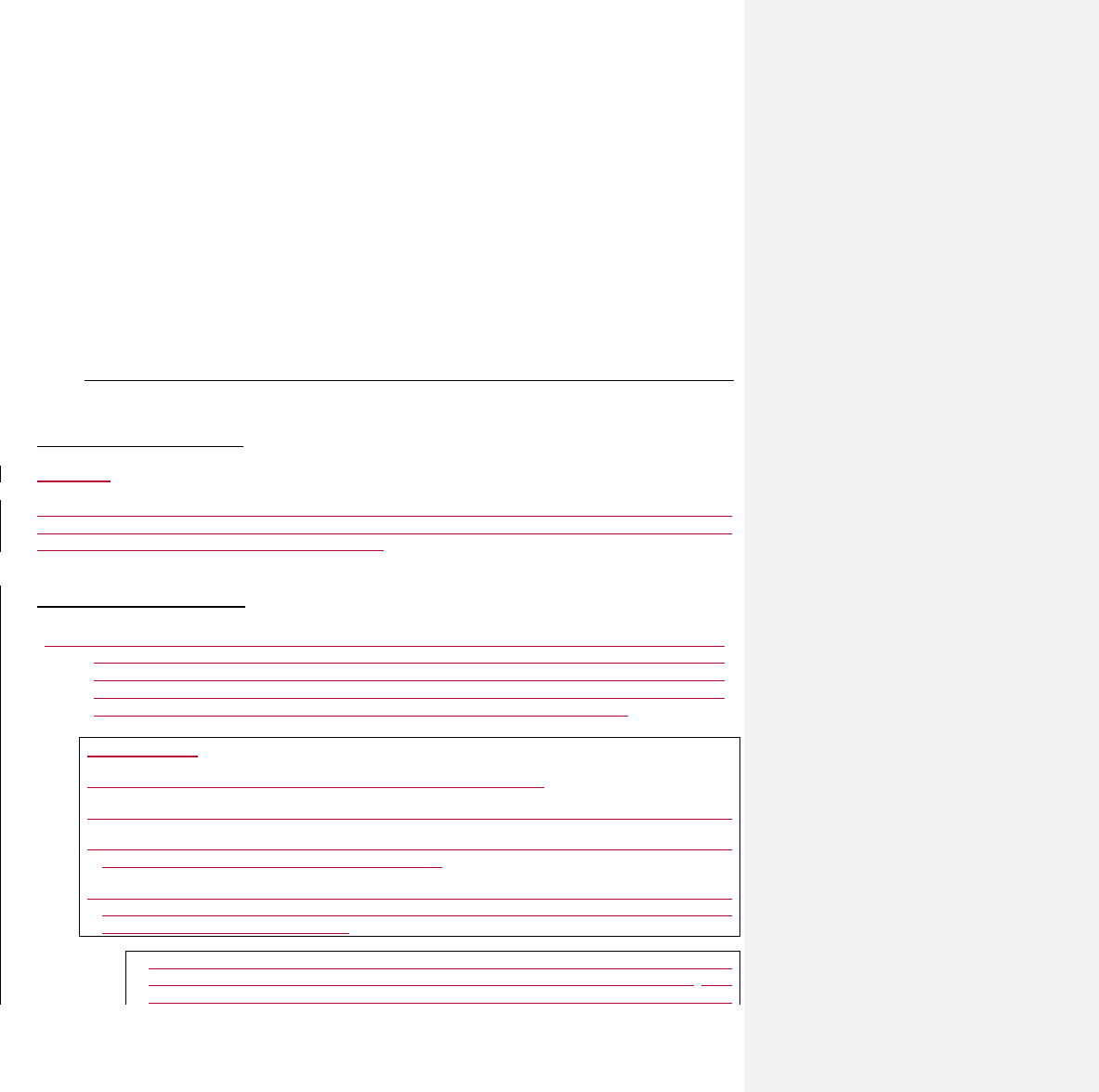
© 2010 National Association of Insurance Commissioners 2
Life Summary –The PBR Actuarial Report shall contain a Life Summary of the critical elements of
all sub-reports of the Life Report as detailed in Section 3.D. In particular, this Life Summary shall
include:
1. VM-20 Materiality – The standard established by the company pursuant to VM-20 Section 2.H.
2. While it is common for companies to use a significant number of approximations, simplifications, and
modeling efficiency techniques for their VM-21 valuation, VM-21 is missing an explicit allowance of
approximations, simplifications, or modeling efficiency techniques. To understand the impact of the
large number of approximations, simplifications, and modeling efficiency techniques, they should be
covered in one location in the PBR reporting for VA, in contrast to the current reporting where they are
scattered throughout the PBR Report. VM-20 Section 2.G does not allow simplifications to bias the
reserve downward. This addresses the concern that a large number of immaterial simplifications could
add up to a material understatement. VM-21 needs an assurance that simplifications do not compound
one another to become material even more than VM-20, due to the very larger number of simplifications
commonly used.
VM-21 Section 1.E (new)
Materiality
The company shall establish a standard containing the criteria for determining whether an assumption, risk factor
or other element of the principle-based valuation has a material impact on the size of the reserve or TAR. This
standard shall be applied when identifying material risks.
VM-21 Section 3.H (new)
H. A company may use simplifications, approximations and modeling efficiency techniques to calculate the
stochastic reserve and/or the additional standard projection amount required by this section if the
company can demonstrate that the use of such techniques does not understate TAR by a material amount,
and the expected value of TAR calculated using simplifications, approximations and modeling efficiency
techniques is not less than the expected value of TAR calculated that does not use them.
Guidance Note:
Examples of modeling efficiency techniques include, but are not limited to:
1. Choosing a reduced set of scenarios from a larger set consistent with prescribed models and parameters.
2. Generating a smaller liability or asset model to represent the full seriatim model using grouping
compression techniques or other similar simplifications.
There are multiple ways of providing the demonstration required by Section 3.H. The complexity of the
demonstration depends upon the simplifications, approximations or modeling efficiency techniques used.
Examples include, but are not limited to:
1. Rounding at a transactional level in a direction that is clearly and consistently conservative or is
clearly and consistently unbiased with an obviously immaterial impact on the result (e.g.,
rounding to the nearest dollar) would satisfy 3.H without needing a demonstration. However,
© 2021 National Association of Insurance Commissioners
100
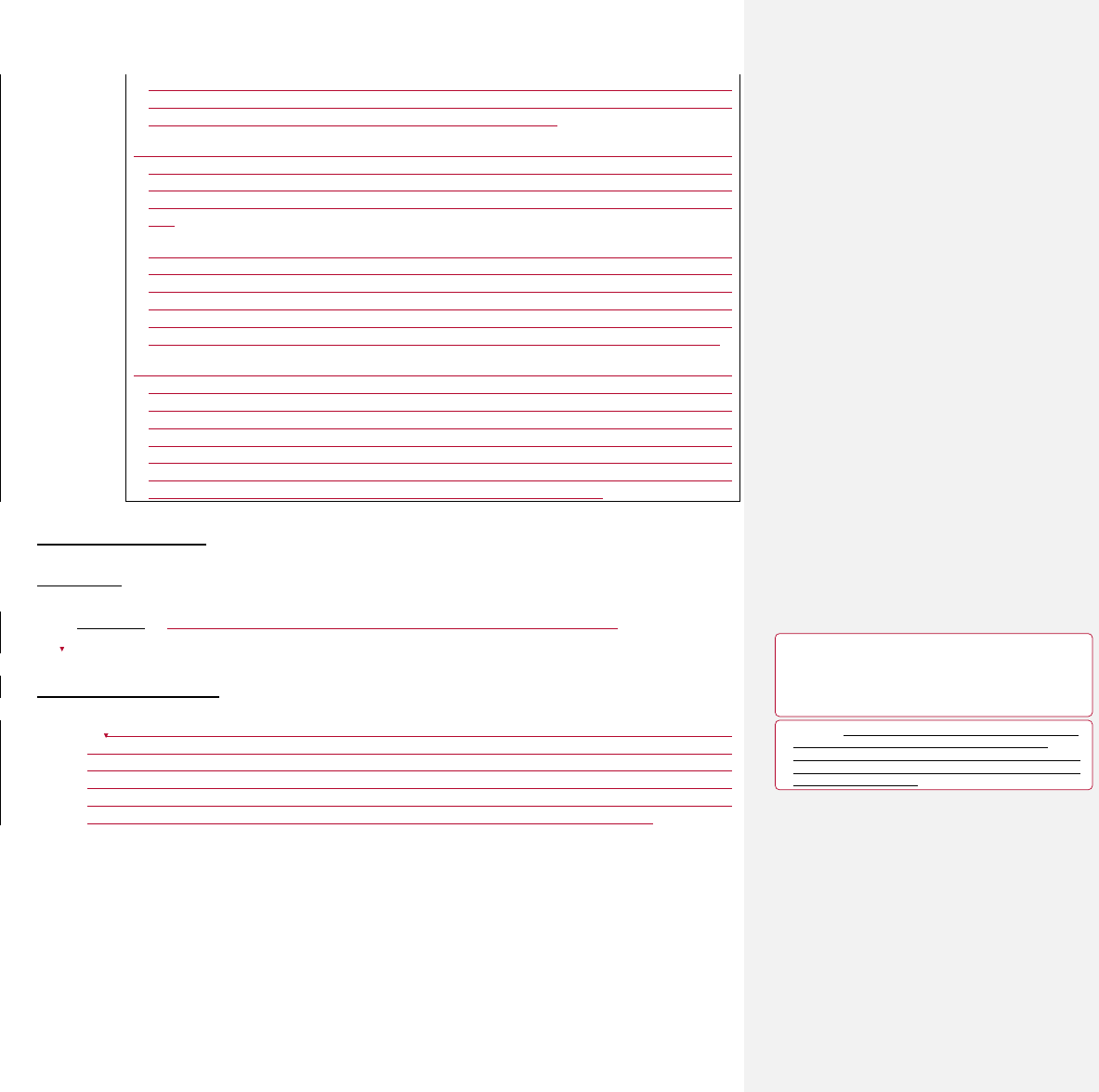
© 2010 National Association of Insurance Commissioners 3
rounding to too few significant digits relative to the quantity being rounded, even in an unbiased
way, may be material and in that event, the company may need to provide a demonstration that
the rounding would not produce a material understatement of TAR.
2. A brute force demonstration involves calculating the minimum reserve both with and without the
simplification, approximation or modeling efficiency technique, and making a direct comparison
between the resulting TAR. Regardless of the specific simplification, approximation or modeling
efficiency technique used, brute force demonstrations always satisfy the requirements of Section
3.H.
3. Choosing a reduced set of scenarios from a larger set consistent with prescribed models and
parameters and providing a detailed demonstration of why it did not understate TAR by a material
amount and the expected value of TAR would not be less than the expected value of TAR that
would otherwise be calculated. This demonstration may be a theoretical, statistical or
mathematical argument establishing, to the satisfaction of the insurance commissioner, general
bounds on the potential deviation in the TAR estimate rather than a brute force demonstration.
4. Justify the use of randomly sampling withdrawal ages for each contract instead of following the
exact prescribed WDCM method by demonstrating that the random sampling method is
materially equivalent to the exact prescribed approach, and the simplification does not materially
reduce the Additional Standard Projection Amount and the final reported TAR. In particular, the
company should demonstrate that the statistical variability of the results based on the random
sampling approach is immaterial by testing different random sets, e.g., if randomly selecting a
withdrawal age for each contract, the probability distribution of the withdrawal age should be
stable and not vary significantly when using different random number sets.
VM-31 Section 3.E.1
VA Summary – The PBR Actuarial Report shall contain a VA Summary of the critical elements of all sub-reports
of the VA Report as detailed in Section 3.F. In particular, this VA Summary shall include:
1. Materiality – The Standard established by the company pursuant to VM-21 Section 1.E.
VM-31 Section 3.F.2.e
e. Approximations, Simplifications, and Modeling Efficiency Techniques – A description of each
approximation, simplification or modeling efficiency technique used in reserve or TAR calculations, and a
statement that the required VM-21 Section 3.H demonstration is available upon request and shows that: 1)
the use of each approximation, simplification, or modeling efficiency technique does not understate TAR
by a material amount; and 2) the expected value of TAR is not less than the expected value of TAR
calculated without using the approximation, simplification, or modeling efficiency technique.
Deleted: A description of the rationale for determining whether a
decision, information, assumption, risk or other element of a
principle-based valuation under VM-21 has a material impact on
the modeled reserve. Such rationale could include criteria such as a
percentage of reserves, a percentage of surplus, and/or a specific
monetary value, as appropriate.
Deleted: Approximations and Simplifications – Description of
any approximations and simplifications used in cash flow
projection calculations and not described in a different section of
this report, including documentation that these did not materially
reduce the resulting reserve.
© 2021 National Association of Insurance Commissioners
101
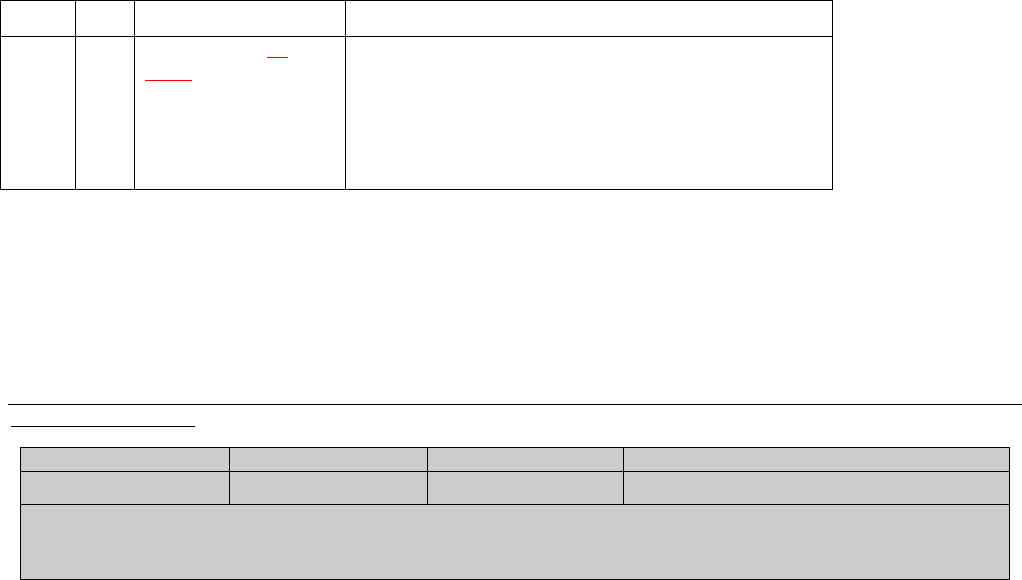
© 2010 National Association of Insurance Commissioners 1
Life Actuarial (A) Task Force/ Health Actuarial (B) Task Force
Amendment Proposal Form*
1. Identify yourself, your affiliation and a very brief description (title) of the issue.
Angela McNabb & Pat Allison – NAIC staff support
2. Identify the document, including the date if the document is “released for comment,” and the location in the
document where the amendment is proposed:
January 1,2021, version of the Valuation Manual – VM-51 Appendix 4
3. Show what changes are needed by providing a red-line version of the original verbiage with deletions and identify
the verbiage to be deleted, inserted or changed by providing a red-line (turn on “track changes” in Word®) version
of the verbiage. (You may do this through an attachment.)
ITEM L DATA ELEMENT DESCRIPTION
11 1 Smoker Status (at
issue)
Smoker status should be submitted where reliable.
0 = Unknown
1 = No tobacco usage
2 = Nonsmoker
3 = Cigarette smoker
4 = Tobacco user
4. State the reason for the proposed amendment? (You may do this through an attachment.)
In the event that additional underwriting is done after issue, it is possible that the preferred class would be
inconsistent with the smoker status at issue. By removing the “at issue” specification, the smoker status would then
be the current smoker status.
* This form is not intended for minor corrections, such as formatting, grammar, cross–references or spelling. Those types of changes do not require action by
the entire group and may be submitted via letter or email to the NAIC staff support person for the NAIC group where the document originated.
NAIC Staff Comments:
Dates: Received
Reviewed by Staff
Distributed
Considered
6/3/2021
RM
Notes: APF 2021-10
W:\National Meetings\2010\...\TF\LHA\
© 2021 National Association of Insurance Commissioners
102
